Planning a 14-day Ireland itinerary can be a pain in the backside… So, we’ve done all of the hard work for you!
We’ve spent 25+ years travelling around Ireland and the itinerary below leans on that experience and the many mistakes we made along the way!
In a nutshell, this 14-day itinerary:
- Starts and ends in Belfast City
- Has been meticulously planned
- Has an hour-by-hour itinerary for each day to save you time/hassle
- Follows logical routes that take you to hidden gems, tourist favourites and great pubs and restaurants
Who this itinerary will suit

Now, before you scroll down, take 10 seconds to look at the graphic above – each of our road trip itineraries have been tailored to specific needs.
This road trip is specifically for those of you:
- Starting in/near Belfast City
- Using public transport and organised tours
- Looking to explore at a slow pace
- With a good level of fitness (i.e. it includes long walks and hikes)
- Remember, we have hundreds of different itineraries here if this one doesn’t suit you
An overview of this 2-week Ireland itinerary

Click here for a high resolution map
The map above gives you a very high-level overview of where this route will take you.
It uses several bases (e.g. Cork for 3 nights) and provides you with day-long road trips you can head off on, so you avoid having to change accommodation constantly.
Now, I’ll stop rambling on – here’s a day-by-day insight into each of the days below!
Day 1: Discovering Belfast City: Northern Ireland’s Capital
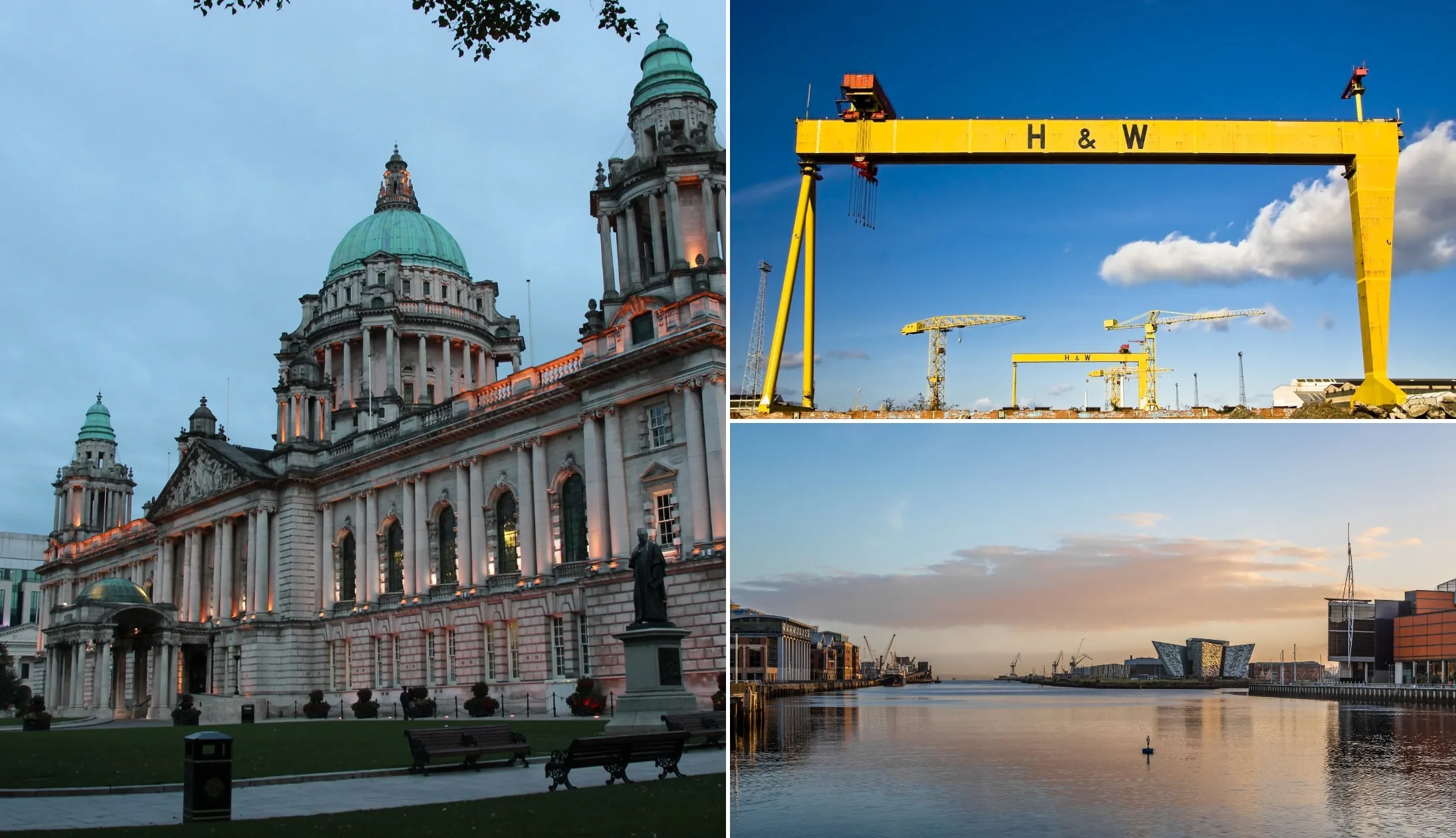
Photos via Shutterstock
It’s day one, so welcome to Belfast, the capital of Northern Ireland, and the start point of your epic 14-day tour of Ireland!
For today, we’re going to assume that you’ve arrived in the city in the early afternoon, giving you ample time to grab lunch and take in a couple of attractions.
First of all, you’ll probably want to check into your accommodation. You’ll be spending three nights in Belfast, and there are plenty of great hotels and guest houses to choose from. Below, we’ve listed some of our top choices for every budget.
Our Belfast accommodation recommendations
- Budget: Vagabonds Hostel(in the city centre with top reviews) and Amica Guesthouse (short bus/drive from city centre with great reviews)
- Mid-range: Ten Square Hotel and Maldron Hotel Belfast City (both are super central with exceptional reviews)
- Luxury: The Fitzwilliam and The Merchant (both gorgeous, high-end hotels at the heart of the action)
Stop 1: Getting from the airport to the city
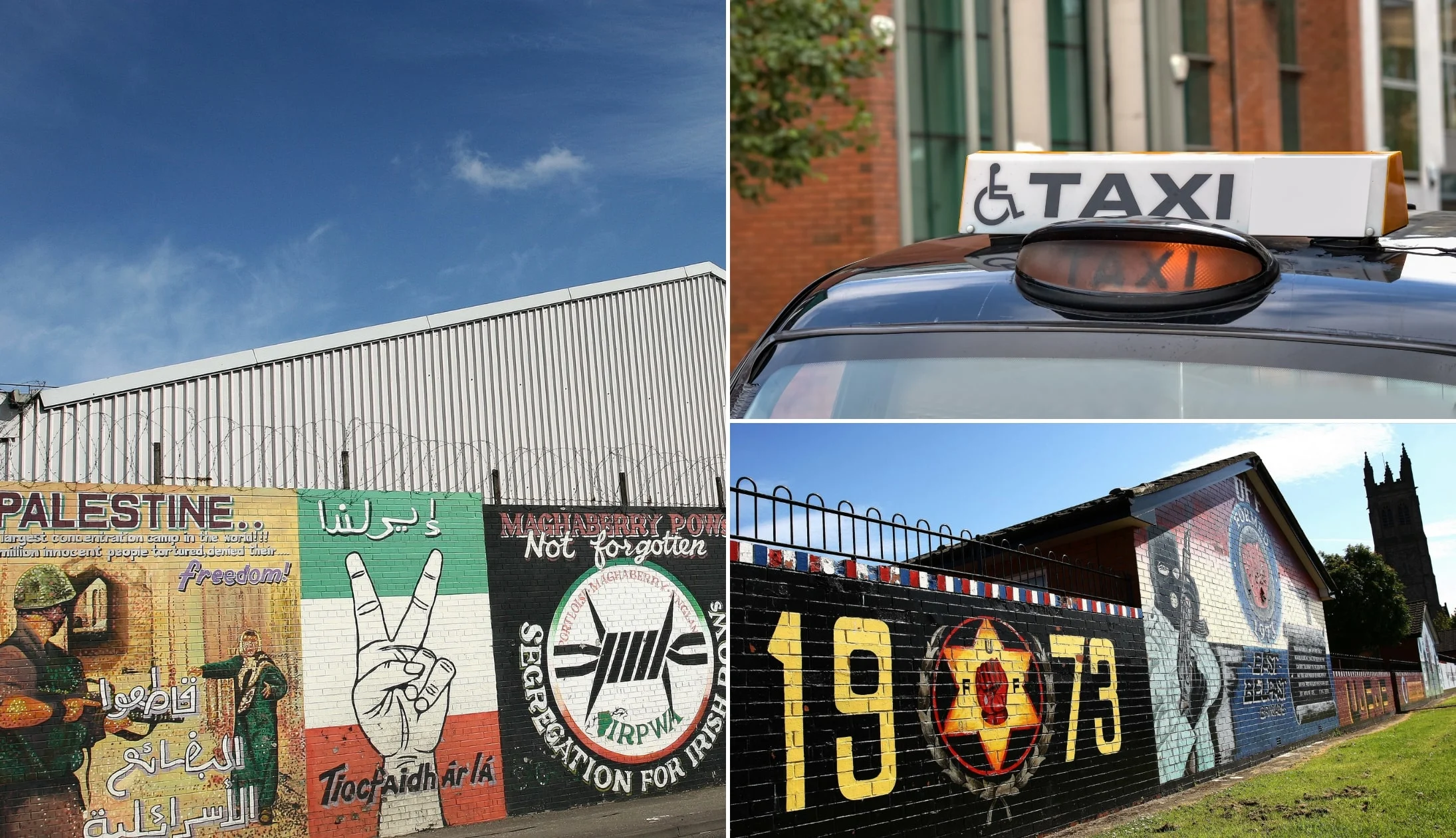
Photos via Shutterstock
With accommodation booked, you’ll need to know the best way into the city from the airport.
That all depends on which airport you’re flying to. George Best Belfast City Airport is much closer, but also much smaller, and typically only handles domestic flights from the UK and Ireland.
Belfast International Airport (BFS), is approximately 20 miles from Belfast city centre and handles both international and domestic flights.
Here are your options for both.
Getting from the airport to the city
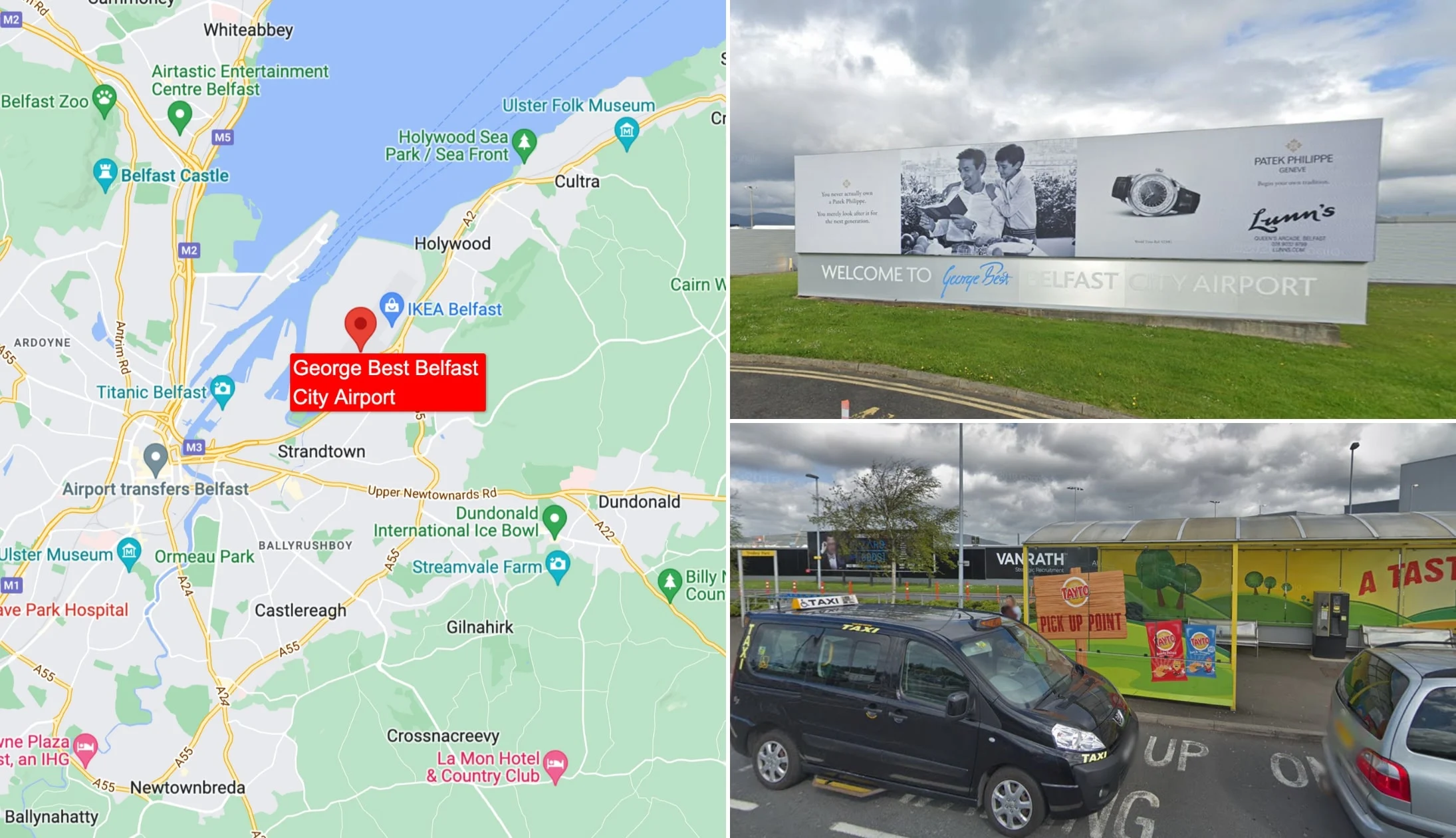
Photos via Google Maps
Getting to Belfast from the city airport using public transport is quick, easy, and affordable. We’ve outlined three options below.
Option 1: Bus
The Airport Express 600 Service operates from right outside the main doors of the airport to the Europa Bus Terminal in Belfast. It operates every 30 minutes, 7 days a week and takes around 10 minutes to get to the city centre. You can buy the ticket from the driver or at the tourist information desk at the airport, and they cost £2.60 (€3.00) one way.
The bus is definitely the cheapest and most convenient option, but you may need an additional mode of transport to get you to your accommodation.
Option 2: Train
There is a NI Railways train (line 1) that will take you from the airport’s Sydenham train station to the city every hour. It’s a very quick 10 to 20-minute journey depending on the station you jump off at, and is reasonably priced. The train terminates at Great Victoria Street Station, which is very central, or you can jump off earlier at Lanyon Place (Belfast Central Station), close to St. George’s Market and the town centre.
However, wait times can be long, and you’ll need to walk 15 minutes to get to the station. Like the bus, you may still need an additional mode of transport to get you to your accommodation.
Option 3: Taxi
You can hire a taxi at the airport to take you to the city. It takes around 10 minutes and costs around £38 depending on where you’re going exactly. Unlike the other options, you can get straight to your accommodation, so if you’re carrying a lot of luggage, it could be worth the extra cost.
From Belfast International Airport (BFS)
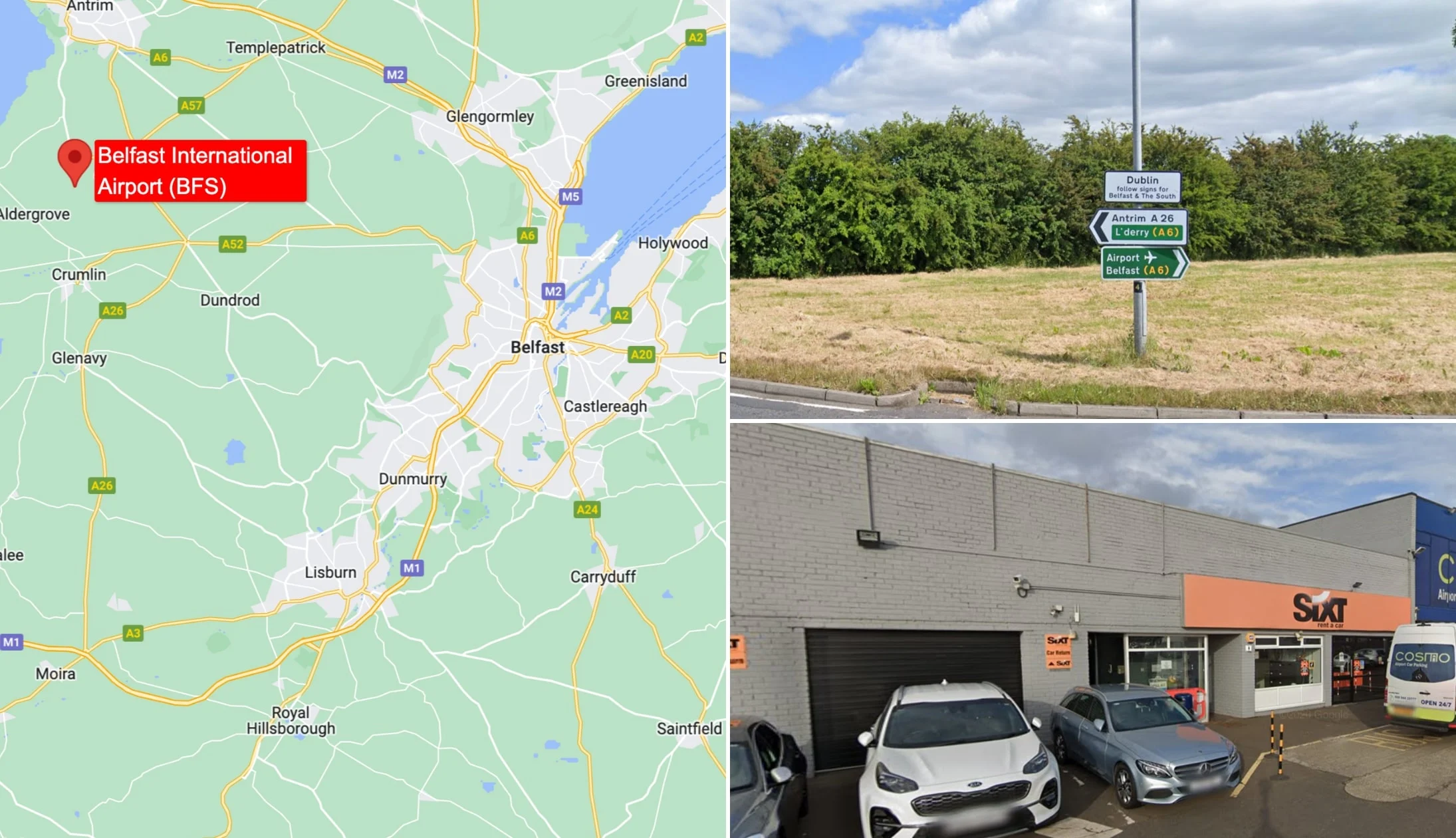
Photos via Google Maps
Getting to Belfast from the international airport using public transport is also easy and affordable. By far the best option is the Airport Express.
The Airport Express
The Airport Express 300/300a Service operates from right outside the main doors of the airport and goes to the Europa Bus Terminal in the centre of Belfast. It operates every 15 to 20 minutes or so, 7 days a week and takes around 45 minutes to get to the city centre.
You can buy the ticket onboard from the driver, at the airport from the Translink Ticket Vending Machine, or from the Visit Belfast information desk. Tickets cost £8 (€10.00) one way.
Stop 1: Lunch
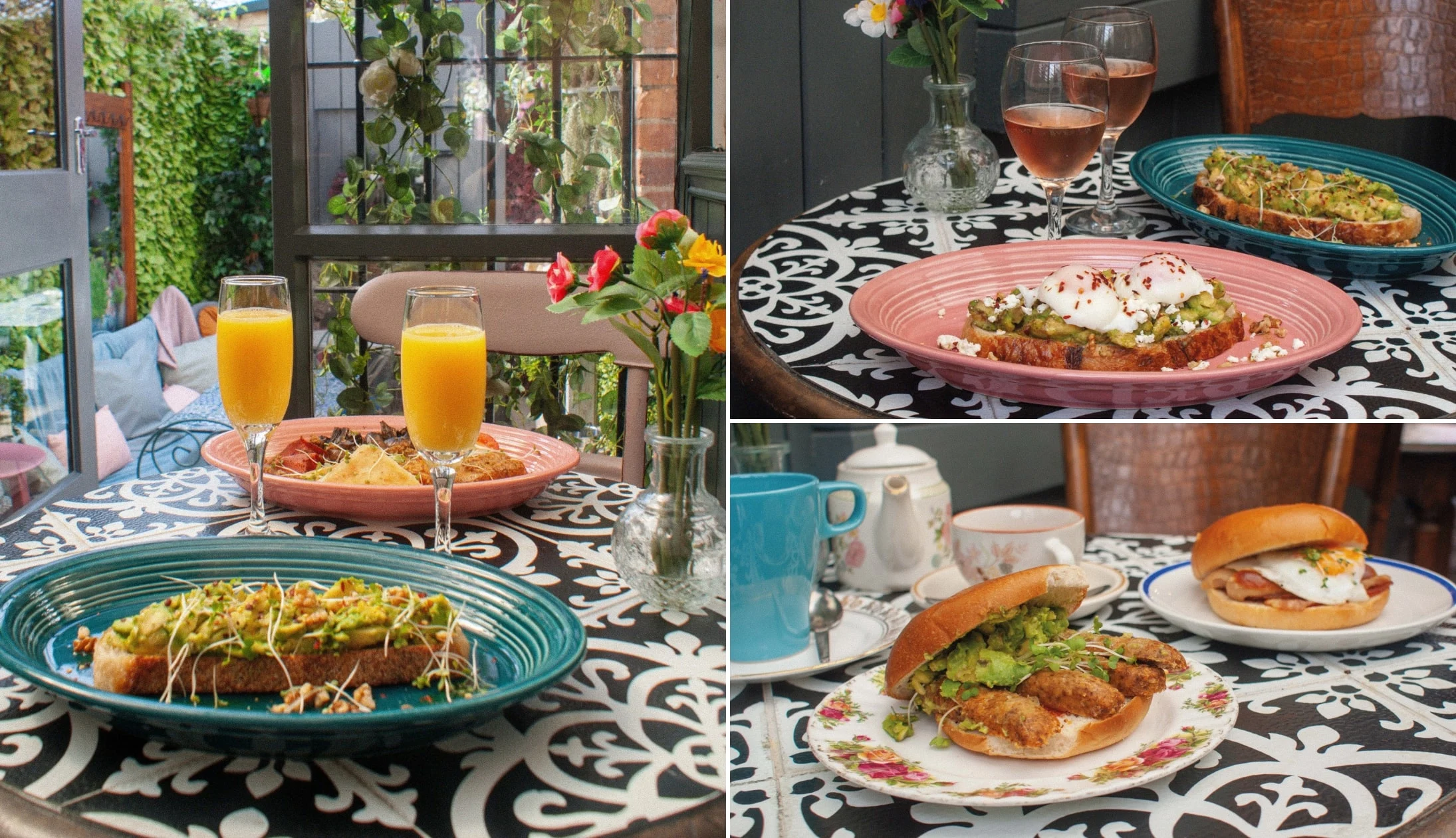
Photos via The Lamppost Cafe on FB
You’ll probably have a mighty hunger after all that travelling. Fortunately, there’s no shortage of stunning places to eat out, especially in the city centre. So, first things first, head to the heart of town. Once you’re there, you’ll find no end of cafes, restaurants, and pubs that are sure to satisfy your hunger.
Almost any good pub will do traditional Irish fayre, so if you’re looking for gorgeous soda bread, seafood, stews, and much more, you’ll have plenty of choices. Burger fans should definitely check out Bunsen on Hill Street. With a small, carefully curated menu, you can’t go wrong. Blu is another great choice, with a sleek and modern menu that caters to everyone, although for us, it’s hard to resist the steaks!
Stop 2: Crumlin Road Gaol
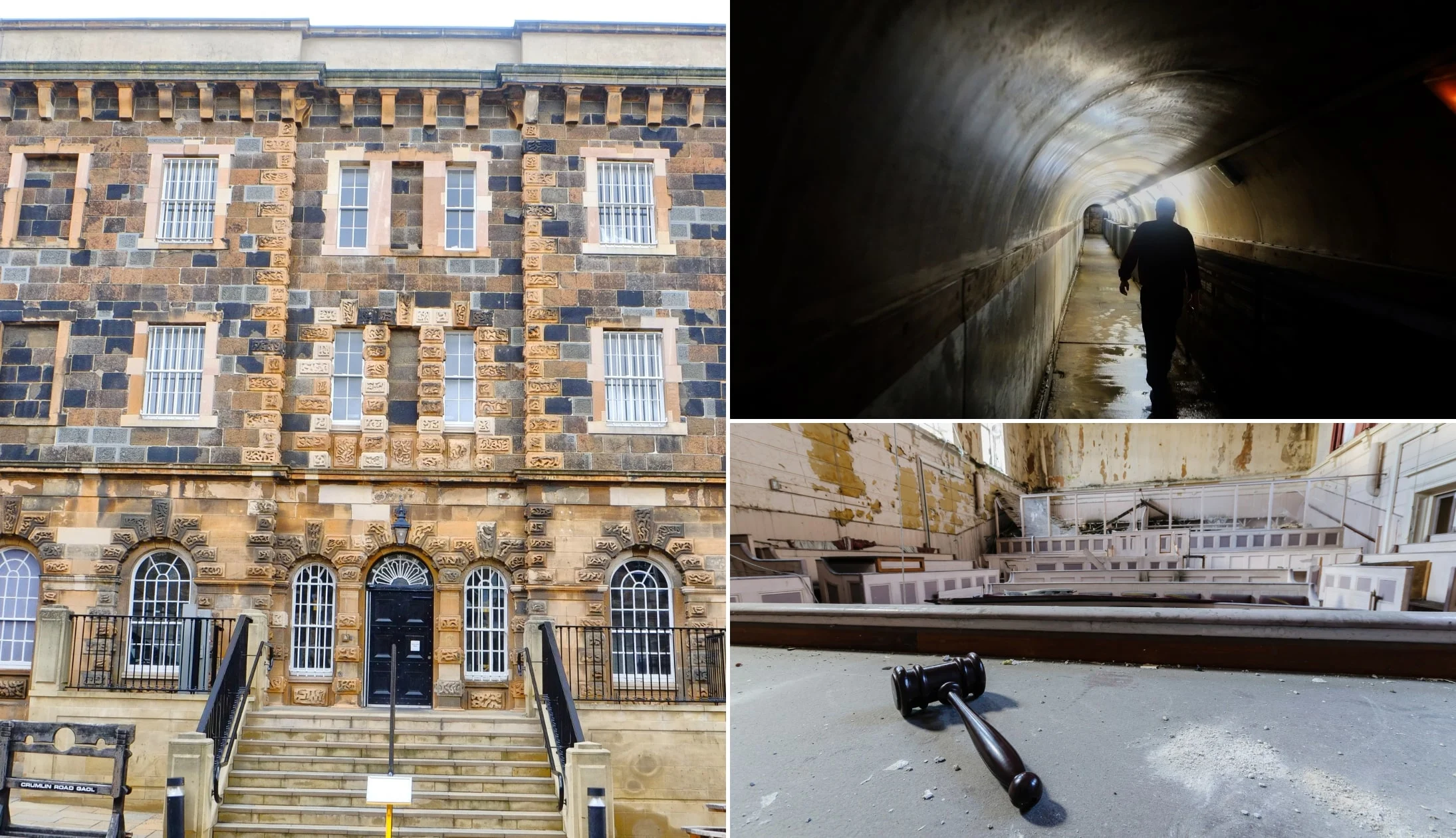
Photos via Shutterstock
After a good feed, it’s time to take in some local attractions. Crumlin Road Gaol is a leisurely 16-minute walk away from the city centre. The self-guided tour takes you on a 70-minute journey through the tunnels and corridors that make up the 150-year-old prison. Complete with information boards and videos, you’ll get to see various parts of the old gaol, including the holding cells, execution chamber, and the prison graveyard.
Stop 3: Belfast Black Cab Tour

Photos via Shutterstock
The Belfast Black Cab tour offers an incredible experience that shouldn’t be missed. Each of the tour guides lived through the Troubles, lending real-life experience to the tours. You’ll pass through various parts of Belfast that you might not feel comfortable visiting by yourself. All the while, your guide will regale you with stories and first-hand accounts of the history behind each place.
You’ll also see a lot of fantastic murals and other sights, like the iconic Belfast Peace Wall. It’s a great way to learn more about Belfast’s long, rich, and sometimes sad history. Tours depart from Jurys Inn on Victoria Road, which is about a 23-minute walk from Crumlin Road Gaol.
Stop 4: Dinner, drinks and live music
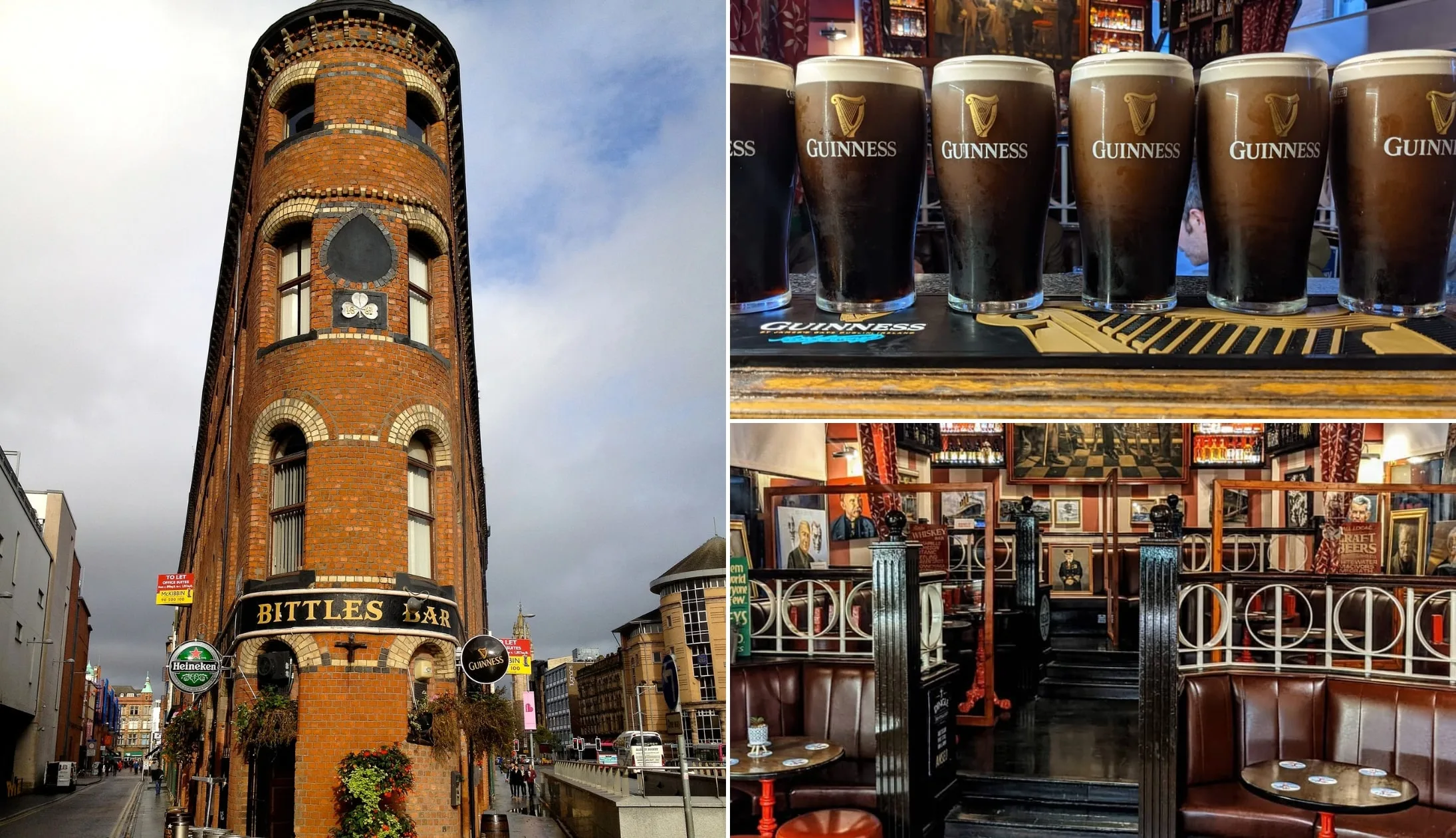
Photo left: Silvia Franceschetti (CC BY-SA 3.0). Others via Bittle’s Bar on FB
At the end of the Black Cab Tour, you’ll be dropped off back in the Cathedral Quarter, in the heart of the city.
You’ll find tons of options for food, drink, entertainment, and plenty of live music here, so whether you go back to your accommodation to freshen up first or head straight out is up to you.
Our Belfast food recommendations
There’s some outstanding restaurants in Belfast City. First up, Deanes is a Belfast institution and a must-visit while you’re in the city. There are three venues to choose from, each focusing on something different; Deanes Meat Locker, Deanes Love Fish, and Deanes at Queens.
Whichever you choose, you’re in for a fine feed. EDO is another favourite of ours, a stunning tapas and cocktail bar with incredible sharing platters.
Or, for a fancy first meal in Ireland, head to The Ginger Bistro, near the Belfast Opera House. Their menu is out of this world, though that’s no surprise when you consider it was voted the best restaurant in Northern Ireland.
Our Belfast pub recommendations
There are countless incredible pubs and bars in Belfast for a tasty after-dinner tipple. Check out traditional options like the unmistakable Bittles Bar, with its stunning range of local beer and Irish whisky.
The Duke of York is another old-school boozer, walls adorned with knick-knacks from yesteryear and serving up a fine pint of Guinness.
Finally, we couldn’t forget Madden’s Bar, a cosy, traditional pub complete with a roaring wood-burning stove and a friendly atmosphere. Somewhat overlooked, it’s a hidden gem, beloved by those in the know!
Traditional musicians from across Ireland come to play at Kelly’s Cellars every Tuesday, Wednesday, Thursday, and Saturday.
Other fantastic options for music include Fibber Magees, another charmingly old-fashioned pub with a lively atmosphere, and the John Hewitt.
Day 2: The Causeway Coast
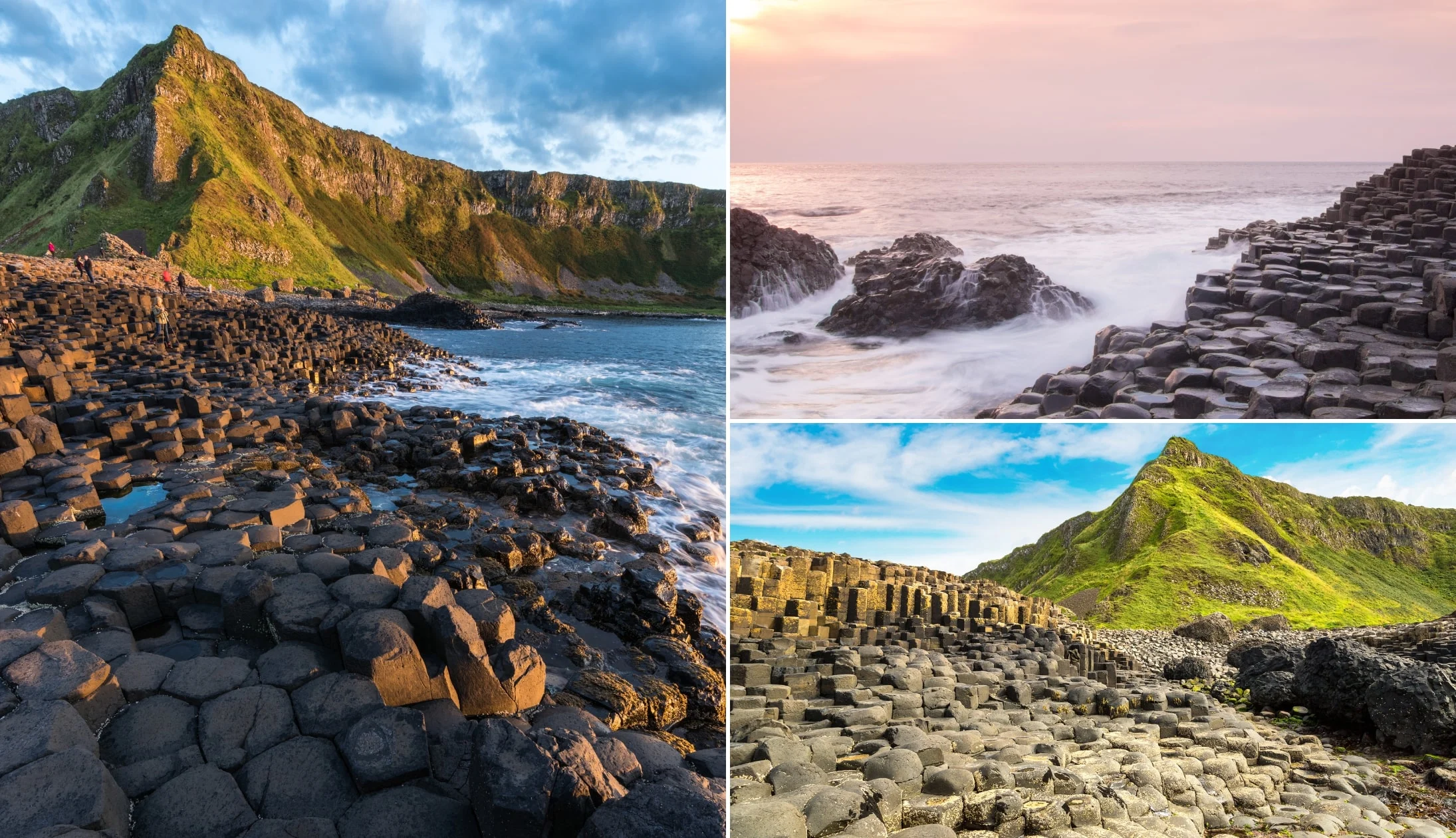
Photos via Shutterstock
After a fantastic first day enjoying the sights of the city, it’s time to hit the road and check out the incredible Causeway Coastal Route.
There are a bunch of tours to choose from, including ones that bring you to the Game of Thrones locations. We’ve picked this one that just does a full-day trip to the Giants Causeway while taking in a clatter of attractions along the way.
Grab a bit of breakfast beforehand. We’d heartily recommend the Lamppost Cafe on Newtownards Road for a slap-up cooked Irish breakfast—they also have a cooked vegan breakfast. Alternatively, check out the Grapevine in the Cathedral Quarter for porridge, bagels, baps, and breakfast burritos.
Stop 1: Carrickfergus Castle
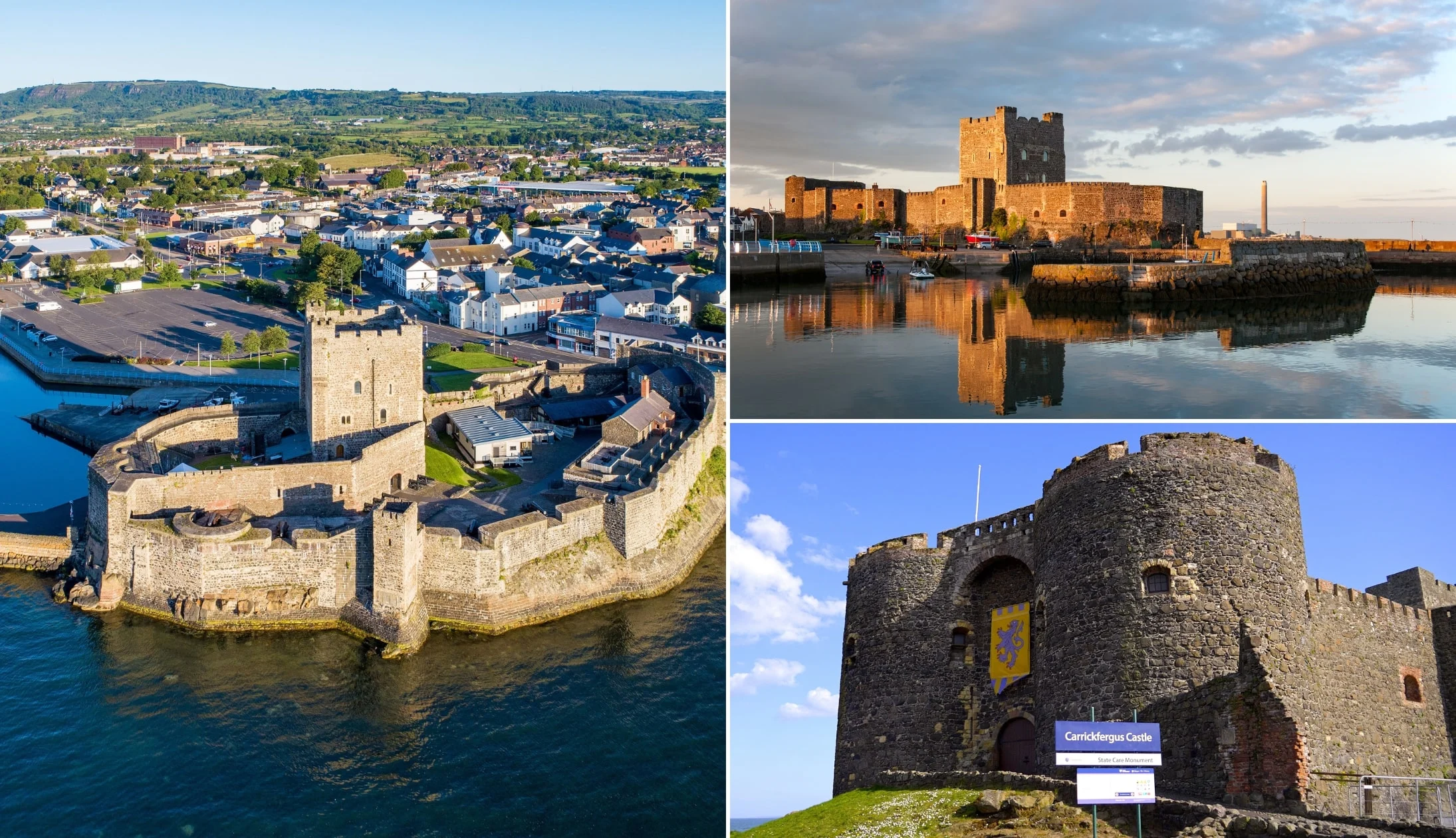
Photos via Shutterstock
Carrickfergus Castle is one of the most well-known and best-preserved castles in Ireland. It’s just 25 minutes from Belfast City Centre, making it an ideal first stop on your way to the Causeway Coast. While you won’t be going in for the tour, you’ll get plenty of time to enjoy the surroundings and get some photos.
Dating back to the 12th Century, this epic fortress boasts huge walls that protect it from the sea, plus a number of mighty towers. It’s been the site of countless battles over the years and it’s no surprise that it’s home to a ghost.
Stop 2: Cushendun Caves
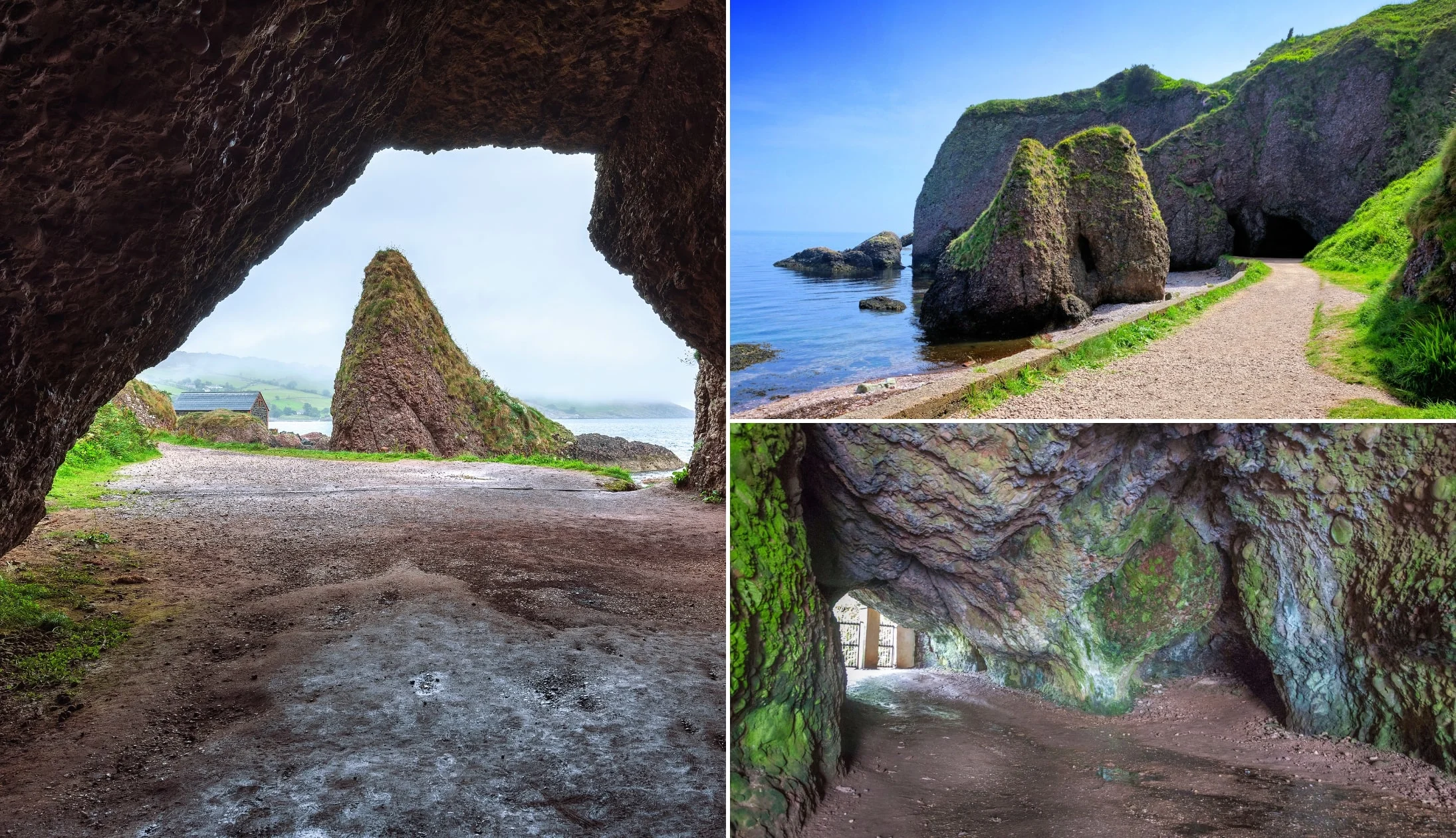
Photos via Shutterstock
The coast road is absolutely stunning between Carrickfergus Castle and your next stop, Cushendun Caves, with sights like the epic Black Arch along the way.
Formed over hundreds of millions of years, these days, the caves are most famous for appearing in the Game of Thrones series. The caves formed the backdrop for the Stormlands and were the setting for a couple of important scenes from the series in season 2 and again in season 8. This explains why you’ll find plenty of GoT fans heading out to explore this spot.
While the place is incredibly impressive to explore, it’s not an overly large area and most people only spend about 15-20 minutes getting around them. It’s also completely free to visit, which makes it a nice stop on the Causeway Coastal Route.
Stop 3: Carnlough
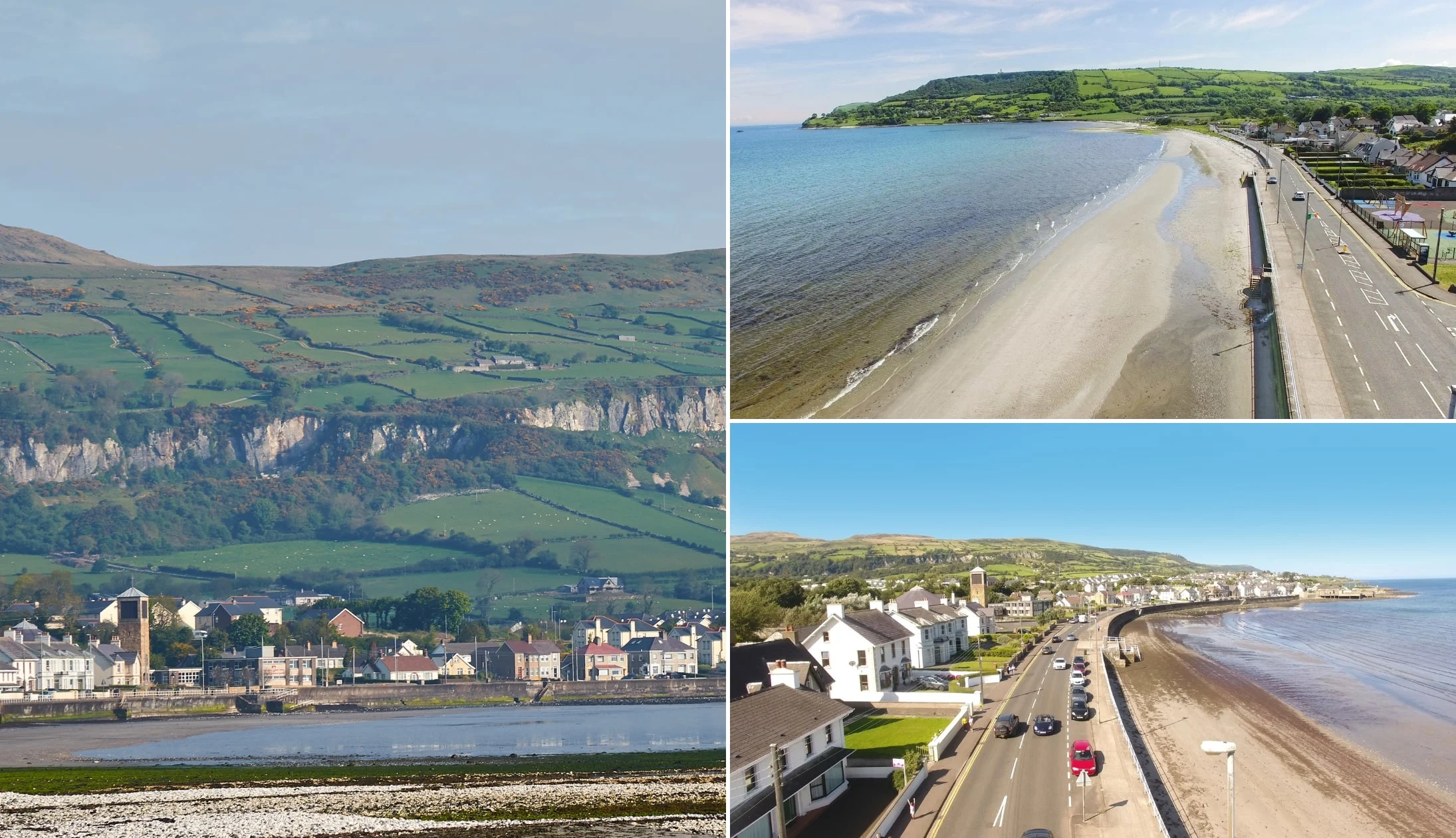
Photos via Shutterstock
The charming village of Carnlough is a top place to visit, and it’s located at the foothills of Glencloy. One of the 9 Glens of Antrim, it’s famed for its beautiful harbour, from which small fishing vessels and pleasure boats set out to sea.
The harbour was another Game of Thrones filming location and was used in several scenes in the show. If time allows, it’s worth strolling through the village and enjoying the gorgeous views from the waterfront.
Stop 4: Ballintoy for Lunch
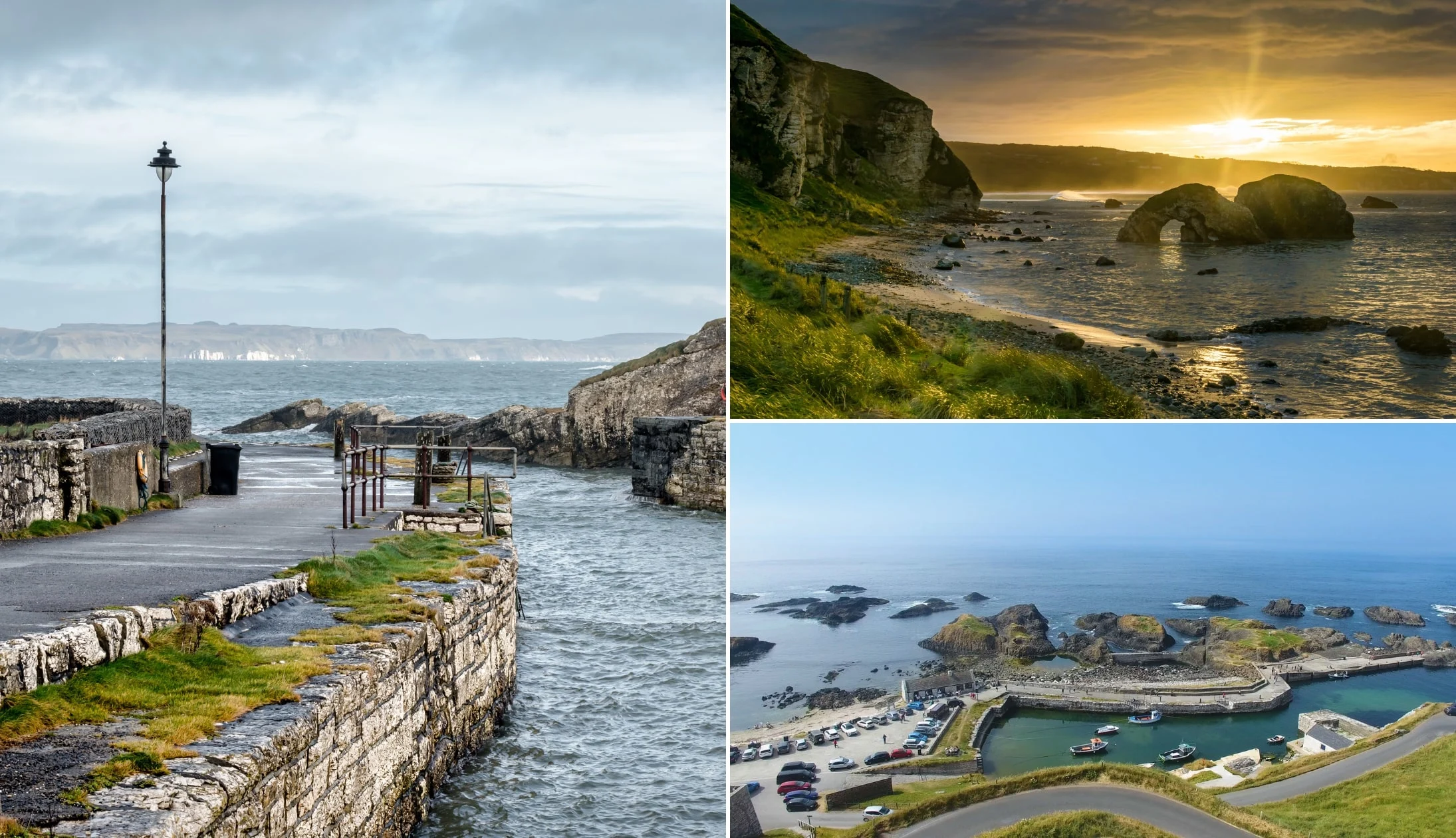
Photos via Shutterstock
The quirky Ballintoy Harbour is one of the more well-trodden stop-offs on the Causeway Coastal Route. Based in the picturesque village of the same name, Ballintoy Harbour is home to everything from sea stacks and rocky islands to amazing cliff tops and more. Of course, there’s a Ballintoy Harbour Game of Thrones link too! It was one of several filming locations and was used for the exterior Pyke shots and to stand in as the Iron Islands.
For lunch, you’ll be heading to the Fullerton Arms where you’ll find a stunning menu that takes in a range of fresh seafood dishes, as well as steaks, pasta, burgers, pies, and much more. Whenever we visit, the Strangford Rope Mussels served with Irish wheaten bread are a must, available in a variety of sauces.
Stop 5: Giants Causeway

Photos via Shutterstock
The legendary landscape of the Giants Causeway boasts more than 40,000 basalt pillars, jutting proudly out from the sea. In Irish folklore, the path was used by the hero Fionn Mac Cumhaill to get to Scotland, where he fought an enemy giant.
It was formed more than 60 million years ago and has been studied by geologists for more than 300 years, making it one of the most important and unique nature reserves on earth. You’ll spend some time climbing over the ancient stones, while your guide regales you with the myths and legends that surround this world-famous attraction.
Stop 6: Dunluce Castle
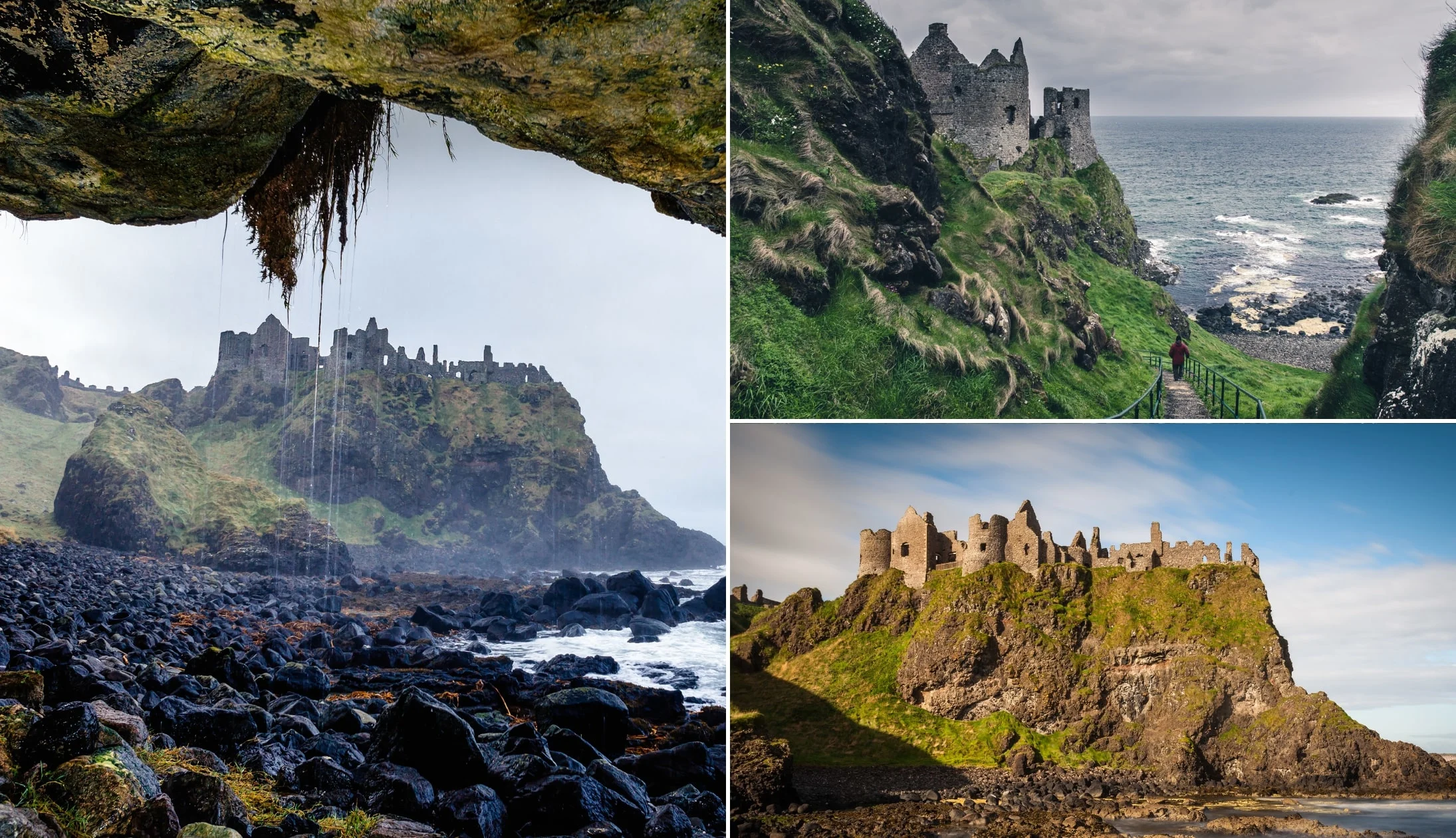
Photos via Shutterstock
Your next stop is the legendary Dunluce Castle. It’s a fantastic place to wander around, taking in the castle ruins and getting some nice photos. The castle dates back to the 1500s and is rich in history. Of course, there are several legends, most notably the Dunluce Banshee, whose wails and screams are said to haunt the Northeast Tower. It’s another top spot for Game of Thrones fans, too—the castle served as the Greyjoy fortress on the Iron Isles.
Stop 7: The Dark Hedges
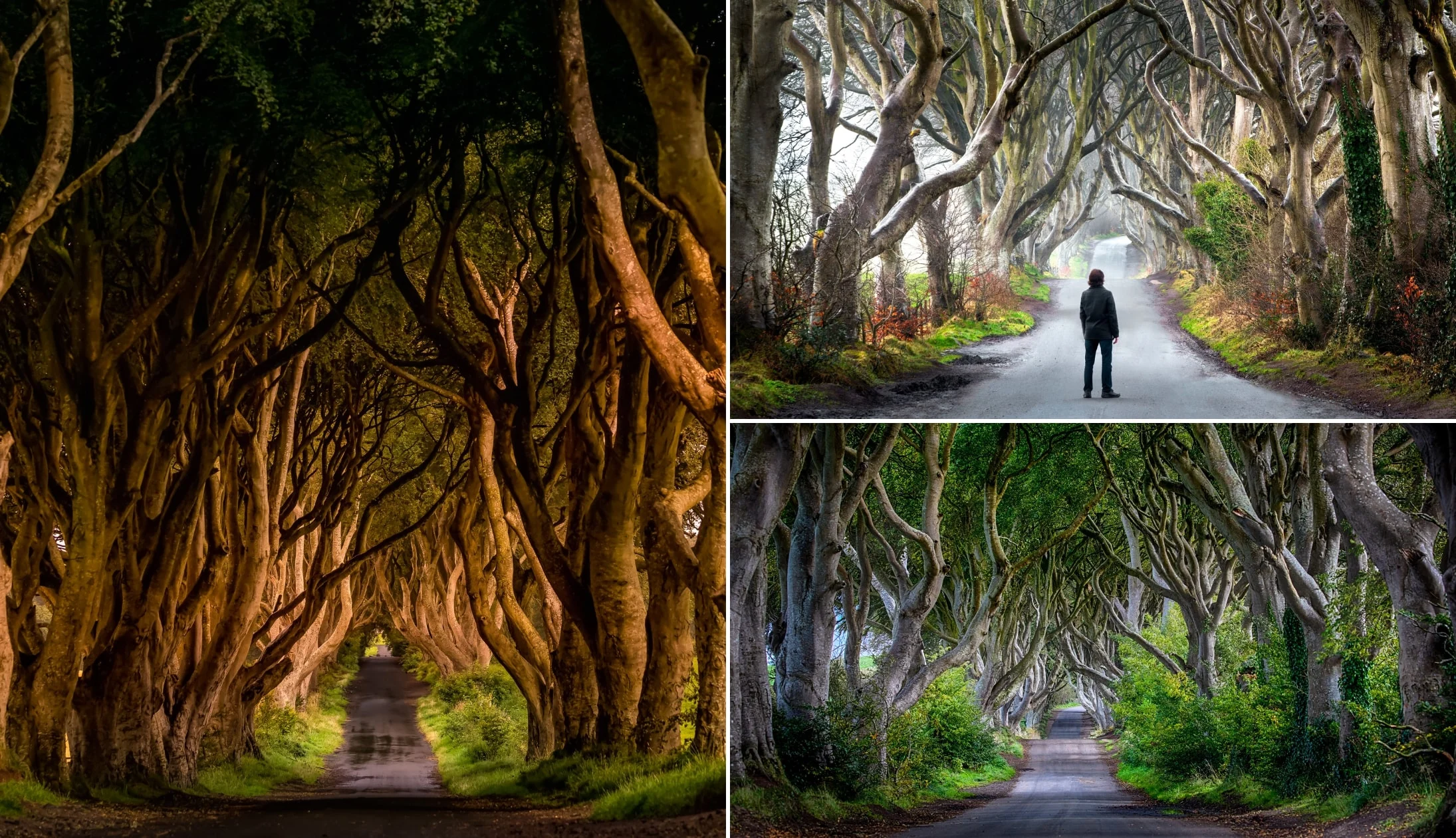
Photos via Shutterstock
Your final stop before heading back to Belfast is the epic Dark Hedges. It’s here that you’ll find an avenue lined with 150 beech trees that has delighted photographers, painters and directors for many a year.
Once again, there’s a big aul Dark Hedges Game of Thrones link! If you’re a fan of the insanely successful HBO series, then you’ll probably recognise the Dark Hedges as ‘The Kings Road’. The avenue features in Season 2, Episode 1: ‘On the King’ s Road’. The Dark Hedges were featured during a scene where Arya Stark escaped from King’s Landing.
The hedges date to 1755 and were planted alongside the road running up to Gracehill House in an attempt to make the road up to the estate more formidable. Looks like it worked! Grab some photos, look out for the spooky Grey Lady, and then it’s back on the coach to Belfast for dinner and drinks.
Stop 8: Back to Belfast for the night

Photo left: Silvia Franceschetti (CC BY-SA 3.0). Others via Bittle’s Bar on FB
Taking a more direct route back will have you in Belfast in about an hour and 30 minutes or so.
You’ll find tons of options for food, drink, entertainment, and plenty of live music here, so whether you go back to your accommodation to freshen up first or head straight out is up to you.
Our Belfast food recommendations
There’s some outstanding restaurants in Belfast City. First up, Deanes is a Belfast institution and a must-visit while you’re in the city. There are three venues to choose from, each focusing on something different; Deanes Meat Locker, Deanes Love Fish, and Deanes at Queens.
Whichever you choose, you’re in for a fine feed. EDO is another favourite of ours, a stunning tapas and cocktail bar with incredible sharing platters.
Or, for a fancy meal, head to The Ginger Bistro, near the Belfast Opera House. Their menu is out of this world, though that’s no surprise when you consider it was voted the best restaurant in Northern Ireland.
Our Belfast pub recommendations
There are countless incredible pubs and bars in Belfast for a tasty after-dinner tipple. Check out traditional options like the unmistakable Bittles Bar, with its stunning range of local beer and Irish whisky.
The Duke of York is another old-school boozer, walls adorned with knick-knacks from yesteryear and serving up a fine pint of Guinness.
Finally, we couldn’t forget Madden’s Bar, a cosy, traditional pub complete with a roaring wood-burning stove and a friendly atmosphere. Somewhat overlooked, it’s a hidden gem, beloved by those in the know!
Traditional musicians from across Ireland come to play at Kelly’s Cellars every Tuesday, Wednesday, Thursday, and Saturday.
Other fantastic options for music include Fibber Magees, another charmingly old-fashioned pub with a lively atmosphere, and the John Hewitt.
Day 3: Belfast hikes and city sites
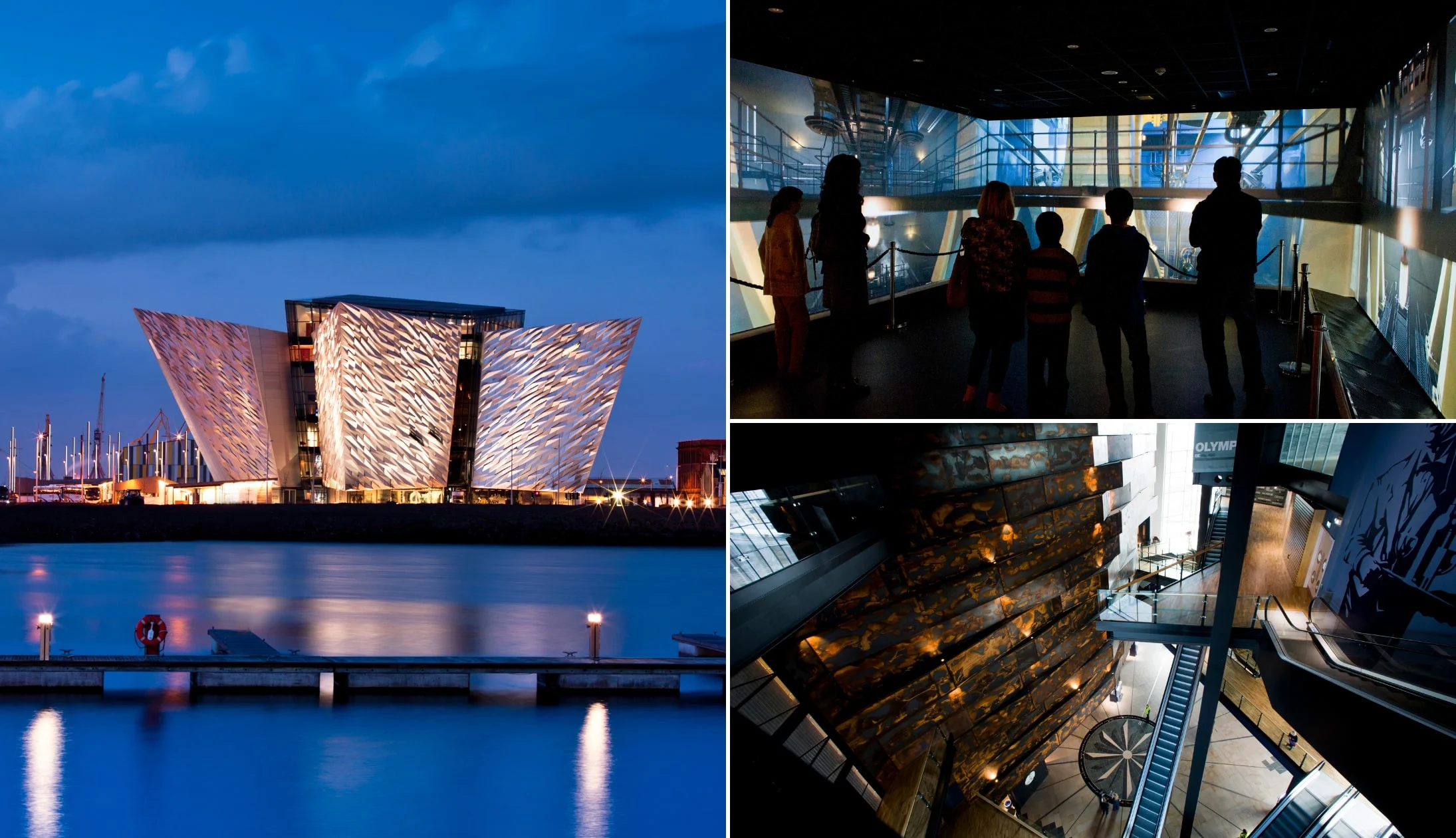
Photos by Chris Hill via Tourism Ireland
After a fantastic day exploring the countryside yesterday, today we’ll be enjoying more sights and attractions in and around Belfast City.
We’ve got quite an active day lined up, so you’ll want to grab a hearty breakfast at your accommodation or in a nearby cafe.
We’d recommend Established Coffee on Hill Street for a decent selection of cooked breakfasts, great coffee, and pastries. Alternatively, The Pocket on Upper Church Lane does a stunning full Irish fry-up and a bunch of veggie and vegan options.
Once you’ve had a good feed, it’s worth stocking up on water and snacks, as you’ll be out walking for a lot of the day.
Stop 1: Cavehill Walk

Photos via Shutterstock
The Cavehill walk is hands down one of the best walks in Belfast, offering those that conquer it unbeatable views out over Belfast City. Now, there are several different trails to tackle at Cavehill Country Park, with each ranging in difficulty level, but the most popular is a circular route that starts and ends at Belfast Castle.
Depending on your pace and the weather, this walk should take between 1.5 and 2 hours minimum. The walk is a circular route that is a distance of 4.5 miles. Allow at least 2 hours to be safe. The Cavehill Walk is challenging and a good level of fitness is needed. The paths are unsurfaced and steep in parts, so good walking boots are advised, especially if it’s a wet day.
There are several direct bus options that’ll take you from the city centre to Belfast Castle and the start of the walk. The journey should take around 30 minutes or so by bus. Catch the Translink Metro Bus Route 1 departing from Upper Queen Street or Victoria Square in the centre of Belfast, and hop off at Strathmore Park stop on the Antrim Road. From there, the route to the Castle is clearly signposted.
Stop 2: Belfast Castle
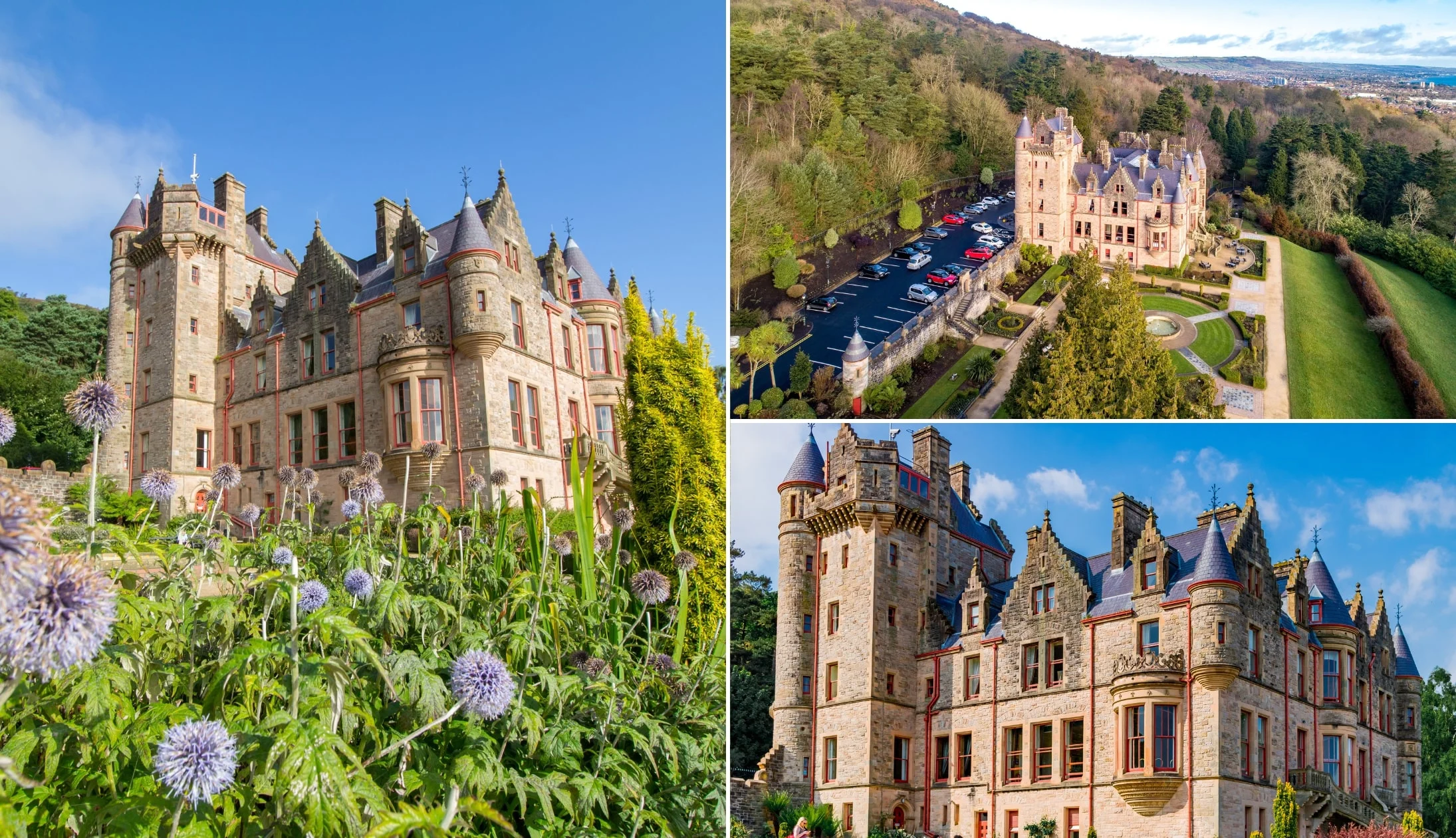
Photos via Shutterstock
After enjoying your walk, why not take a look around the Disney-esque Belfast Castle? The gorgeous turreted castle dates back to 1862, although a castle has stood on this site since the 12th century. The current iteration is absolutely stunning inside and out, and it’s well worth taking a self-guided tour of the gorgeous grounds, gardens, and public rooms on the ground and first floors.
Be sure to head up to the second floor to check out the Cave Hill Visitor Centre too. It’s free to visit and has four rooms of exhibits and an 8-minute film about Cave Hill and Belfast Castle. In fact, there’s no fee at all to visit the castle, though you may want to take some cash for the cafe!
Stop 3: Lunch in Belfast

Photos via The Lamppost Cafe on FB
Once you’ve finished up at the castle, jump back on the same bus back into town and explore the Cathedral Quarter. The beating heart of Belfast, you’ll find plenty of great places to grab lunch. If you’re lucky enough to be in town on a Friday, Saturday, or Sunday, be sure to drop by St George’s Market, a short 5-minute walk from Victoria Square bus stop.
This vibrant marketplace boasts deliciously fresh produce and a wealth of arts and crafts. It’s also home to some great places to eat, serving up an array of dishes, from soup and seafood to foreign cuisine and pies. Alternatively, check out The Lamppost Cafe for some comforting home-cooked dishes, including a number of vegan options.
Stop 4: SS Nomadic
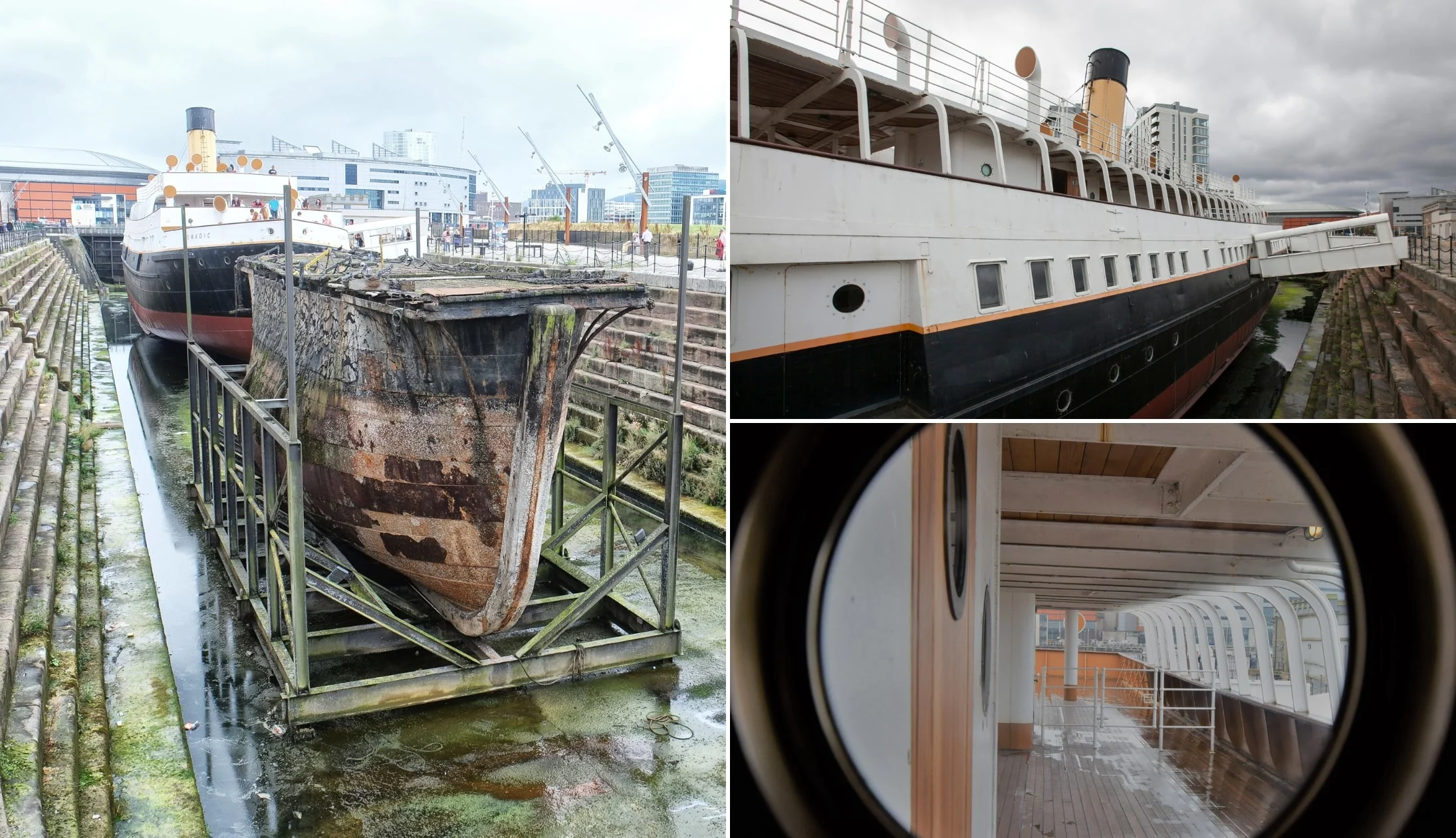
Photos via Shutterstock
After enjoying a tasty lunch, it’s a 20-minute walk to our next stop, SS Nomadic. The SS Nomadic is moored at Hamilton Dock in the Titanic Quarter of Belfast and is part of the Titanic Experience, the next stop after this. Admission to the SS Nomadic is included in your ticket to the Titanic Experience, though you can pay an additional £10 for a guided tour.
SS Nomadic has a long and interesting history. Launched in 1911, it was originally used to ferry passengers onto cruise liners, including the Titanic. During the war, it served as a minesweeper in France. It’s a fascinating ship to walk around, and there are loads to see along the way.
Stop 5: Titanic Experience

Photos by Chris Hill via Tourism Ireland
Just a 5-minute walk from SS Nomadic, the Titanic Experience is one of Belfast’s most popular attractions. Located right on the slipways where RMS Titanic was designed, built and launched, the enigmatic Titanic Museum tells the now-infamous story incredibly well. Visitors can expect exhibits, replica staterooms, photos, documents and 21st-century technology. You’ll see, hear and even SMELL the shipbuilding process during your tour!
Stop 6: Dinner, drinks and live music

Photo left: Silvia Franceschetti (CC BY-SA 3.0). Others via Bittle’s Bar on FB
This will be your last night in the city for a while, so make sure to check out anything you’ve missed so far.
You’ll find tons of options for food, drink, entertainment, and plenty of live music here, so whether you go back to your accommodation to freshen up first or head straight out is up to you.
Our Belfast food recommendations
There’s some outstanding restaurants in Belfast City. First up, Deanes is a Belfast institution and a must-visit while you’re in the city. There are three venues to choose from, each focusing on something different; Deanes Meat Locker, Deanes Love Fish, and Deanes at Queens.
Whichever you choose, you’re in for a fine feed. EDO is another favourite of ours, a stunning tapas and cocktail bar with incredible sharing platters.
Or, for a fancy meal, head to The Ginger Bistro, near the Belfast Opera House. Their menu is out of this world, though that’s no surprise when you consider it was voted the best restaurant in Northern Ireland.
Our Belfast pub recommendations
There are countless incredible pubs and bars in Belfast for a tasty after-dinner tipple. Check out traditional options like the unmistakable Bittles Bar, with its stunning range of local beer and Irish whisky.
The Duke of York is another old-school boozer, walls adorned with knick-knacks from yesteryear and serving up a fine pint of Guinness.
Finally, we couldn’t forget Madden’s Bar, a cosy, traditional pub complete with a roaring wood-burning stove and a friendly atmosphere. Somewhat overlooked, it’s a hidden gem, beloved by those in the know!
Traditional musicians from across Ireland come to play at Kelly’s Cellars every Tuesday, Wednesday, Thursday, and Saturday.
Other fantastic options for music include Fibber Magees, another charmingly old-fashioned pub with a lively atmosphere, and the John Hewitt.
Day 4: The trip to Dublin
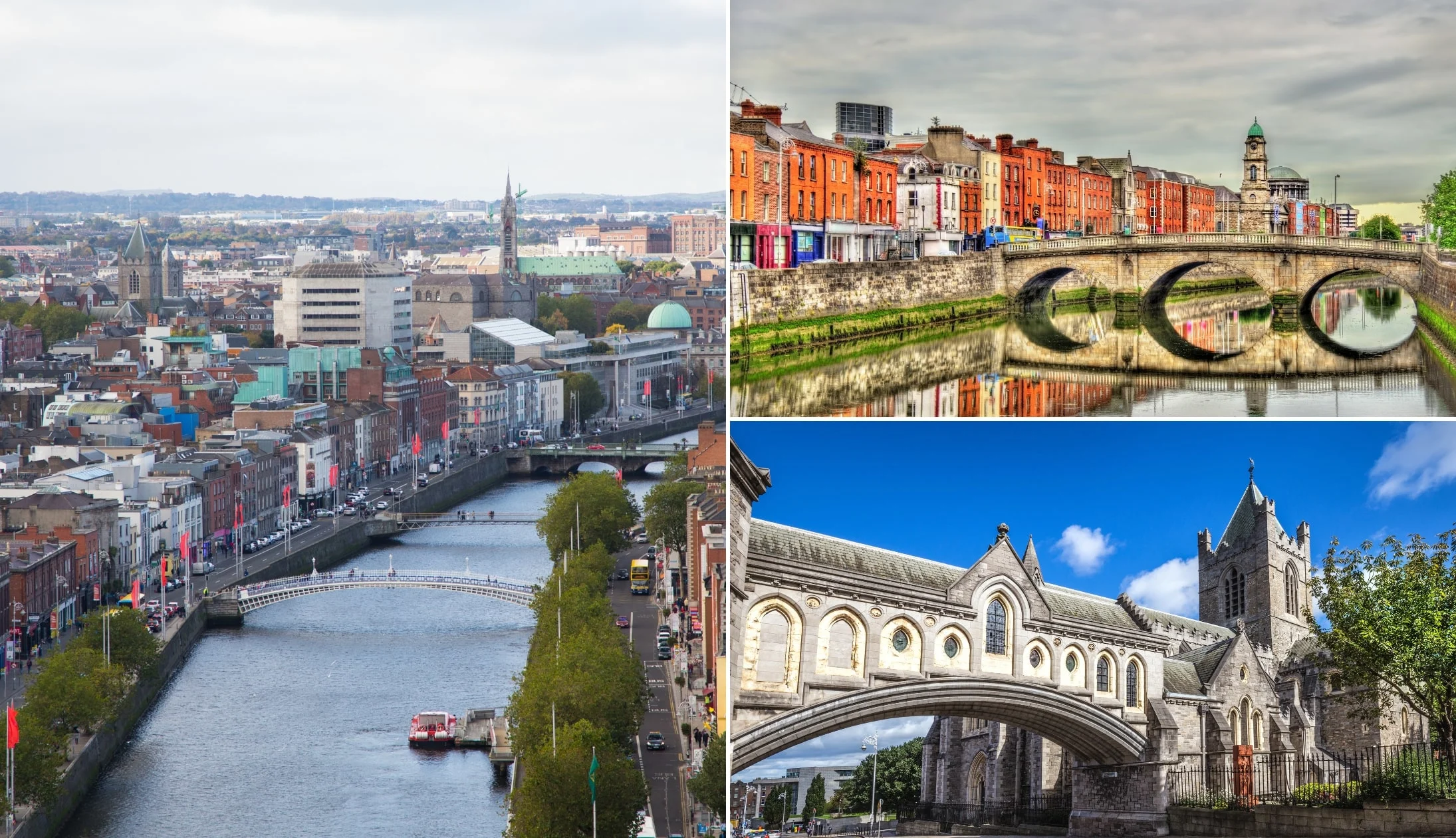
Photos via Shutterstock
Next stop, Dublin City! We’ll be taking the train to the vibrant and historic Dublin City, where we’ll be spending three nights.
Before you catch your train, enjoy a decent breakfast at your accommodation, or check out one of the cafes from yesterday. Alternatively, you’ll find shops at the train station if you want to buy something to go.
Recommended accommodation in Dublin
- Budget: Abigail’s Hostel (Temple Bar), Jacobs Inn (central hostel) and the Generator Hostel (short walk from the city)
- Mid-range: Dublin Skylon Hotel (just outside the city), Wren Urban Nest (Temple Bar) and the Harding Hotel (very central)
- Luxury: The Merrion (St. Stephen’s Green – very central) and The Westin (just off Grafton Street)
Getting around Dublin + money savers
- Time savers: If you want to avoid walking where possible, it’s worth getting a ticket for the Hop On Hop Off Bus around Dublin. It goes to or near all of the main sites on this itinerary plus plenty more.
- Money saver: If you’re visiting the ‘main’ Dublin attractions, the Dublin Pass can save you €€€ (here’s how)
Stop 1: Belfast Lanyon Place Train Station
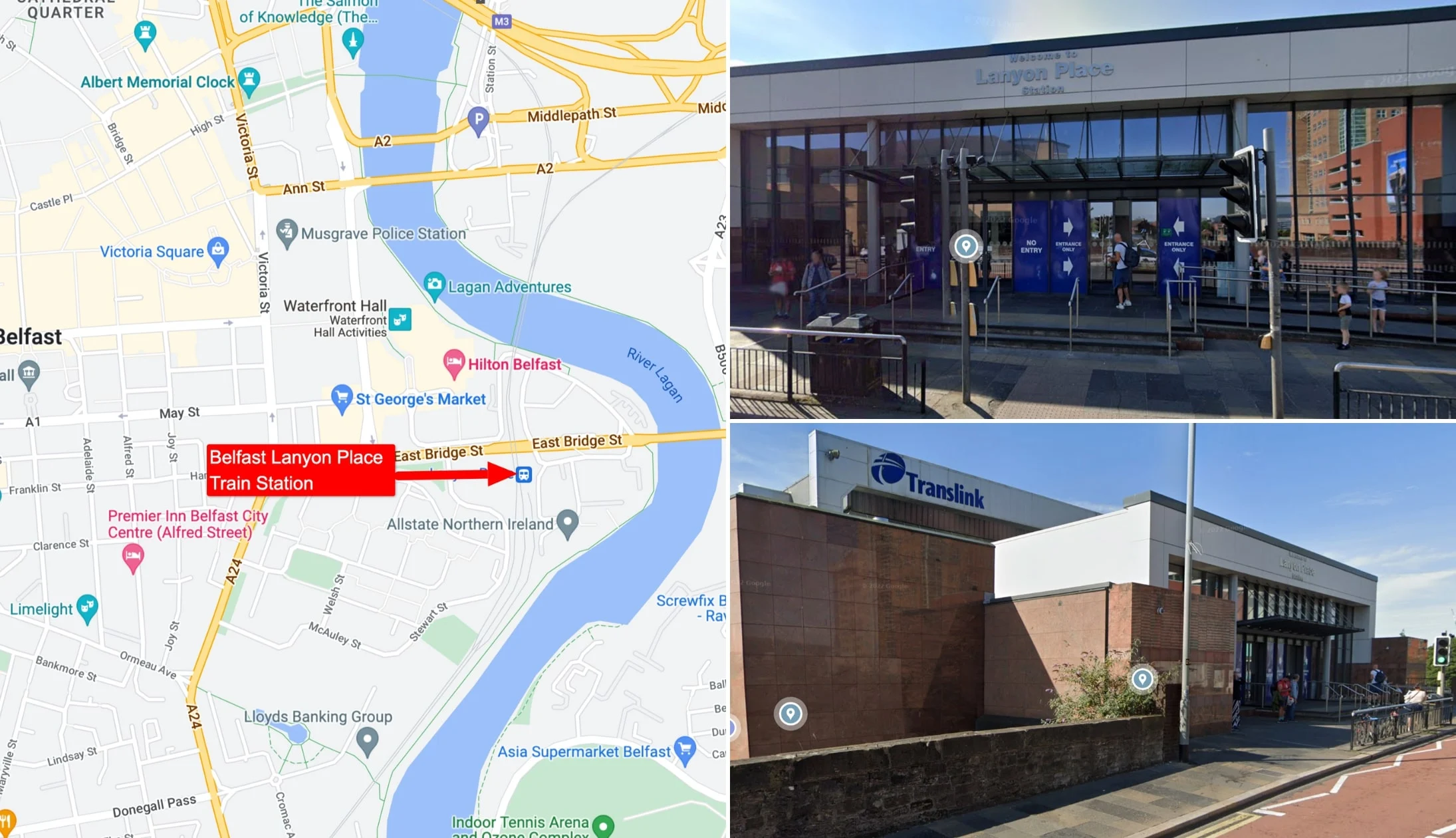
Photos via Google Maps
After a good feed, it’s straight to the train station. Lanyon Place is just a short walk from the Cathedral Quarter, or you can take a cab there from your accommodation.
There are multiple trains to Dublin every day, more or less every four hours or so, and the journey will typically take just over two hours, passing through some gorgeous scenery.
Stop 2: Dublin Connolly Train Station
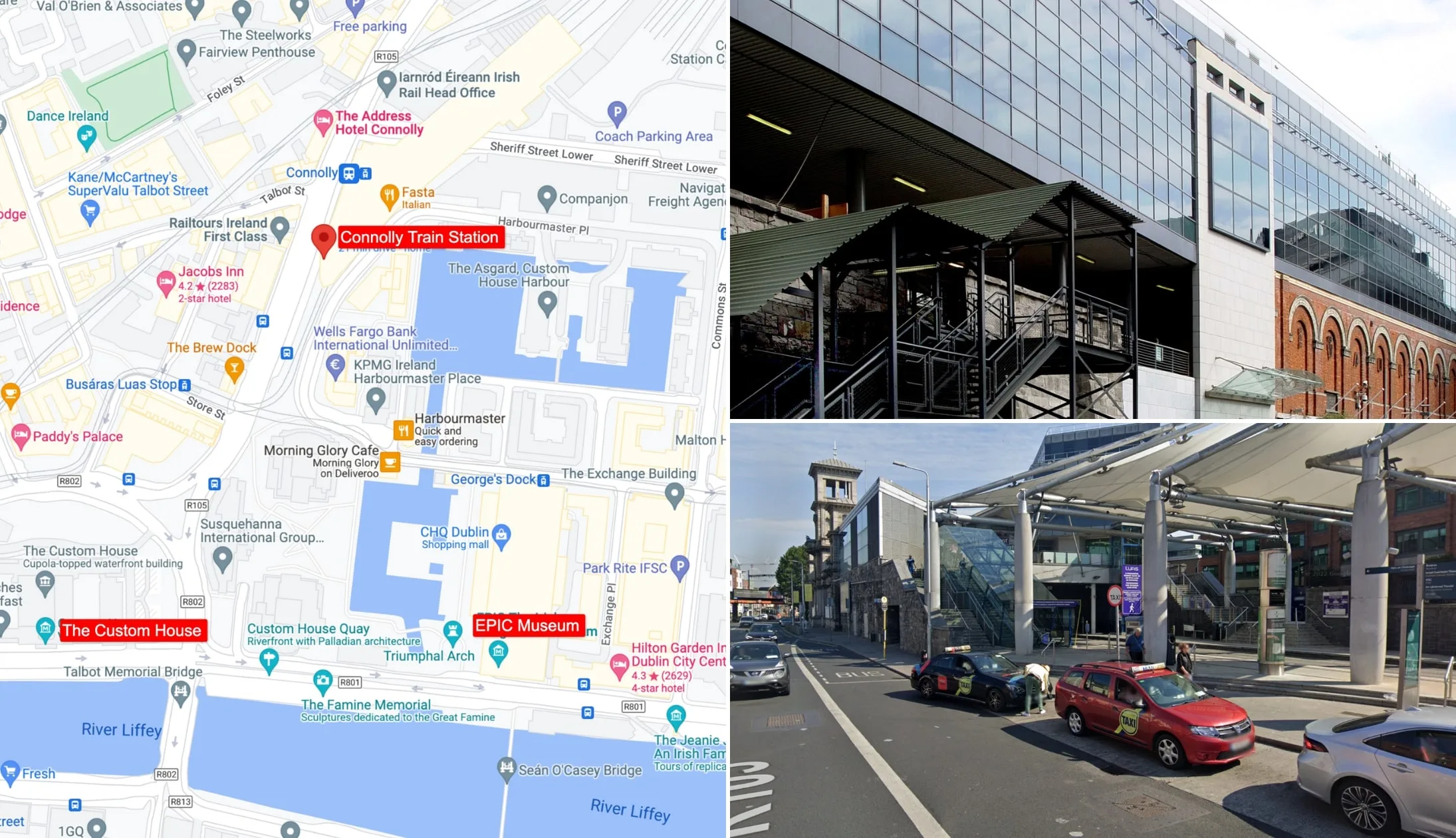
Photo left and bottom right: Google Maps. Other: Shutterstock
Welcome to Dublin, the capital of the Republic of Ireland! From Connolly Station, it’s about a 10-minute walk to Trinity College or 20 minutes to Temple Bar. You can also take a bus, which will generally take around 15 minutes or so. Look for bus routes 14, 15, 27, and 151, though there are probably more to be fair. You can also hop on the Luas Red Line, the station is just around the corner.
Alternatively, head to your accommodation, drop your things off and head into town once you’ve settled in.
Stop 3: Trinity College
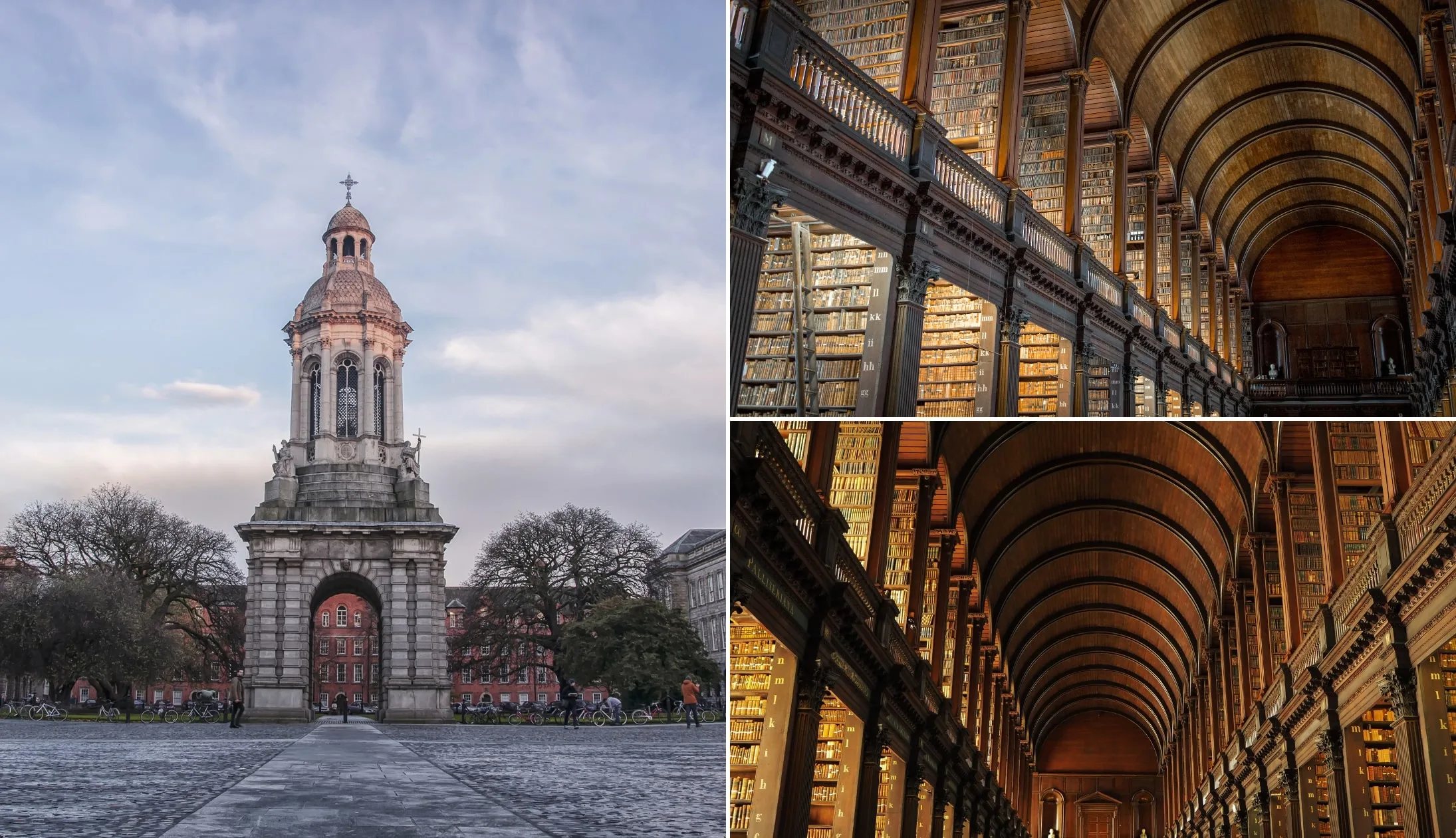
Photos via Shutterstock
When you’re ready, head straight for Trinity College to see the Book of Kells, arguably the most famous cultural attraction in Dublin.
If you can, we highly recommend pre-booking your tickets online, as the queues can get really long (bordering on ridiculous!). This fast-track ticket allows you to dodge the queue and gets you into Dublin Castle, too!
Spend around one hour seeing the Book of Kells, walking around the exhibit, and taking in the beauty of the Old Library. After that, give yourself another 20 minutes or so to walk around the university campus.
Stop 4: Lunch
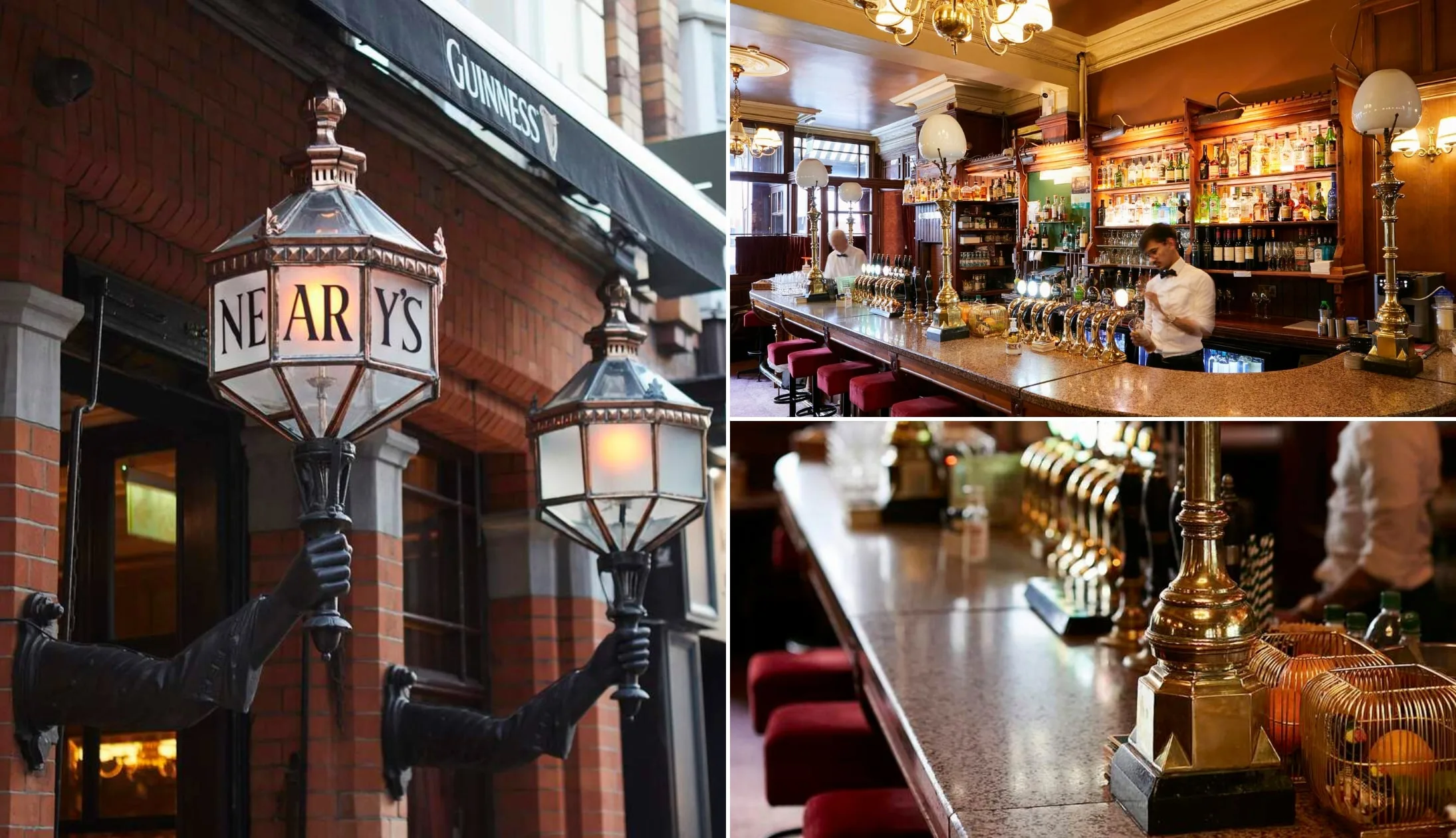
Photos © Tourism Ireland
There’s plenty of great restaurants in Dublin, but for lunch we suggest you head to Neary’s. It’s just up the road from Trinity College, along the bustling Grafton Street.
This old-school pub is a classic and it serves up a range of simple lunch options, like sandwiches, soup, toasties, and Carlingford Oysters, all washed down with a tasty pint of Guinness.
Affordable and delicious, we can’t recommend it highly enough. Sprout and Co on Dawson Street is another good shout for a quick, light lunch that tastes great and is close to Trinity College.
Stop 5: The Ha’penny Bridge (via Temple Bar)
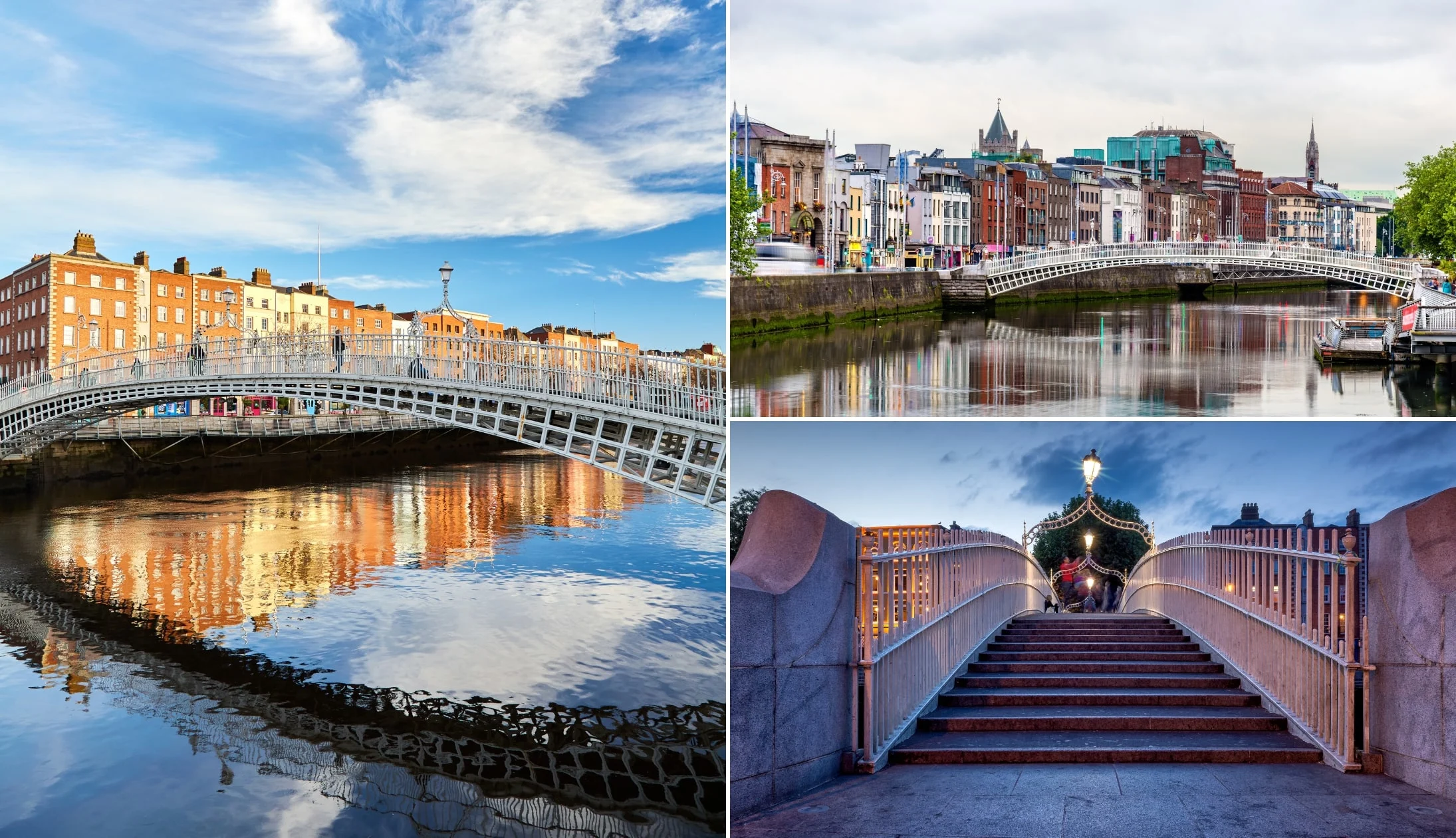
Photos via Shutterstock
The Ha’penny Bridge is an iconic sight in Dublin and crossing it is a must. From Neary’s, it’s about a ten-minute walk that passes through the vibrant Temple Bar area.
As you pass through Temple Bar, you’ll see why this is the nightlife capital of Dublin, with endless pubs and clubs lining the streets.
The bridge itself is a quaint little footbridge over the River Liffey. In the old days, you’d have to pay a toll of half a penny to cross, hence the name.
If you fancy a coffee after your walk, head to Vice Coffee Inc, just over the bridge for a superb brew. You’ll also find tons of shops and pubs to enjoy on either side of the bridge.
Stop 6: Christ Church Cathedral
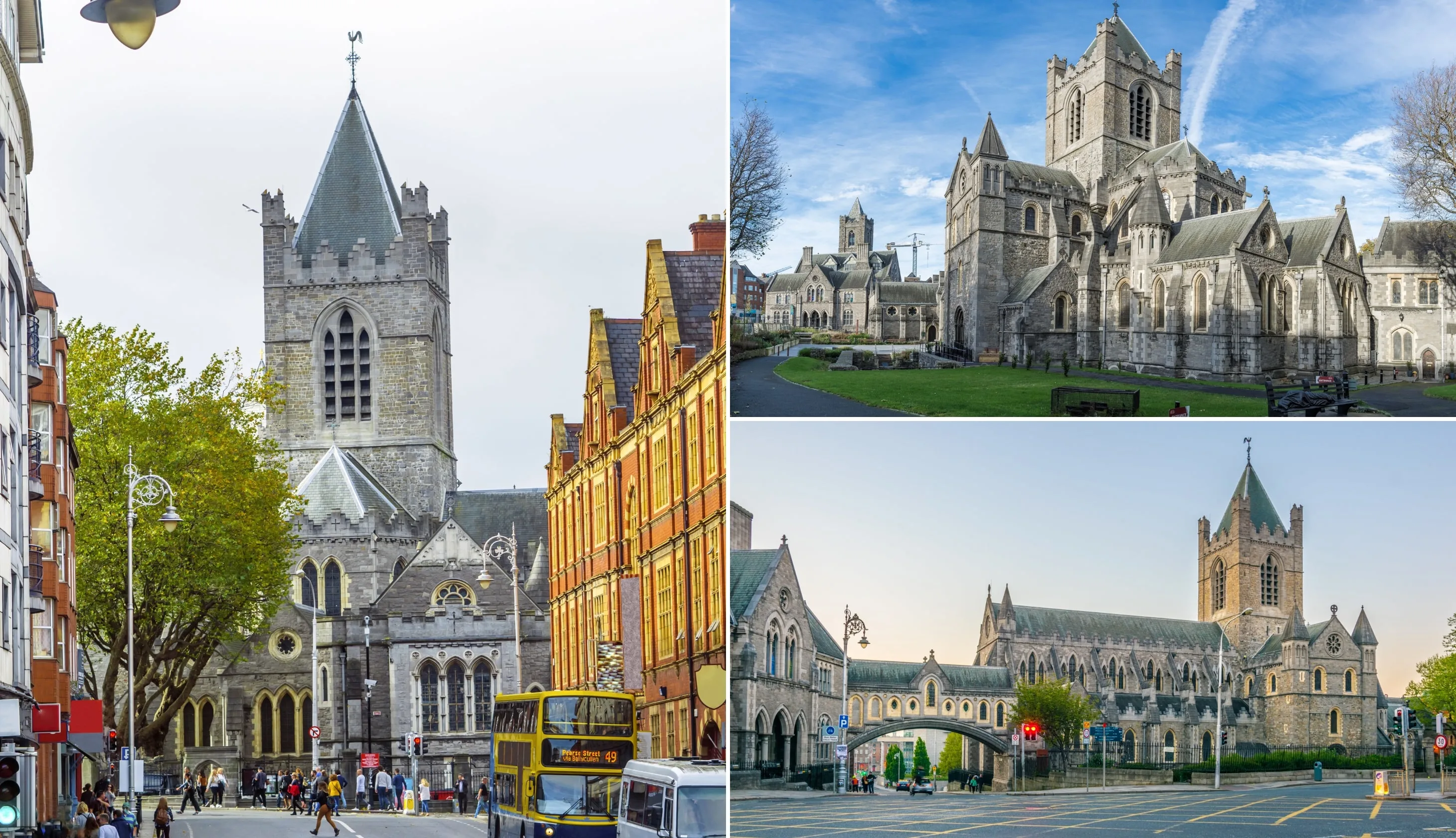
Photos via Shutterstock
Christ Church Cathedral (a 9-minute stroll from the castle) is another of Dublin’s top attractions and dating back more than 1,000 years, it’s pretty much as old as the city itself!
Steeped in history, it was originally founded by Viking king Sitruic Silkenbeard, but it’s come a long way since those early days (you can grab a ticket online here).
After admiring the stunning architecture from the outside, you can take a self-guided audio tour inside the cathedral.
Along the way, you’ll discover Strongbow’s grave and explore the crypts, which are home to a wealth of artefacts and exhibits, with such treasures as the mummified cat chasing a mummified rat inside an organ pipe.
Listen out for the record-breaking bells of Christ Church, and if you’re really lucky, you might catch the choir in action.
Stop 7: Guinness Storehouse
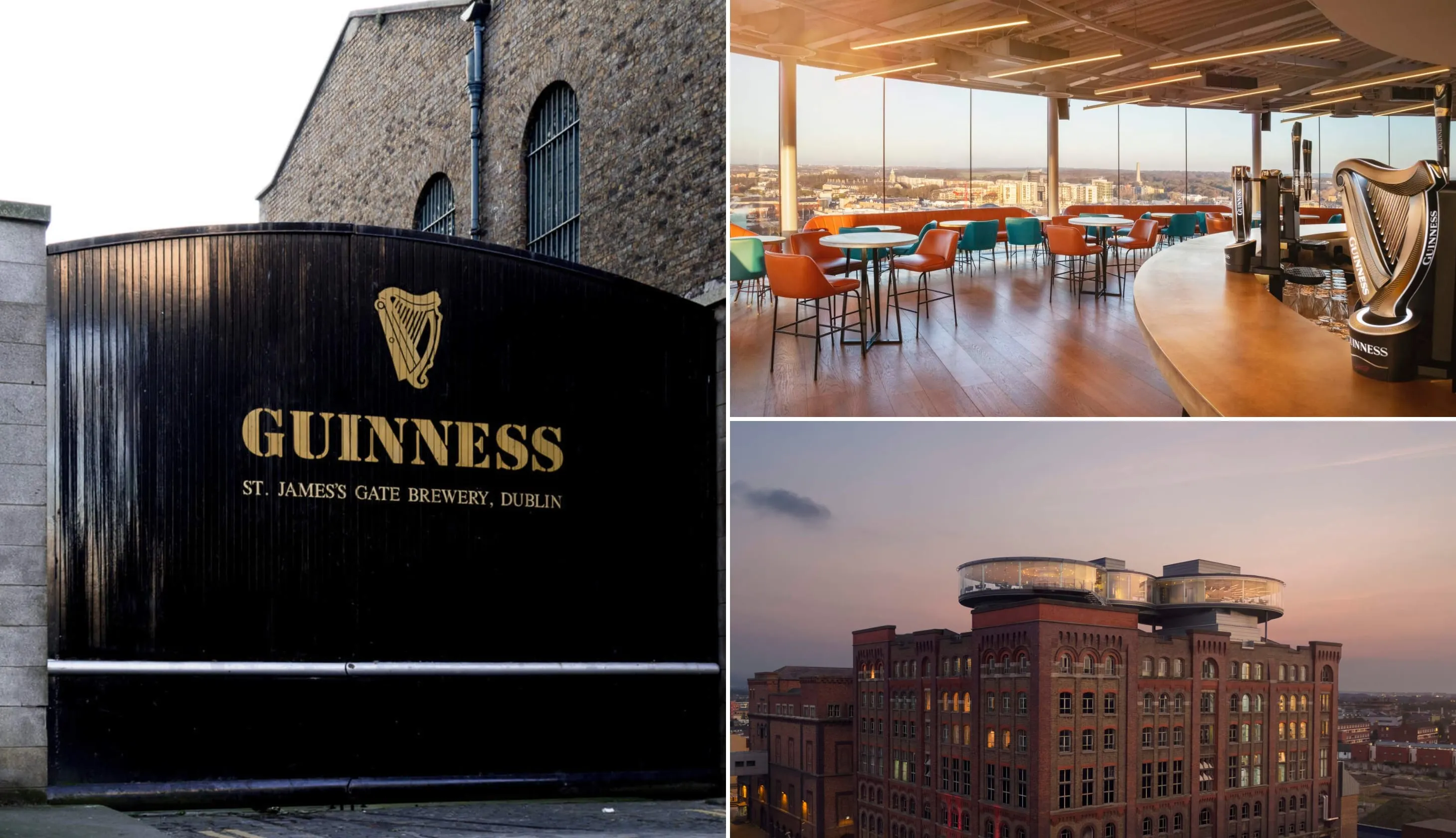
Photos © Diageo via Ireland’s Content Pool
Next up is another iconic Dublin attraction, the Guinness Storehouse. It’s a bit of a walk from the cathedral, around 17 minutes or so. However, you can easily take the bus to cut out the bulk of the walk. Head round the corner to High Street Stop 1937 and jump on any bus that’ll drop you at Steevens Lane, just ask the driver, but the 13, 27, 77A, 123, G1, and G2 all head that way. From Steevens Lane, it’s just a 4-minute walk to the Guinness Storehouse.
Dublin is the home of Guinness, and this tour of the brewery is a must for anyone with a love for the black stuff. In fact, even if you’re not a fan of beer, this is a fantastic attraction to visit. Book your tickets in advance to avoid the queues. You can do a self-guided tour, but the guided-tour is, in our minds, the better option.
Your knowledgeable guide will tell the iconic story of how Guinness, from its cheeky origins to where it is now, as well as going over the brewing process. Along the way, you’ll hear a number of humorous tales, enjoy some of the brand’s most iconic adverts, and sample the brew at various stages of the process.
To finish, you’ll get a free pint in the fantastic Gravity Bar. Situated on the seventh floor, you’ll enjoy great views over the city as you sink a pint or two.
Stop 8: Dinner, drinks and live music
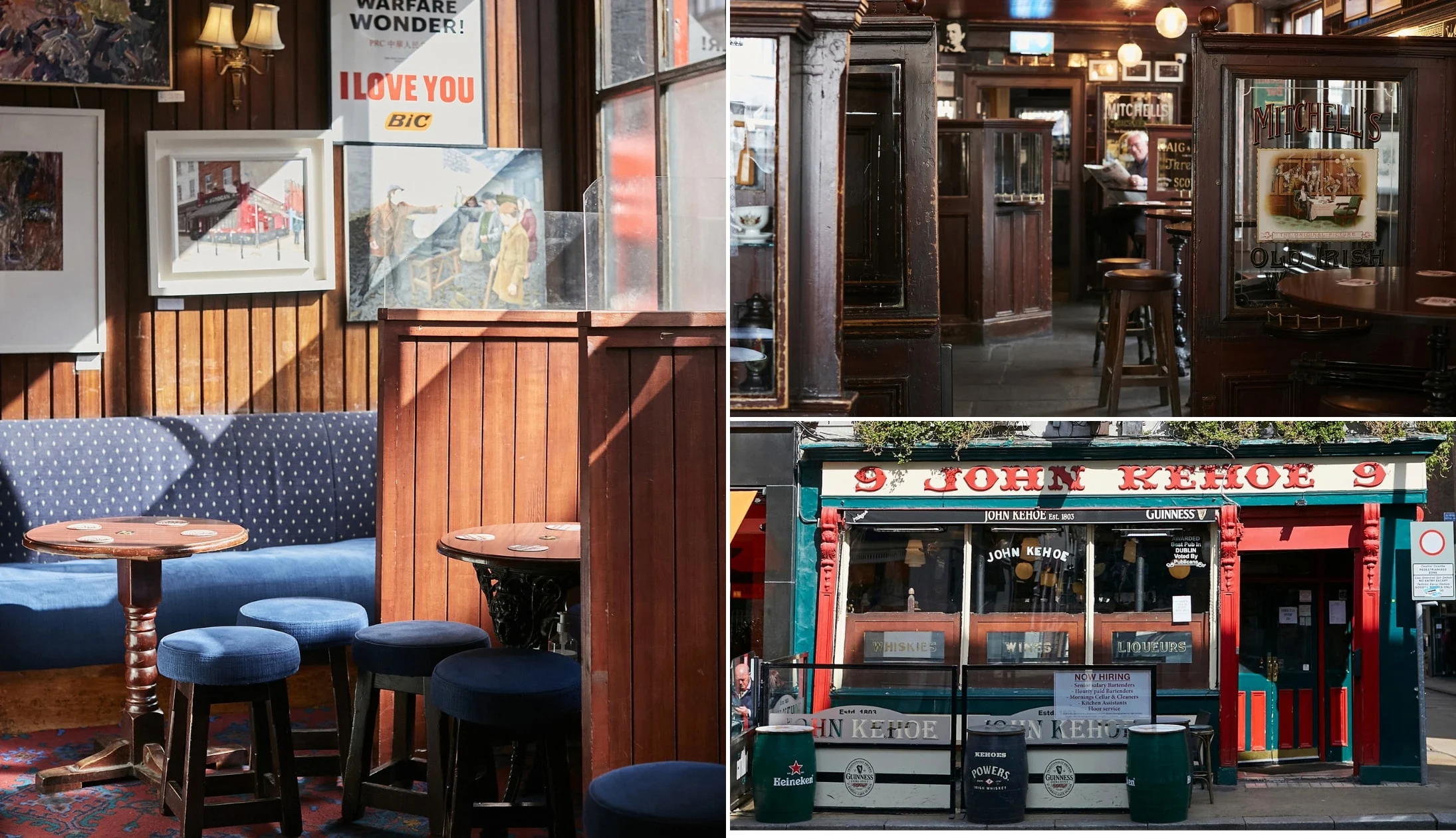
Different trad bars in Dublin. © Tourism Ireland
When you’ve finished at the Guinness Storehouse, you’ll probably be ready for dinner. For our first night in Dublin, we’ve got a few treats lined up.
Our Dublin food recommendations
There’s endless excellent restaurants in Dublin. However, if we had to pick one or two…
The first would be The Bull and Castle – it’s always a good choice and it’s right across the street from the Christ Church Cathedral.
An FX Buckley steakhouse (a Dublin institution), they offer a great range of steaks cooked to perfection, paired with their incredible beef dripping chips.
The Vintage Kitchen is an alternative, but it’s best to book in advance as it’s incredibly popular. A BYOB (bring your own bottle) place, the food is phenomenal, with a small but diverse menu that features classic Irish dishes with a contemporary twist.
Our Dublin pub recommendations
There’s certainly no shortage of great pubs in Dublin. If you’re a fan of old-school pubs, follow our Dublin pub crawl guide – it contains a short route with some of the city’s finest trad bars.
McNeils on Capel Street is an authentic Dublin pub, complete with wood panelling, impromptu folk sessions, and plenty of beers on tap.
The Long Hall is another must-see. Part Victorian time capsule, part vibrant boozer, it enjoys a fantastic atmosphere and is one of the most visually stunning pubs in the city.
You’ll find trad sessions at Pipers Corner every night of the week. O’Donoghues Bar on Merrion Row is another must-visit, with vintage decor and frequent trad sessions. It’s best-known as the home of the Dubliners, who used to play here regularly.
The Celt on Talbot Street is another great choice for live music, and while it’s not always trad, the bands are normally really good.
Day 5: Wicklow’s Wonders
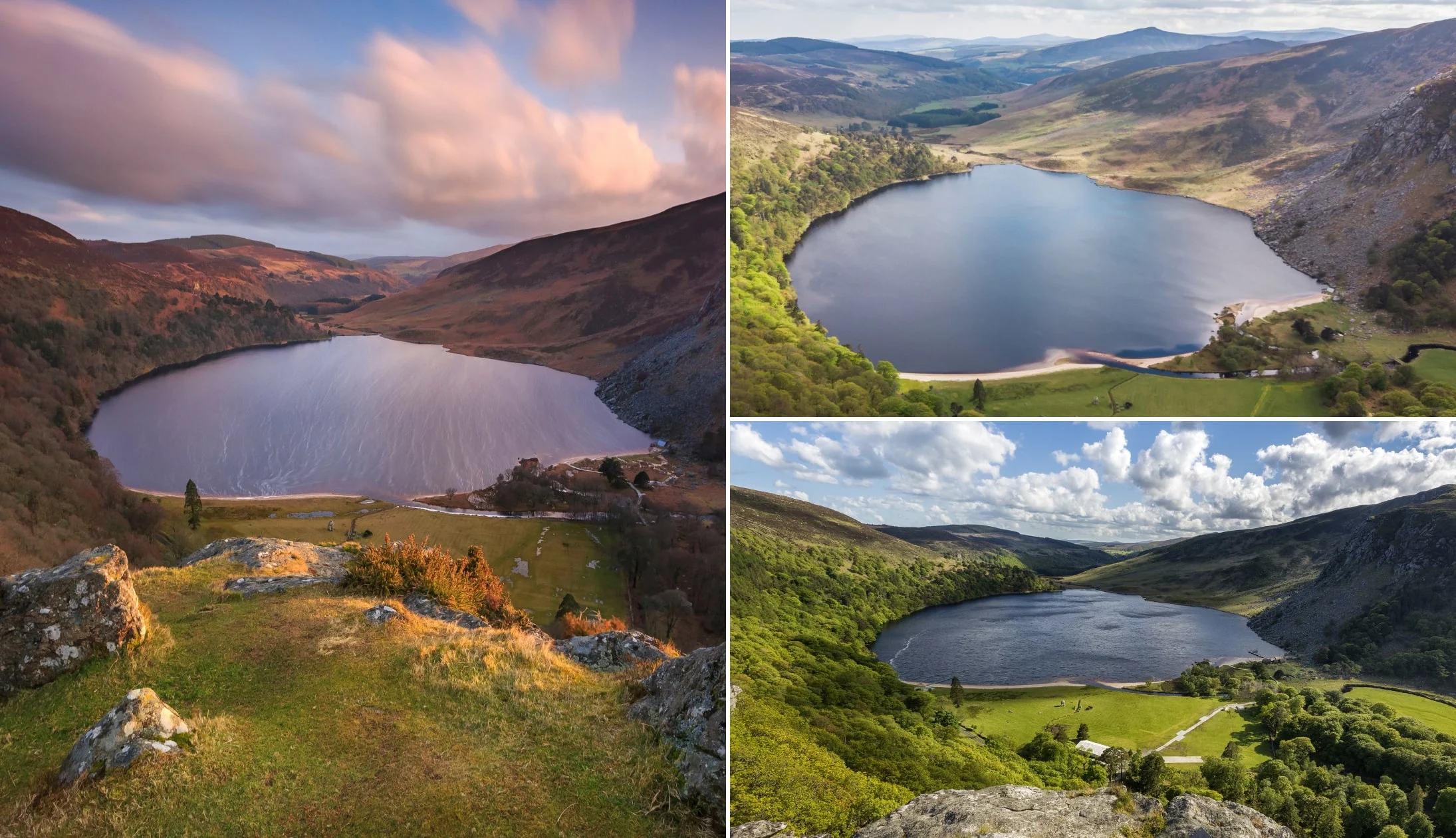
Photos via Shutterstock
Day 5 takes us into the stunning natural beauty of the Wicklow Mountains, just south of Dublin City. Depending on the time of year, you’ll have different options for seeing Glendalough and the Wicklow Mountains National Park.
During the off-season, St Kevin’s Bus is the best way to visit these places. If you are here during the peak season, take a guided tour like the one we’ve outlined below.
Option 1: St Kevin’s Bus
The St Kevins Bus Service has been operating the Dublin to Glendalough bus since 1927. The bus leaves from St Stephen’s Green North (across from Stephen’s Court in Dublin City Centre) and drops you near the Glendalough Visitor Centre.
Option 2: Wicklow Mountains National Park & Guided Walking Tour
This option includes a fully guided day tour of Wicklow with a guided walk in the Irish countryside. You’ll stop for lunch along the way and take in the magnificent Sally Gap in the heart of the Wicklow Mountains, and various film locations before arriving at Glendalough National Park and Monastic site.
We’ll give a brief overview of the various stops along the tour but bear in mind that the actual tour you take may differ, depending on weather, number of guests, and traffic conditions. However, the trip should take around 8 hours. Be sure to check with the provider in advance for full details.
Stop 1: Sally Gap
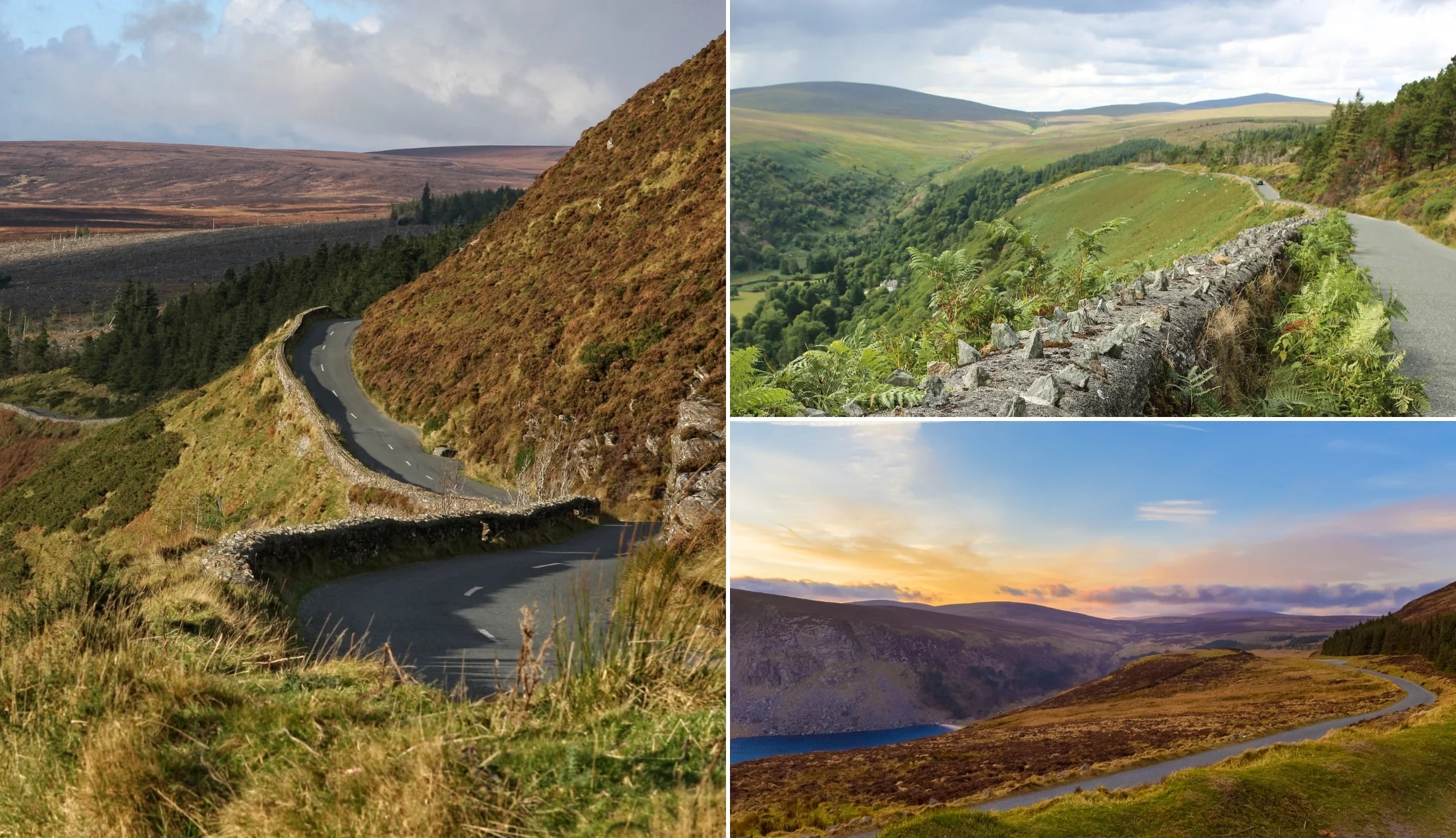
Photos via Shutterstock
From the pickup point, you’ll be heading to Glendalough in the heart of the Wicklow Mountains via the Sally Gap, a wonderful, remote wilderness in the shape of a crossroads.
From Sally Gap, you can enjoy a number of sights from the road, including the mighty Lough Tay, better known as the Guinness Lake, and Glenmacnass Waterfall, a beautiful 80-metre cascade that tumbles down the mossy rocks into the river below.
Stop 2: Glendalough Monastic City
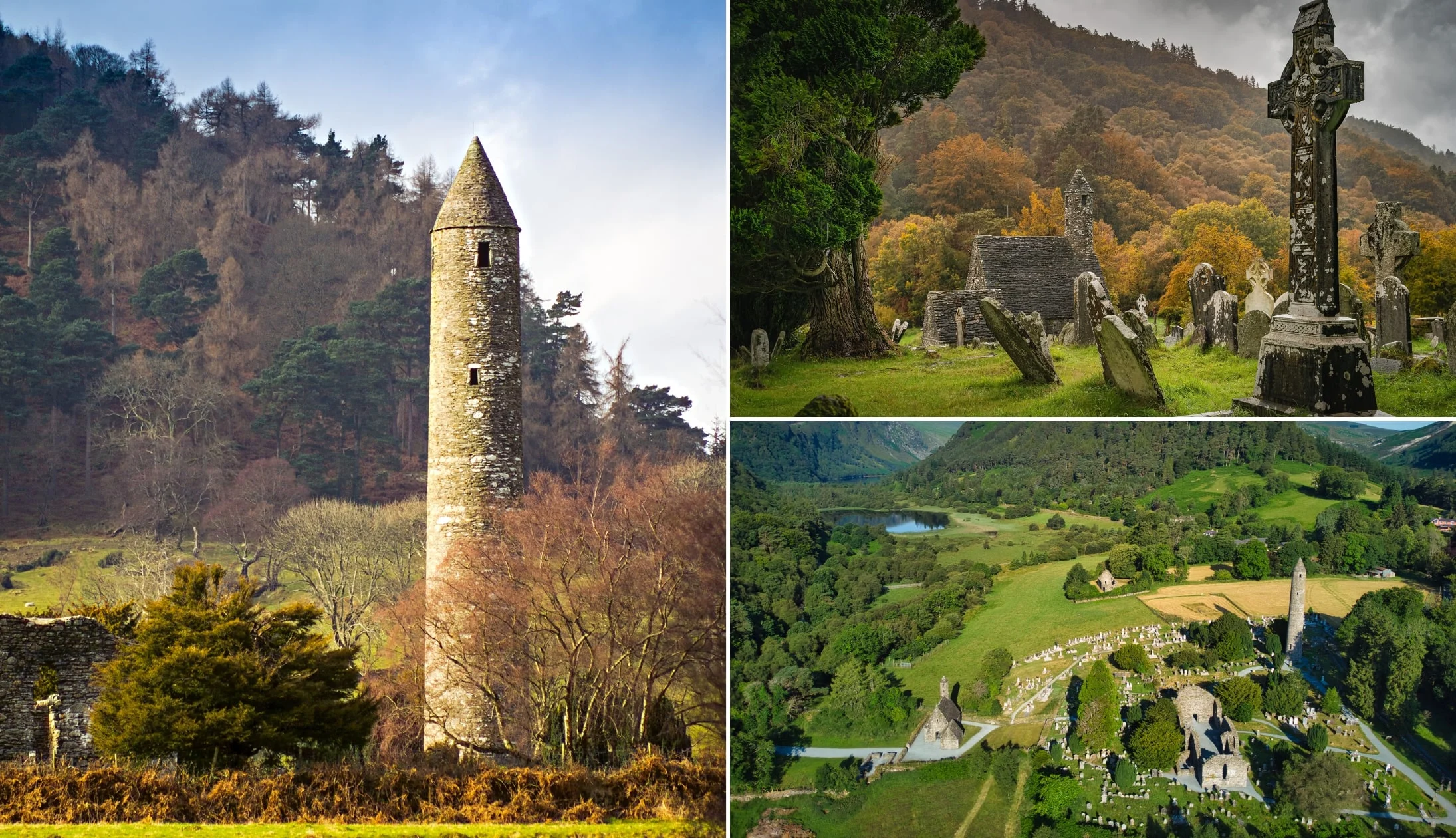
Photos via Shutterstock
Your first stop will be the magnificent Glendalough Monastic City. It’s a superb place to take a walk around and discover the various ruins, many of which are many hundreds of years old. Founded by St. Kevin in the sixth century, it’s home to ancient round towers, churches, and tombs, as well as an extensive graveyard.
Stop 3: The Lakes at Glendalough
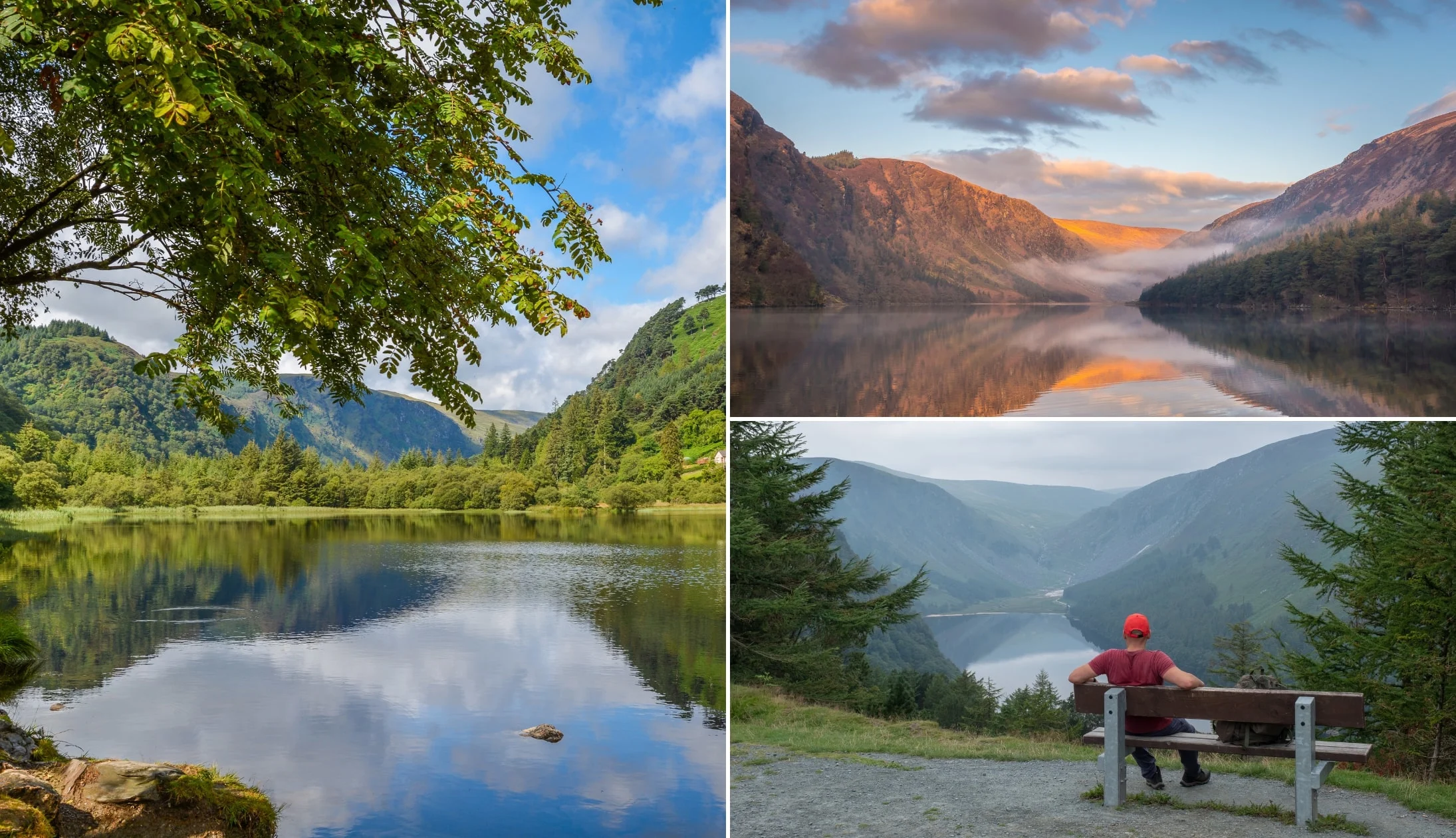
Photos via Shutterstock
There are two stunning lakes at Glendalough, the smaller Lower Lake, and the larger Upper Lake. There are plenty of nice walks in the area that see you ambling along the edge of both lakes, taking in the rugged, natural beauty of the area.
Your guide will most likely take you on one of the shorter, easier-going routes in the park, where you can enjoy the spectacular scenery and fresh air. You’ll also find places to eat at Glendalough Upper Car Park, right on the shores of the Upper Lake.
Stop 4: Powerscourt House and Gardens
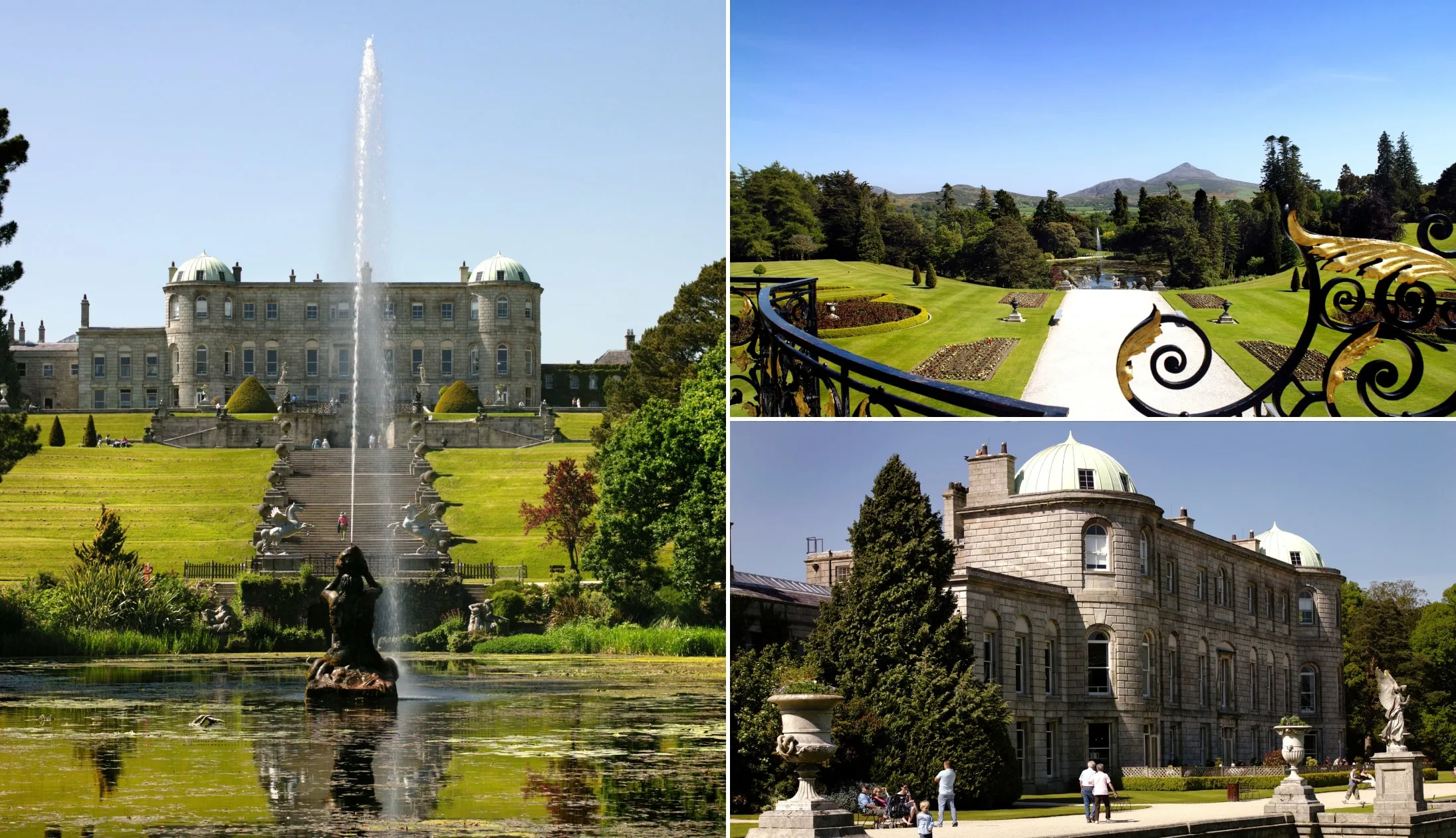
Photos by Chris Hill via Failte Ireland
Our next stop is a 35-minute coach ride away to the breathtaking Powerscourt House and Gardens. The Powerscourt Estate gardens are some of the most beautiful in Ireland and cover an incredible 47 acres of land. You can wander through the formal gardens, sweeping terraces, statues and secret hollows. The gardens were designed from 1731 onwards, with various sections worth exploring.
The grand house overlooks Sugarloaf Mountain and has been voted as one of the top houses and mansions worldwide by Lonely Planet. You can take a tour through the house and also enjoy some bespoke shopping with stores such as Design Loft, Global Village and Avoca Stores located inside.
Admission costs €11.50 for an adult, €9.00 for seniors, €8.50 for students, and €5.00 for children, or you can purchase a family ticket for €26.00. There’s a lot to take in here, so it’s worth allowing at least two hours for your visit.
Stop 5: Back to Dublin for the night

Photos via Shutterstock
After enjoying the stunning scenery of the Wicklow Mountains, it’s time to head back to Dublin for the night, for dinner, drinks, and maybe a little music.
Our Dublin food recommendations
There’s endless excellent restaurants in Dublin. However, if we had to pick one or two…
The first would be The Bull and Castle – it’s always a good choice and it’s right across the street from the Christ Church Cathedral.
An FX Buckley steakhouse (a Dublin institution), they offer a great range of steaks cooked to perfection, paired with their incredible beef dripping chips.
The Vintage Kitchen is an alternative, but it’s best to book in advance as it’s incredibly popular. A BYOB (bring your own bottle) place, the food is phenomenal, with a small but diverse menu that features classic Irish dishes with a contemporary twist.
Our Dublin pub recommendations
There’s certainly no shortage of great pubs in Dublin. If you’re a fan of old-school pubs, follow our Dublin pub crawl guide – it contains a short route with some of the city’s finest trad bars.
McNeils on Capel Street is an authentic Dublin pub, complete with wood panelling, impromptu folk sessions, and plenty of beers on tap.
The Long Hall is another must-see. Part Victorian time capsule, part vibrant boozer, it enjoys a fantastic atmosphere and is one of the most visually stunning pubs in the city.
You’ll find trad sessions at Pipers Corner every night of the week. O’Donoghues Bar on Merrion Row is another must-visit, with vintage decor and frequent trad sessions. It’s best-known as the home of the Dubliners, who used to play here regularly.
The Celt on Talbot Street is another great choice for live music, and while it’s not always trad, the bands are normally really good.
Day 6: Mighty Meath and Louth
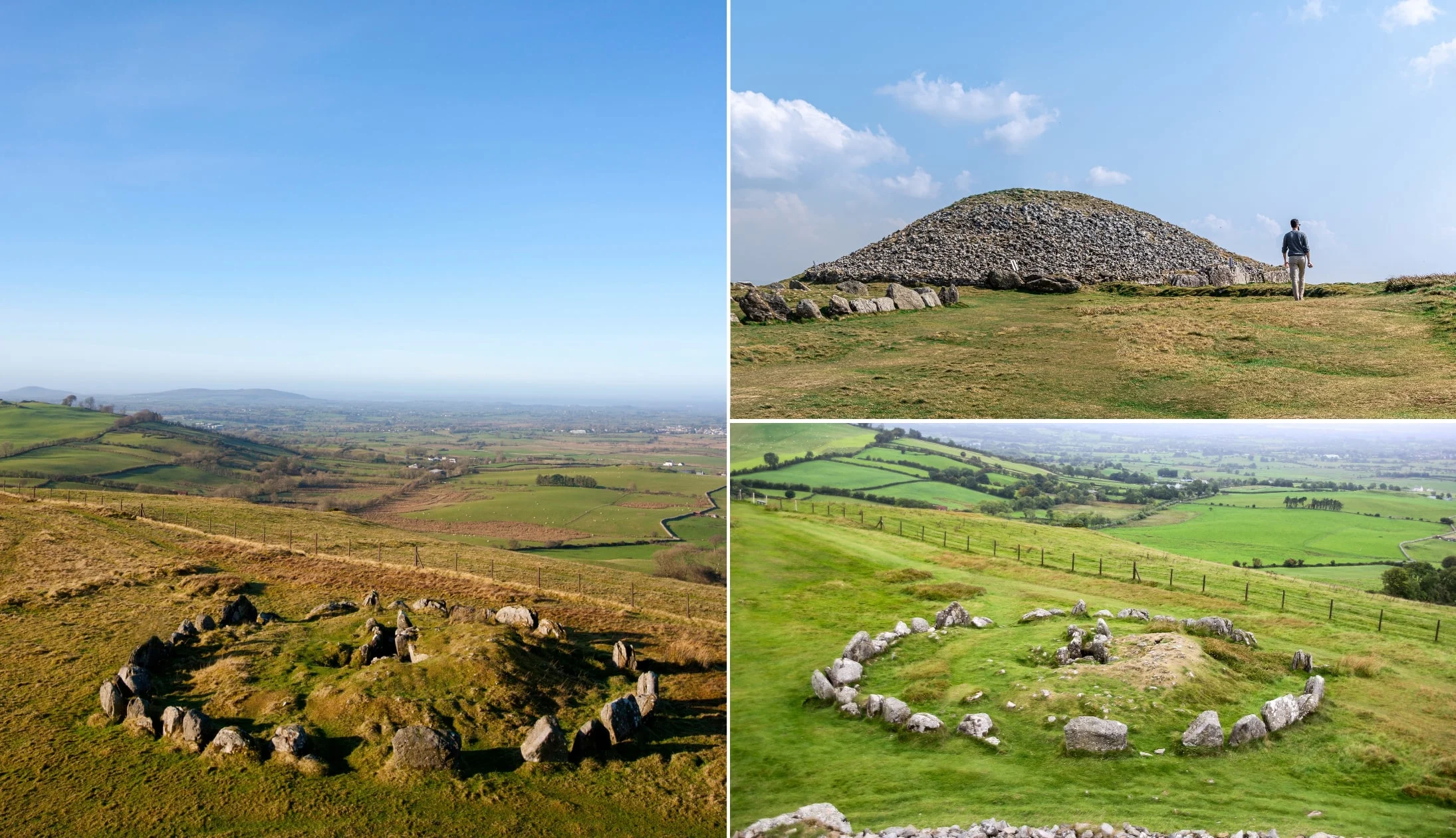
Photos via Shutterstock
Today we’ll be exploring the gorgeous counties of Meath and Louth, with a particular focus on the incredible Boyne Valley. There’s a fantastic coach tour of this area that takes in some of the best historical and cultural sights in Ireland. We’ll take a closer look down below.
Today’s 10-hour organised day trip leaves from the same spot, near the Molly Malone statue. There aren’t too many breakfast options open this early, so once again, we recommend Keoghs Cafe as they open at 6am.
Keep reading below for an overview of the tour, but please note that 1, you may not always physically stop at all of these sights and 2, these tours are subject to change, so always check with the provider in advance.
Stop 1: Hill of Uisneach
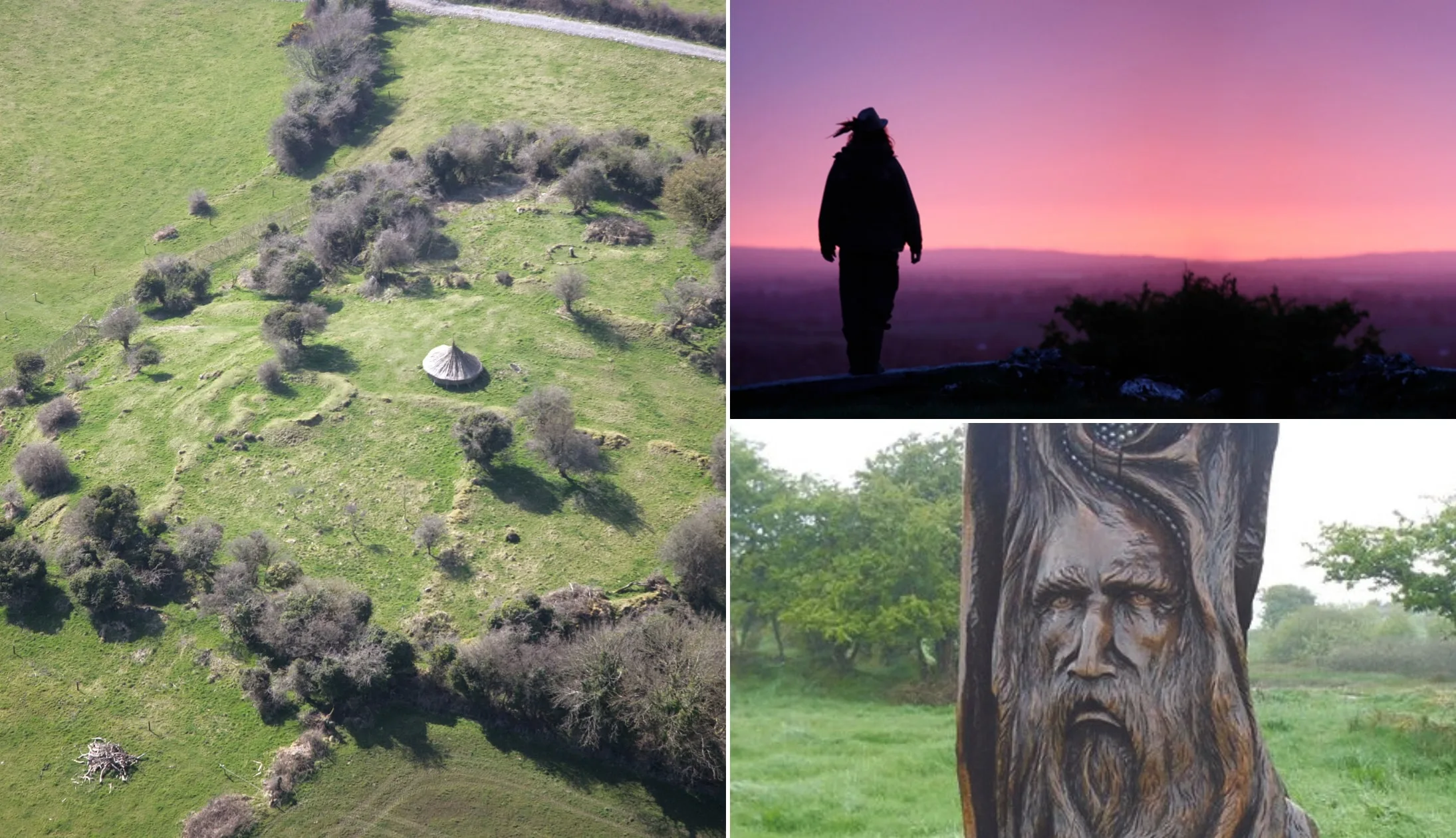
Photos via Shutterstock
Considered by many to be the centre of Ireland, the Hill of Uisneach is one of the most sacred and historic sanctuaries in the world. Sitting in the heart of the ancient Kingdom of Mide, a stroll across the ancient landscape follows in the footsteps of High Kings, Gods, and Goddesses.
The Hill of Uisneach is part of a working farm and on private land. The only access to the Hill is via a guided tour, but due to Covid-19 restrictions, there’s a chance it may not feature on your itinerary.
Stop 2: Fore Abbey
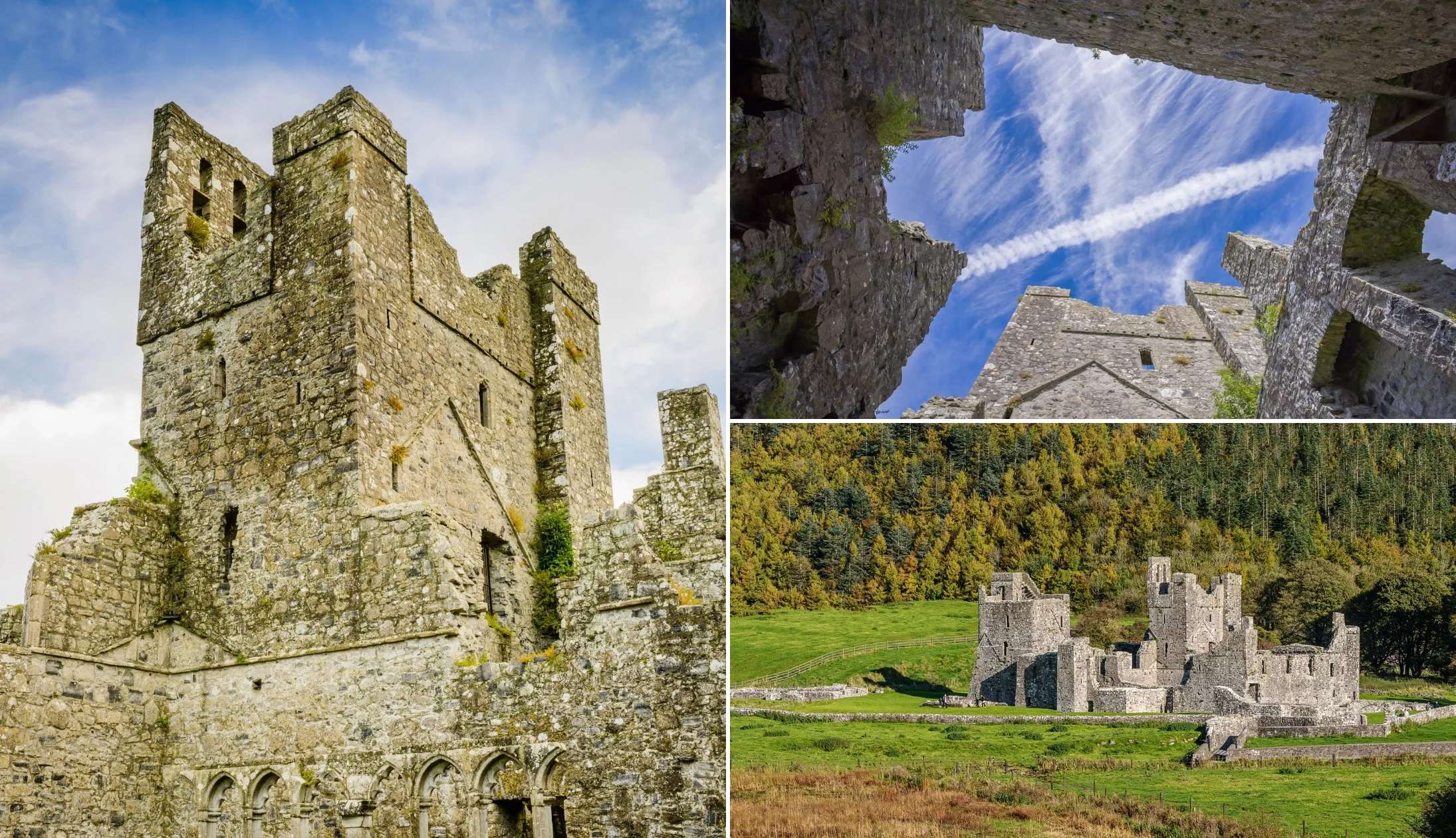
Photos via Shutterstock
Walk among the ruins of a Benedictine Abbey that dates back to the year 630 AD. Despite its age, it has been remarkably well-preserved and is a superb place to ramble, take photographs, and reflect on the ancient history of the place. Located just north of Lough Lene, it’s surrounded by gorgeous scenery and makes for a tranquil stop on your tour.
Stop 3: Loughcrew Passage Tombs

Photos via Shutterstock
The Loughcrew Passage Tombs, located on a site known as the Hills of the Witch, date back to 3000 BC. They’re spread over four rolling peaks that stand proud of the surrounding landscape. Your guide will take you around the site as you explore the mythology and ancient history of these incredible monuments.
Please note that the walk up to the cairns is very steep and may prove difficult for those with low levels of fitness.
Stop 4: Trim Castle
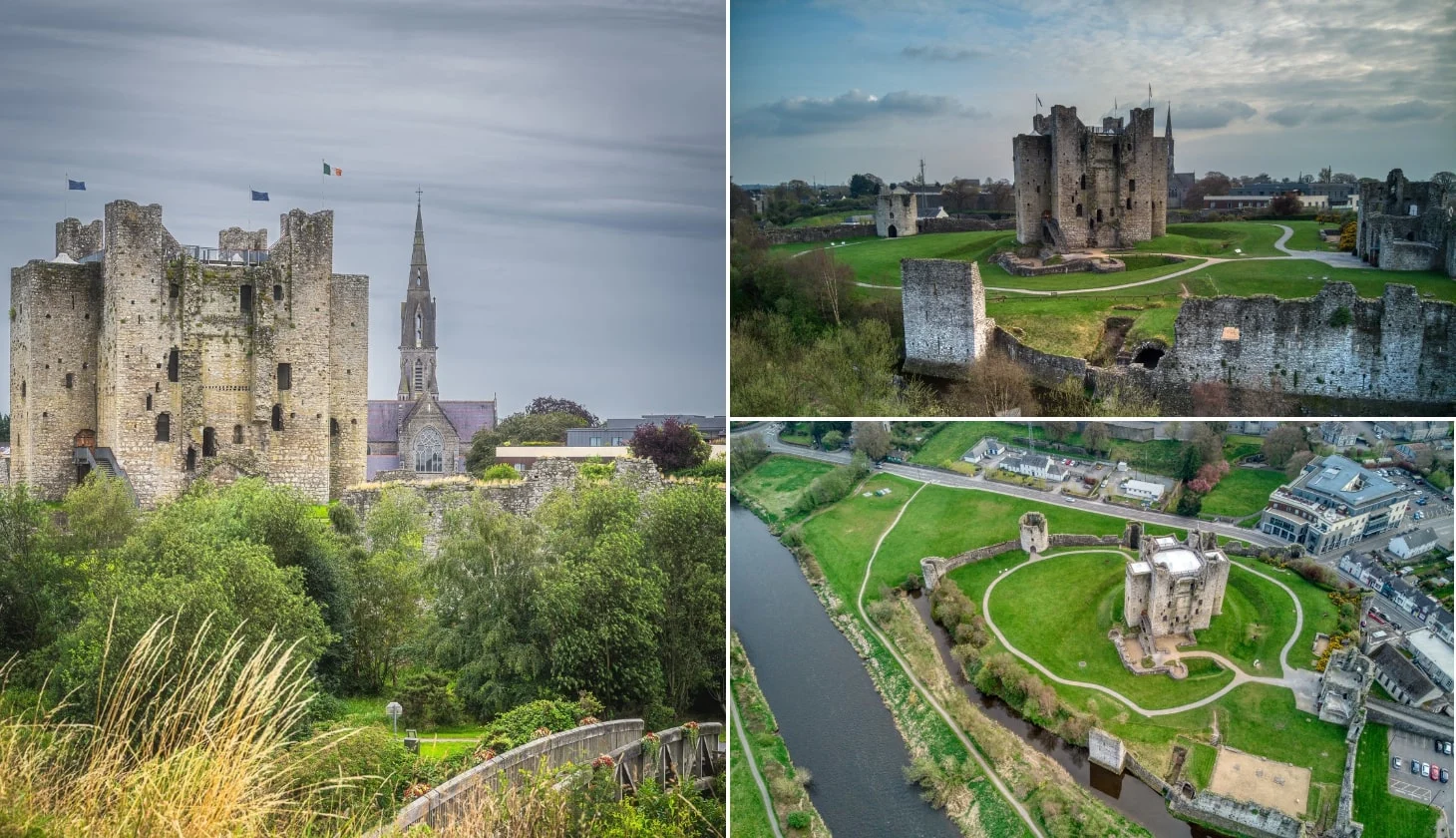
Photos via Shutterstock
Trim Castle dates back to the 12th century and is steeped in history as the site of many battles and raids. Despite its tumultuous history, it remains in great shape, with an intact tower house and walls. You’ll take a guided tour that lasts about 45 minutes.
Along the way, you’ll explore the various halls and chambers, before heading to the top of the castle to admire the amazing views of the surrounding town and countryside. If you don’t fancy going inside, you can enjoy a couple of lovely riverside walks around the outside of the castle.
Stop 5: Hill of Tara
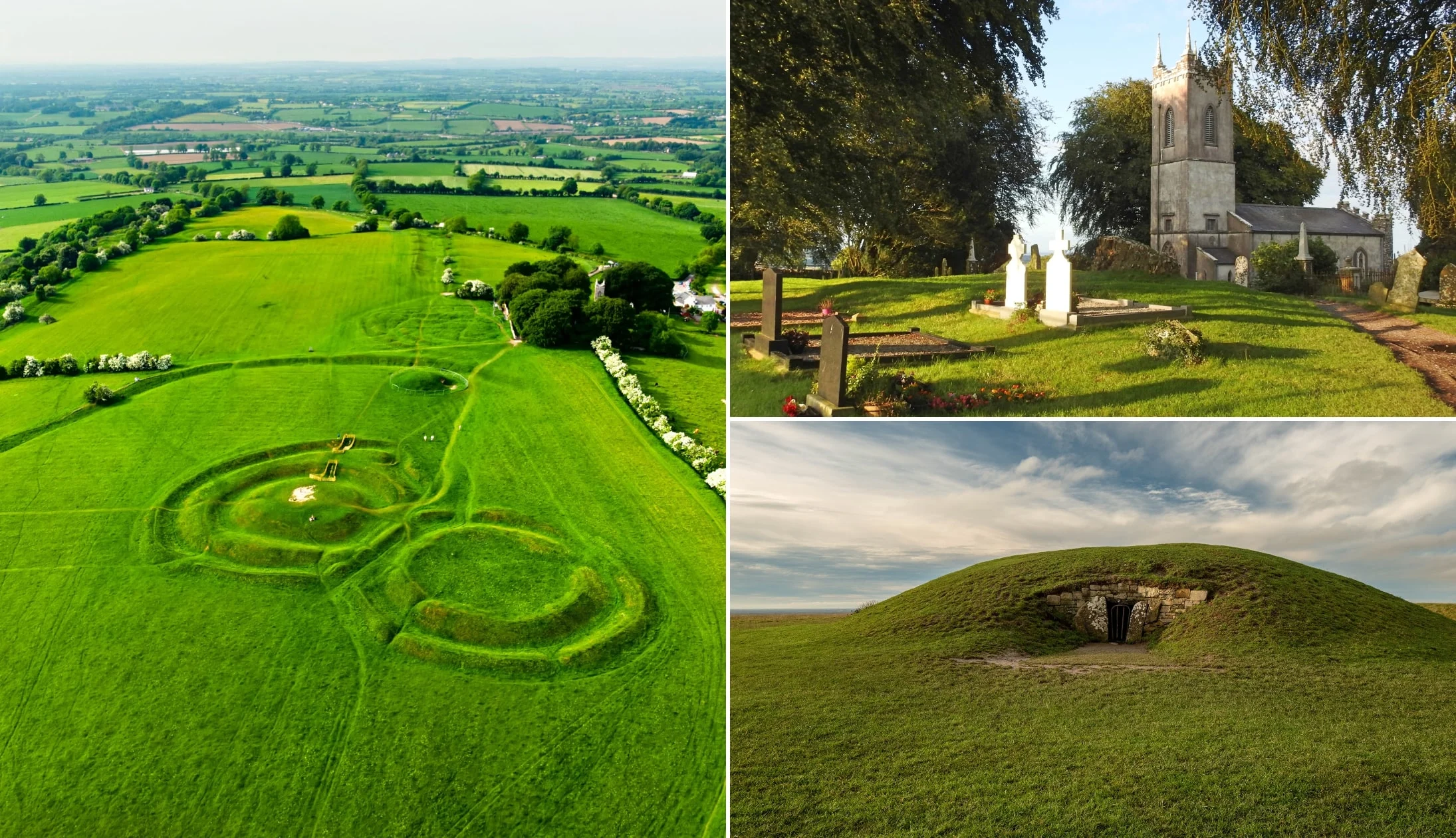
Photos via Shutterstock
Your final stop of the day is the iconic Hill of Tara. Dating back to the Iron Age, this hilltop is a veritable archaeological treasure trove and was formerly the seat of the High Kings of Ireland. The area is awash with ancient monuments, including passage tombs and burial mounds that date back thousands of years.
You can enjoy a nice walk up onto the hills to get a better look at the various ancient sites. The surrounding scenery is also breathtaking, and you can see why it was so important to the High Kings of Ireland. If you fancy a coffee, drop by Maguires Cafe and Gift Shop to refuel.
Stop 7: Back to Dublin for the night

Different trad bars in Dublin. © Tourism Ireland
With the tour over, it’s time to head back to Dublin, just in time for a bit of dinner. Check our suggestions from yesterday and enjoy some of the best pubs and restaurants that Dublin has to offer. Need more ideas? We’ve got you covered.
Our Dublin food recommendations
There’s endless excellent restaurants in Dublin. However, if we had to pick one or two…
The first would be The Bull and Castle – it’s always a good choice and it’s right across the street from the Christ Church Cathedral.
An FX Buckley steakhouse (a Dublin institution), they offer a great range of steaks cooked to perfection, paired with their incredible beef dripping chips.
The Vintage Kitchen is an alternative, but it’s best to book in advance as it’s incredibly popular. A BYOB (bring your own bottle) place, the food is phenomenal, with a small but diverse menu that features classic Irish dishes with a contemporary twist.
Our Dublin pub recommendations
There’s certainly no shortage of great pubs in Dublin. If you’re a fan of old-school pubs, follow our Dublin pub crawl guide – it contains a short route with some of the city’s finest trad bars.
McNeils on Capel Street is an authentic Dublin pub, complete with wood panelling, impromptu folk sessions, and plenty of beers on tap.
The Long Hall is another must-see. Part Victorian time capsule, part vibrant boozer, it enjoys a fantastic atmosphere and is one of the most visually stunning pubs in the city.
You’ll find trad sessions at Pipers Corner every night of the week. O’Donoghues Bar on Merrion Row is another must-visit, with vintage decor and frequent trad sessions. It’s best-known as the home of the Dubliners, who used to play here regularly.
The Celt on Talbot Street is another great choice for live music, and while it’s not always trad, the bands are normally really good.
Day 7: Waterford City
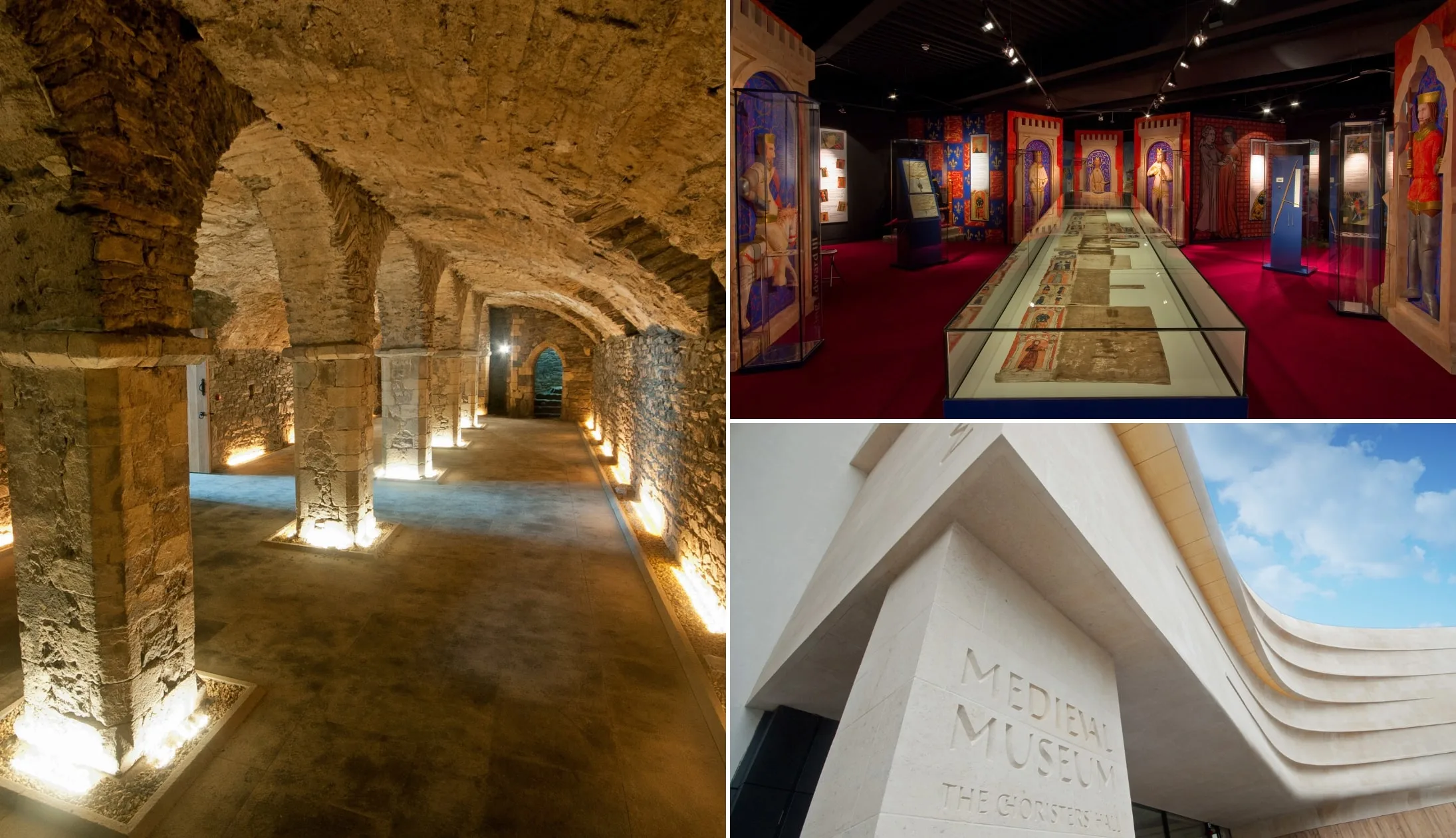
Photos courtesy Waterford Museum of Treasures via Failte Ireland
Today we head to Waterford City, Ireland’s oldest city. Sitting on the banks of the River Suir, it’s a gorgeous place to visit, and with a pedestrianised city centre, it’s a superb place to wander around, discovering the many incredible murals and walks.
Start your day with a good breakfast at your accommodation or somewhere nearby, then make your way to the train station. If you’re not hungry right now, there are plenty of shops at the station and you can easily get something to go.
It’s a fine city to spend the day exploring on foot, so rise early, and get there in time to enjoy the sights! You’ll be spending one night in Waterford, so check out these great places to stay.
Recommended accommodation in/near Waterford City
- Budget: The Vee B&B (cheap and cheerful and a 20-minute walk from main attractions) and Diamond Hill Country House (20-minute drive from the city with great reviews)
- Mid-range: Granville Hotel (cosy and super central in the city) and Tower Hotel & Leisure Centre (great views and right in the city)
- Luxury: Faithlegg Hotel (stunning hotel 20-minute drive from city)
Stop 1: Dublin Heuston
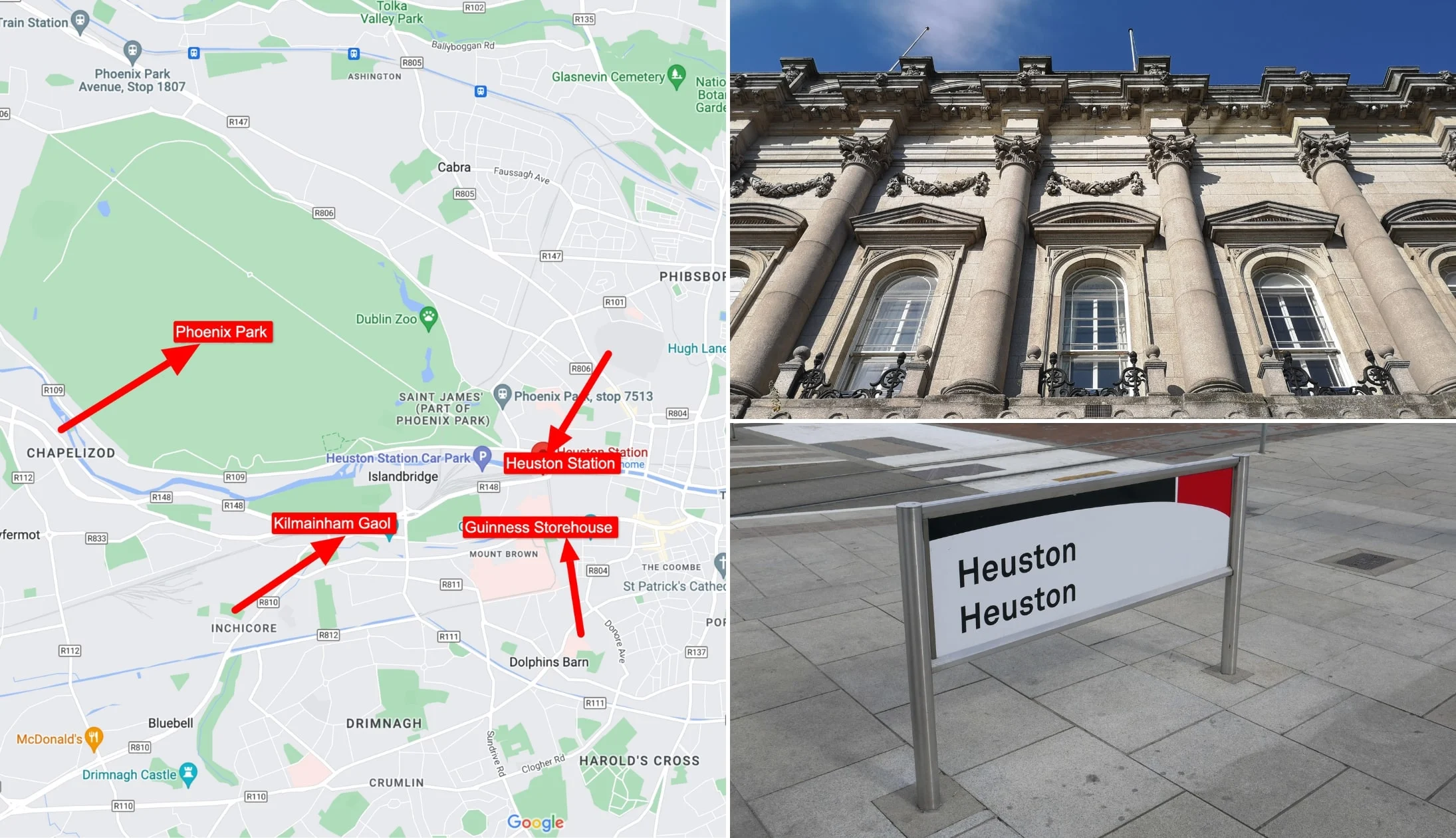
Photo left: Google Maps. Others: Shutterstock
Dublin Heuston is one of the city’s largest train stations and it’s just a little bit outside of the city centre. The easiest way to get there is to hop on the LUAS Red Line, which stops right outside the station. From here, you’ll be taking a direct train to Waterford. Some services do change at Limerick Junction, so take care when booking your ticket, and don’t be afraid to ask for help.
At the time of writing fares cost €26.15 one-way, but if you book online it’ll be as much as 50% cheaper. The journey should take about 2 hours and 20 minutes or so, so sit back and enjoy the ride.
Stop 2: Waterford Plunkett

Photos via Google Maps
Welcome to Waterford! Go drop your things off at your accommodation and then get ready to explore this incredible city. The station is located about a 10-minute walk from the city centre, but you’ll find plenty of taxis to take you to your accommodation if need be.
Stop 3: King of the Vikings
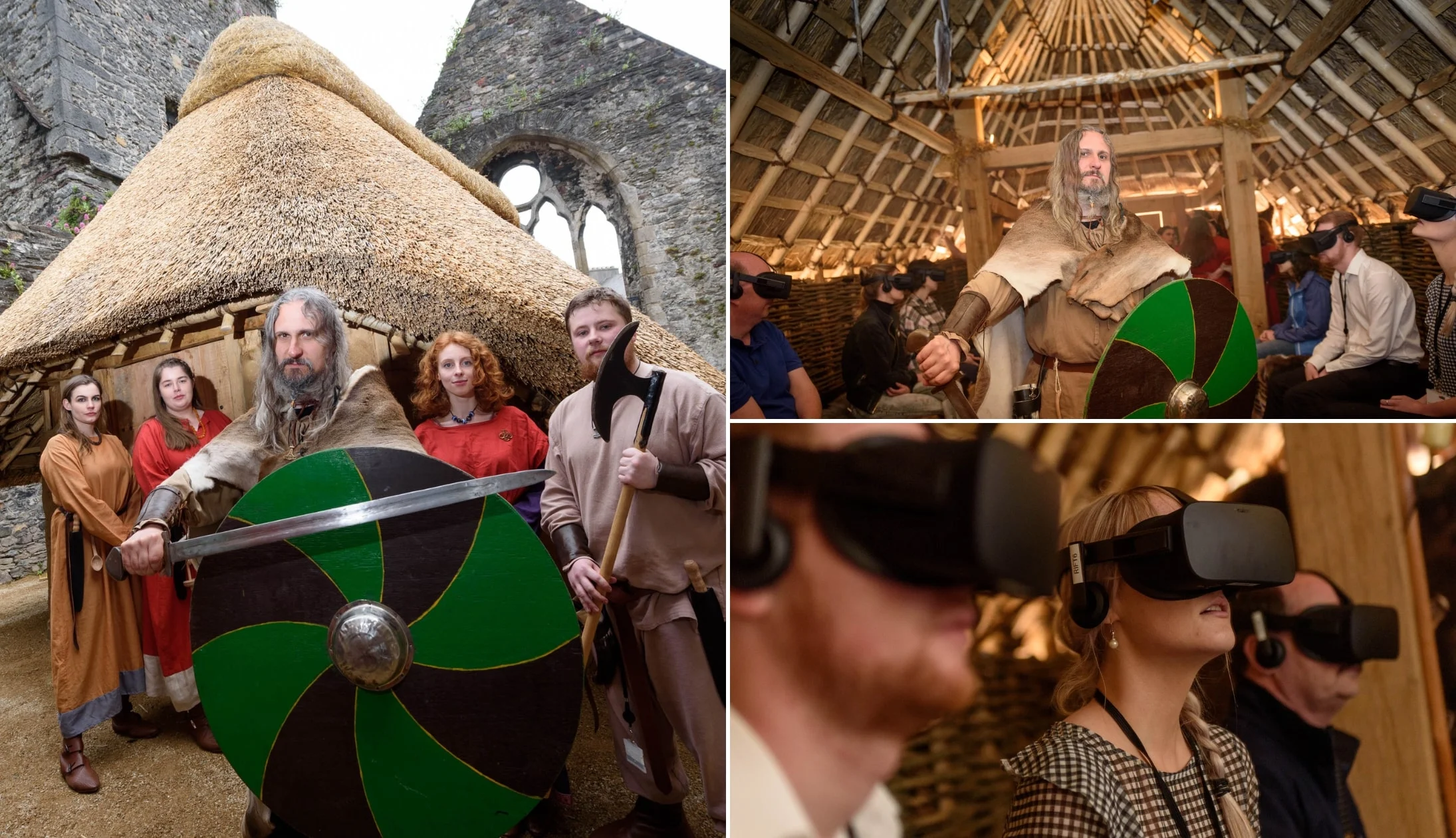
Photos by Peter Grogan_Emagine via Failte Ireland
Originally a Viking settlement, Waterford is the oldest city in Ireland. The King of the Vikings Experience is a great way to step back in time and see how the city would have looked as a Viking settlement. Located in the Viking Triangle section of the city, it offers an unrivalled virtual reality experience that takes you into the world of the Vikings.
The experience lasts around 30 minutes and costs €10 for an adult ticket, and it’s well worth booking ahead. It’s located right in the city centre, so depending on your accommodation, you should easily be able to walk or take a bus to it, with several bus routes stopping close by.
Stop 4: Reginald’s Tower
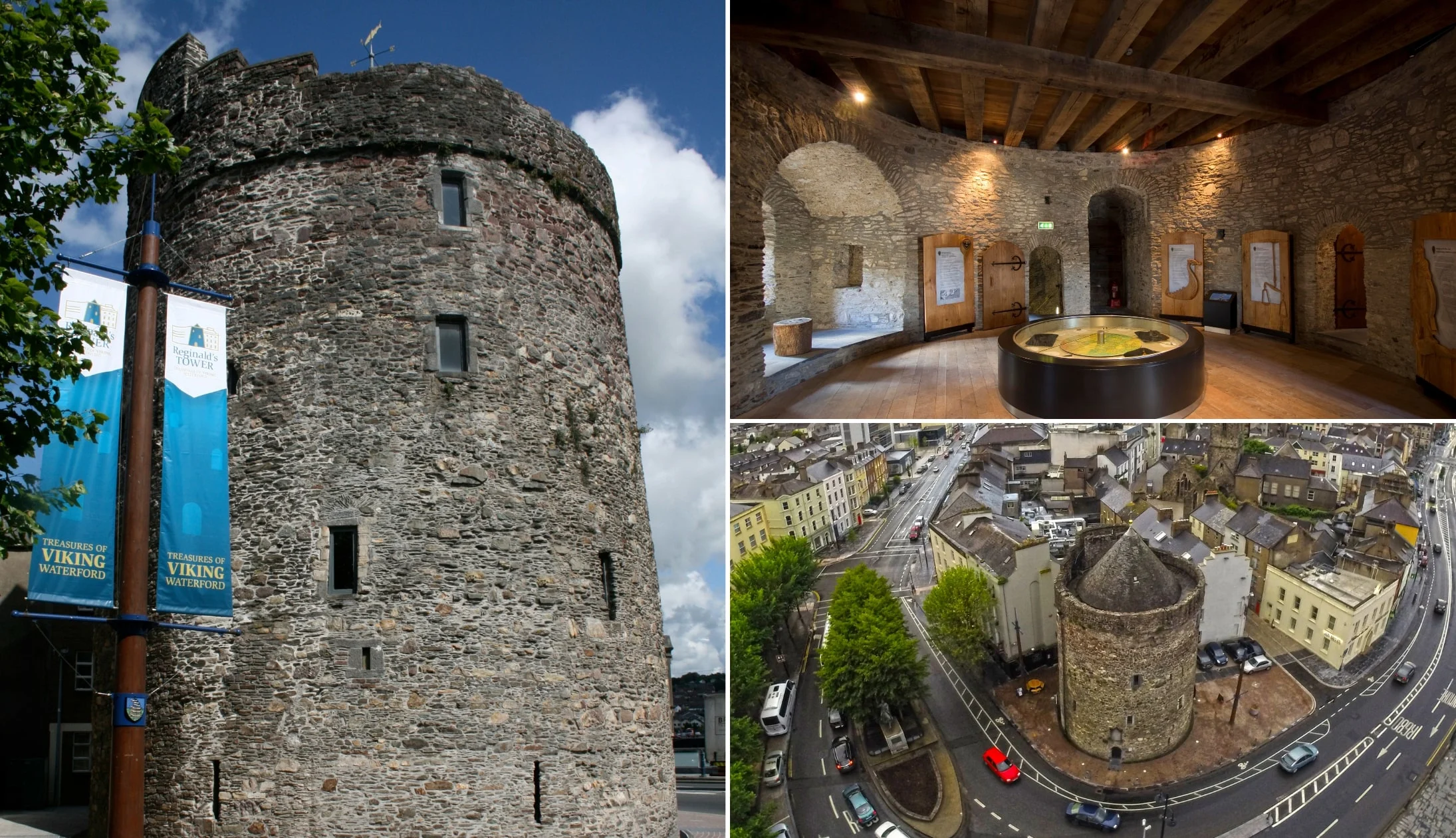
Photos courtesy Waterford Museum of Treasures via Failte Ireland
Just a 3-minute walk from the King of the Vikings experience, Reginald’s Tower is another iconic sight in Waterford. Having seen continuous use for more than 800 years, it’s Waterford’s landmark monument and Ireland’s oldest civic building. Visitors can enjoy a self-guided audio tour of the tower, which boasts the largest collection of Viking treasures, including swords, brooches, and much more.
Stop 5: Lunch
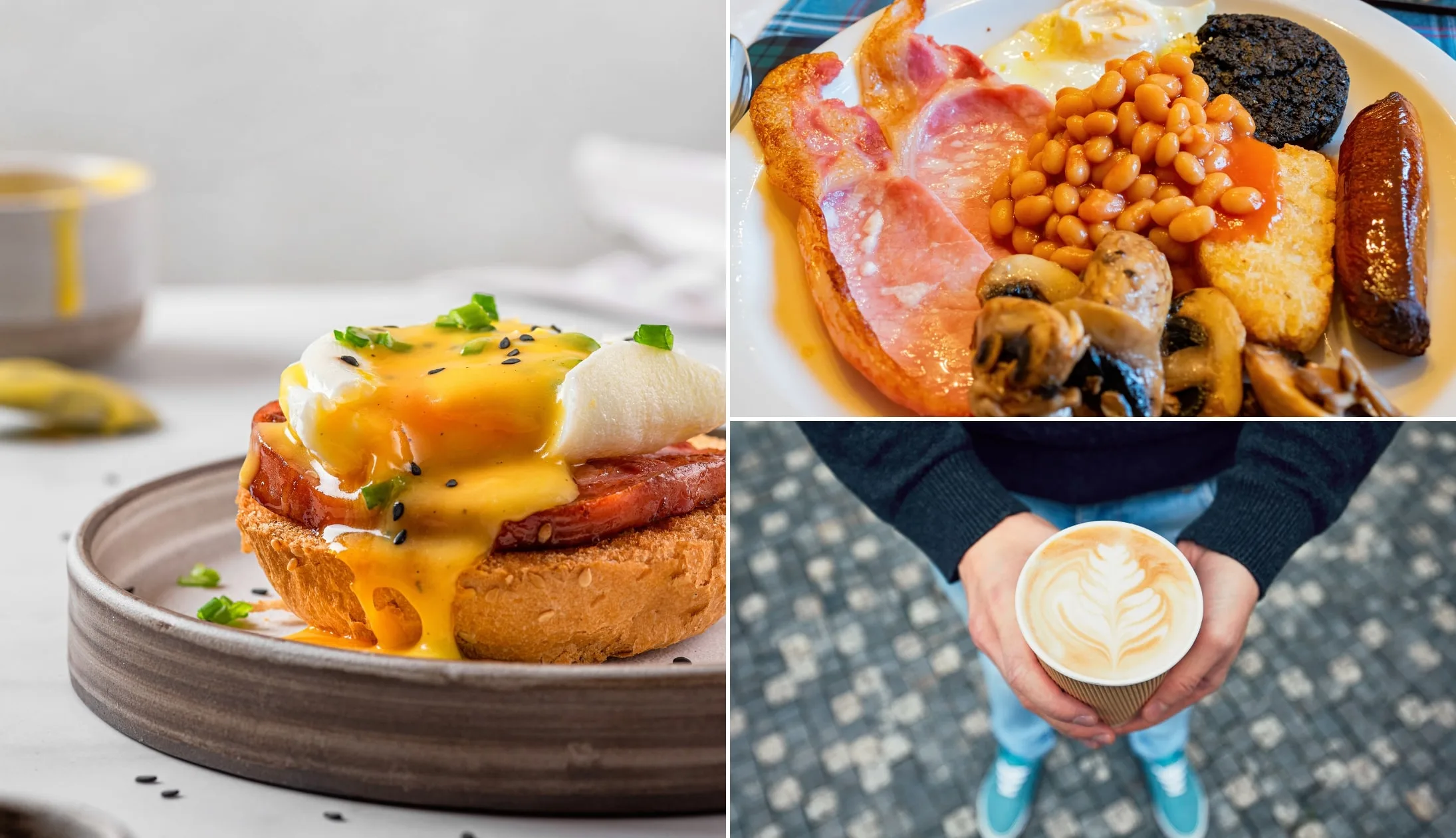
Photos via Shutterstock
If you’re hungry, Waterford boasts some spectacular places to grab a bite to eat. Our next stops are nearby so you won’t want to stray too far. Both Emilios and McLeary’s are just a 2-minute walk away from Reginald’s Tower. The former is a cosy little Italian restaurant serving up gorgeous Italian dishes made from fresh, local ingredients.
Meanwhile, McLeary’s is a fantastic Irish restaurant that serves a mix of traditional Irish classics, like lamb shanks, as well as delicious seafood. Their seafood chowder is to die for!
Stop 6: Waterford Treasures: Medieval Museum

Photos courtesy Waterford Museum of Treasures via Failte Ireland
Our next stop is just a couple of minutes’ walk away from both of our suggested cafes, ideal for a leisurely post-lunch wander. The Medieval Museum offers a great chance to soak up the story of what life was like in Historic Waterford City. It’s packed full of fascinating exhibits and displays, with highlights including the unique 4-metre-long illuminated Great Charter Roll of Waterford (1373) as well as the sumptuous cloth-of-gold vestments (1460).
You can wander around at your own pace, or take a guided tour for a deeper insight into the Waterford of yesteryear.
Stop 7: Waterford Treasures: The Bishop’s Palace
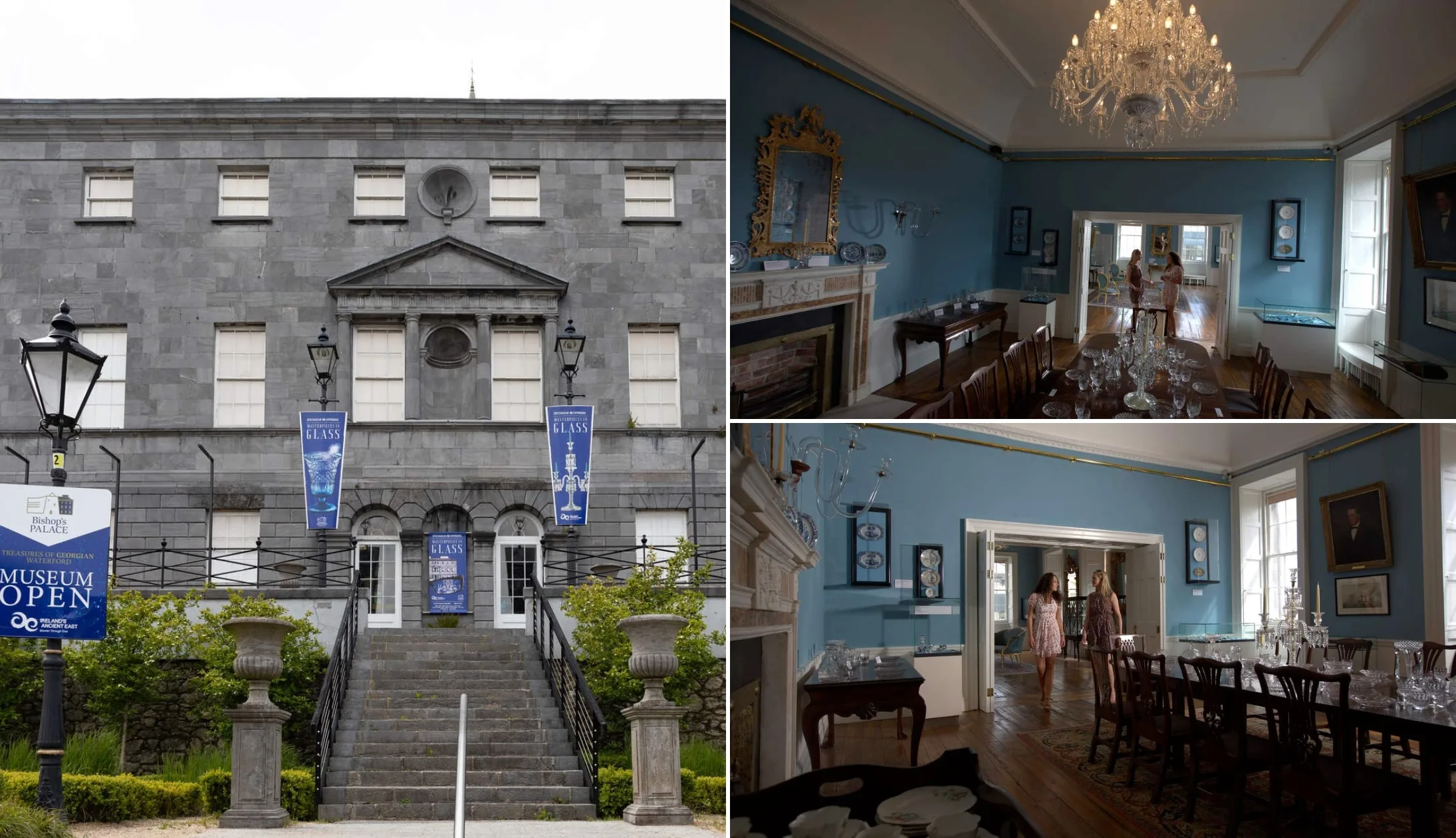
Photo left: Joseph Carr. Others: Keith Fitzgerald/George Munday
The Bishop’s Palace is another treat, and again, just a short walk from our previous stop. As you walk in, it feels like you’ve stepped into someone’s house! It’s a fascinating experience and you’ll get the chance to check out some curious Georgian and Victorian artefacts. Along the way, take in incredible works of art, Waterford Glassware, furniture, silverware, and much more.
Once again, you can enjoy a guided tour, which will last about 45 minutes or enjoy the sights at your own pace.
Stop 8: Dinner, drinks and live music
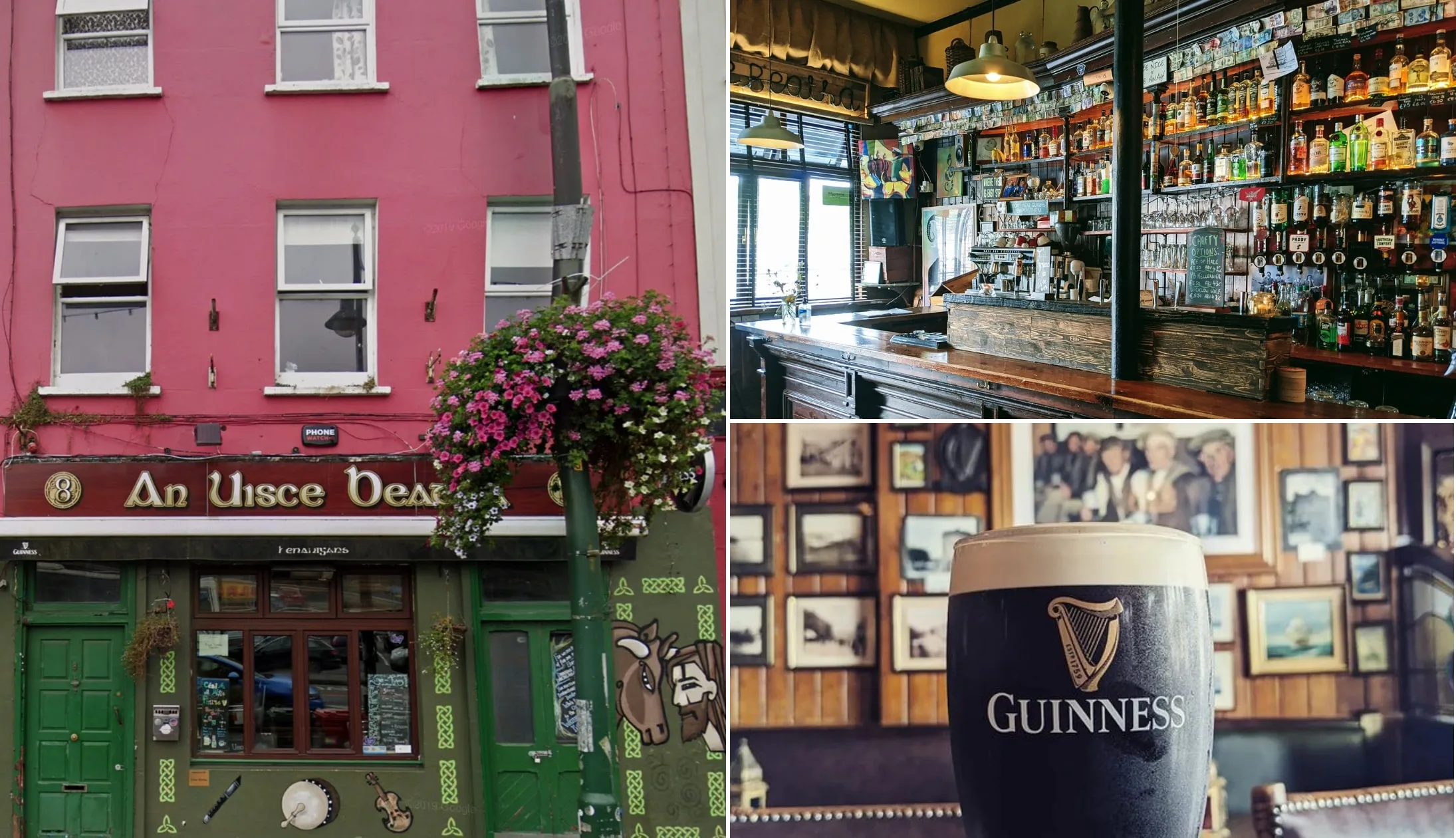
Photo left: Google Maps. Others via An Uisce Beatha on Fb
If time allows, feel free to wander around and take in as many sights as you like. When you’re done, you’ll find a host of superb restaurants and pubs to check out during the evening.
Our Waterford food recommendations
There’s some excellent restaurants in Waterford. Momo Restaurant on Patrick Street always tops our list and with its vibrant lime green paintwork, it’s hard to miss. The Mediterranean-influenced menu is extensive, and you’ll find plenty of Irish classics on there too, such as their succulent slow-cooked beef rib.
Bodega is another great choice, a small but vibrant restaurant with a diverse menu. Finally, specialising in steak and seafood, Sheehan is always worth a visit.
Our Waterford pub recommendations
For an authentic old-world atmosphere, J&K Walsh Victorian Pub and Grocers is a must-see on O’Connell Street. Check out the old wooden cabinets, brass scales and spice drawers, unchanged since 1899 when the place opened.
Nurse a Guinness in the snug, perch on round wooden stools at the bar or order coffee through the hatch in the tea/coffee room. You can even enjoy a pint pulled from original 1960s beer taps!
An Uisce Beatha is another must. Meaning the “Water of Life” in Irish, the is a welcoming pub on Merchant’s Quay. The Main Bar, Snug and Pool Room have tables named after musicians.
Another timeless gem on O’Connell Street, Tully’s Bar has a traditional frontage and outdoor tables for resting your feet while sipping and supping. It boasts a great selection of locally brewed beers on tap, as well as a fine whiskey selection. Best of all, they boast regular live music sessions.
Day 8: Limerick City
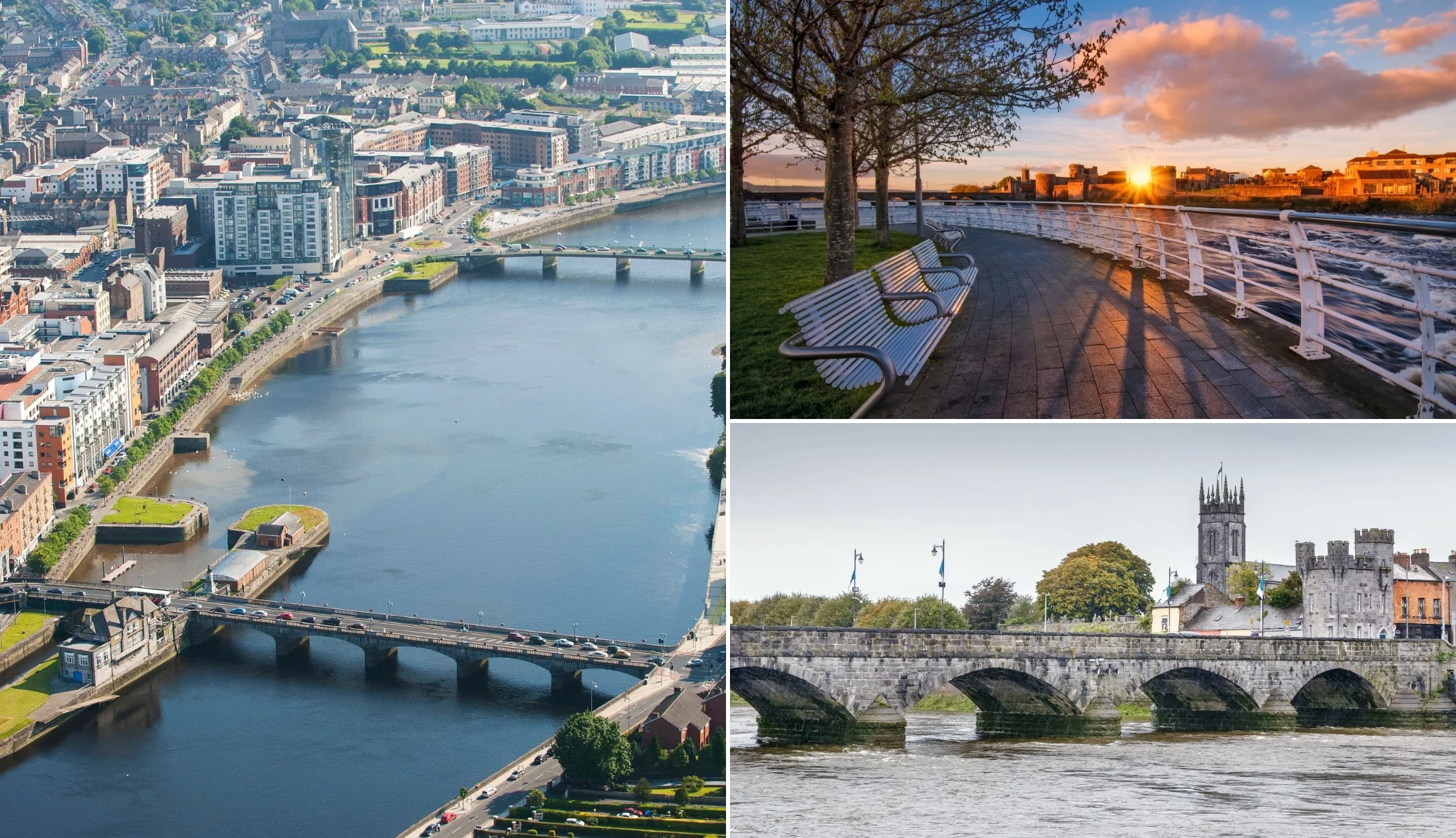
Photos via Shutterstock
Rise and shine nice and early so as to make the most of the day! Grab breakfast at your accommodation or check out one of Waterford’s many spectacular cafes.
The Granary never fails to offer up a fantastic full Irish, although their breakfast roll is also great. Plus, they make a beautiful cup of coffee.
After a short but sweet stay in Waterford, it’s off to beautiful Limerick City by train. Once you arrive, you can enjoy seeing the sights and attractions on foot.
We’ll be spending one night in Limerick City, so check out the following options.
Recommended accommodation in Limerick
- Budget: Woodfield House Hotel (15-minute walk from the city with excellent reviews) and Shelbourne House (cosy spot 20 minutes walk from the castle)
- Mid-range: Limerick City Hotel (very central hotel near the river) and The Bedford (very central boutique townhouse with exceptional reviews)
- Luxury: The Savoy Hotel (central, boutique 5-star) and The George (central spot on O’Connell Street in Limerick city centre)
Stop 1: Waterford Plunkett

Photos via Google Maps
It’s back to Waterford Plunkett Station to get the train to Limerick today. Unfortunately, there are no direct trains between Limerick and Waterford, so you will have to change trains at least once. Be advised, Limerick Junction train station is not actually in Limerick. Normally, you’ll change here and take an intercity service to Limerick Colbert, which is more central.
It is best to book online for cheaper rates, though if you buy your ticket at the station, you can expect to pay around €20.80. The journey to Limerick should take about 2 hours and 40 minutes.
Stop 2: Limerick Colbert

Photos via Google Maps
Welcome to Limerick! From the station, you can head to your accommodation to freshen up and drop your bags off. You’ll normally find plenty of taxis waiting, though several bus routes also serve the station. Alternatively, it’s just a 10-minute walk into the centre of town.
Stop 3: The Hunt Museum
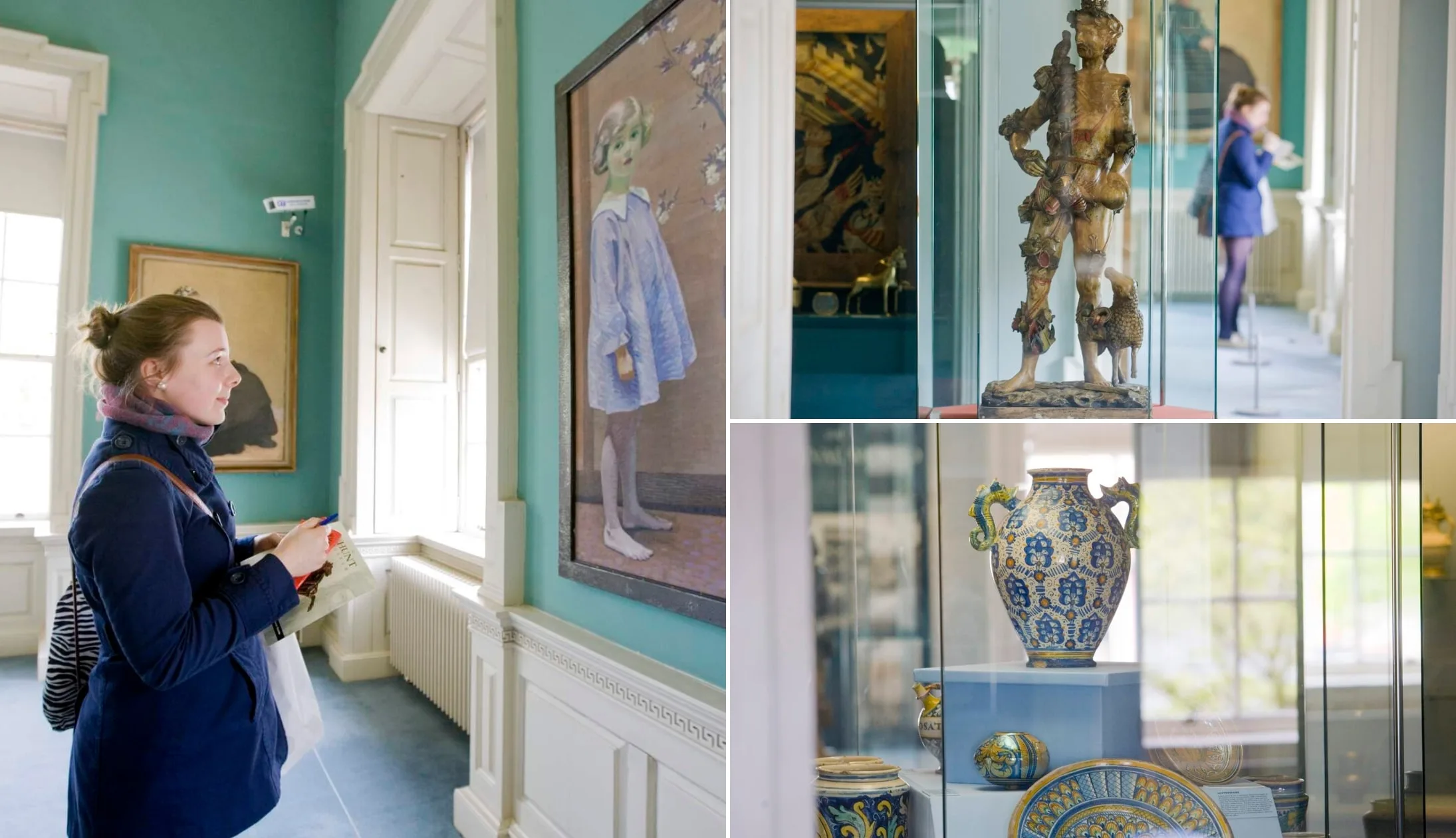
Photos via Tourism Ireland’s Content Pool
Sitting on the outskirts of the city centre and overlooking the River Shannon, the Hunt Museum is well worth a visit if you’re in Limerick City. It boasts the collection of John and Gertrude Hunt who amassed over 2,000 works of art during their lifetime.
There are three different tours available at the Hunt Museum and each tour explores a different area of the museum from modern art to artefacts dating back to the Middle Ages (get your ticket online here).
Getting to the museum is easy enough. It’s a 5-minute walk from the city centre and areas like the Milk Market. If you’re taking the bus from your accommodation, Patrick Street is the nearest station, served by bus routes 323, 301, and 341.
Stop 4: Lunch
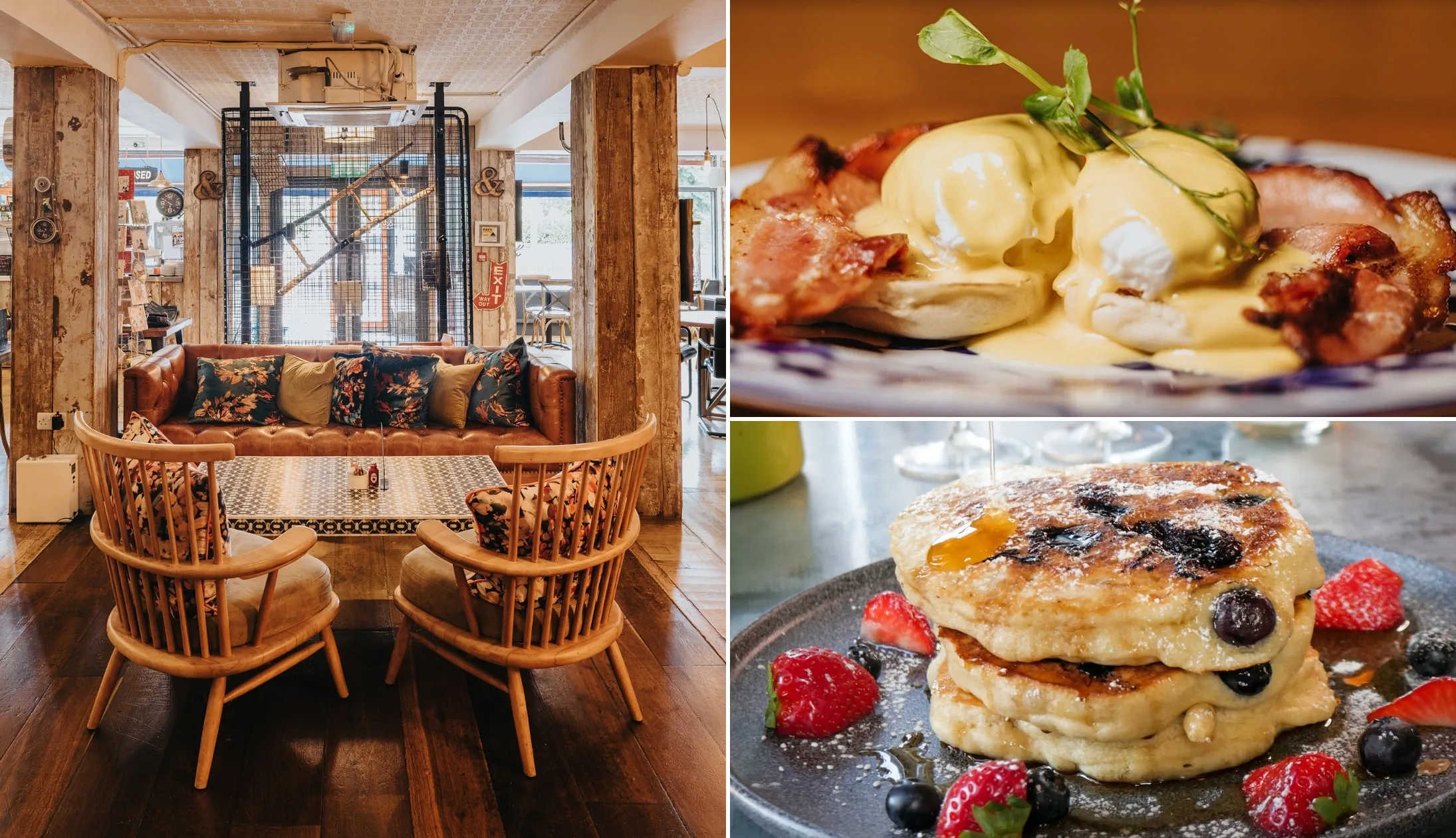
Photos via Hook and Ladder on FB
If you’re in Limerick on Friday, Saturday, or Sunday, it’s well worth heading to the Milk Market for lunch. Just a 5-minute walk away from the museum, it boasts a wealth of cafes and street food vendors to check out for a light bite.
Alternatively, head into town and check out Hook and Ladder on Sarsfield Street. They serve up a wide range of light lunches, like sandwiches, wraps, and soups, as well as heavier dishes, like burgers and pasta, with a number of vegan options. The Buttery is another good choice, and you can enjoy a superb burger from them. Both are just a six-minute walk from the Hunt Museum, in the heart of town.
Stop 5: The Treaty Stone

Photos via Shutterstock
For a nice post-lunch stroll that takes in some gorgeous views over the river, we’re going to take the long way round to King John’s Castle, via the Treaty Stone. From the city centre, cross the River Shannon and the Island on the Sarsfield Bridge. Take a right and follow the river bank. At the end of the boardwalk, you’ll reach the Treaty Stone, about a 10-minute walk from where you had lunch.
The Treaty Stone is one of Limerick’s most important monuments. It was here that the Treaty of Limerick was signed, which signalled the end of the Williamite-Jacobite War. There’s a lot of backstory to that war, but to keep it brief, it resulted in some of the bloodiest battles ever fought in the British Isles. After the Jacobite forces suffered a terrible defeat, the survivors of the two armies converged on Limerick to sign the peace treaty. It’s because of this event that Limerick is called Treaty City to this day.
You’ll not need to stay long here, but it’s a fascinating pit stop.
Stop 6: King John’s Castle
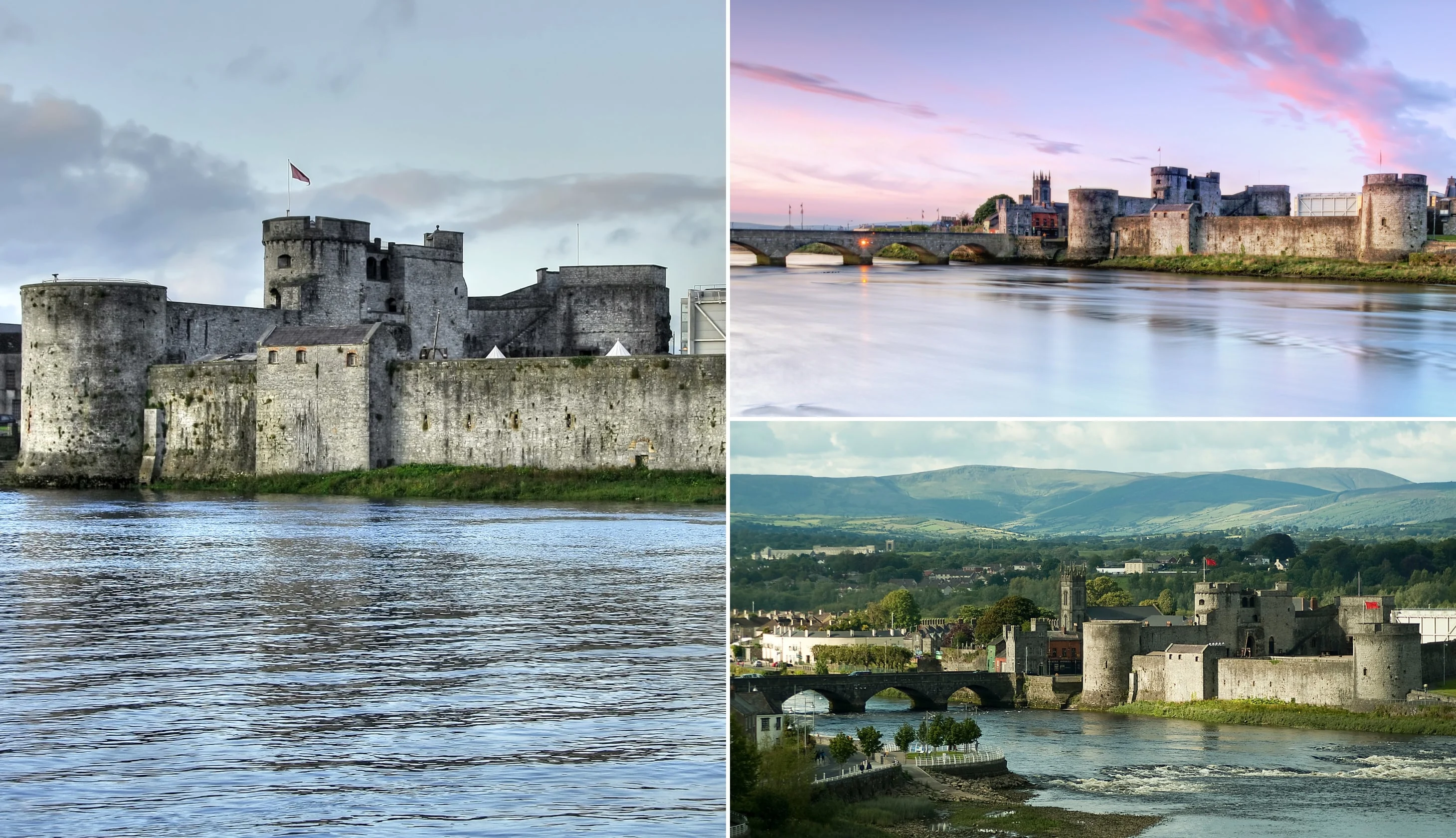
Photos via Shutterstock
When you’ve finished at the Treaty Stone, continue on and cross over Thomond Bridge. King John’s Castle is right on the other side. Perched on the edge of the River Shannon and dating back to the 13th century, King John’s Castle is arguably one of the most impressive castles in Ireland. Having seen its fair share of action over the years, it offers an immersive tour and plenty of unique features to explore.
The castle’s Interactive Exhibition immerses you in 800 years of history, from the origins of the castle to the present day, while colourful characters like Nicholas the Master Mason and the grim Constable Roger De Lees help bring the stories to life.
After exploring the inside, stroll around the courtyard where you’ll find a blacksmith’s workshop equipped with ancient tools and weapons, as well as siege shelters.
Stop 7: St Mary’s Cathedral
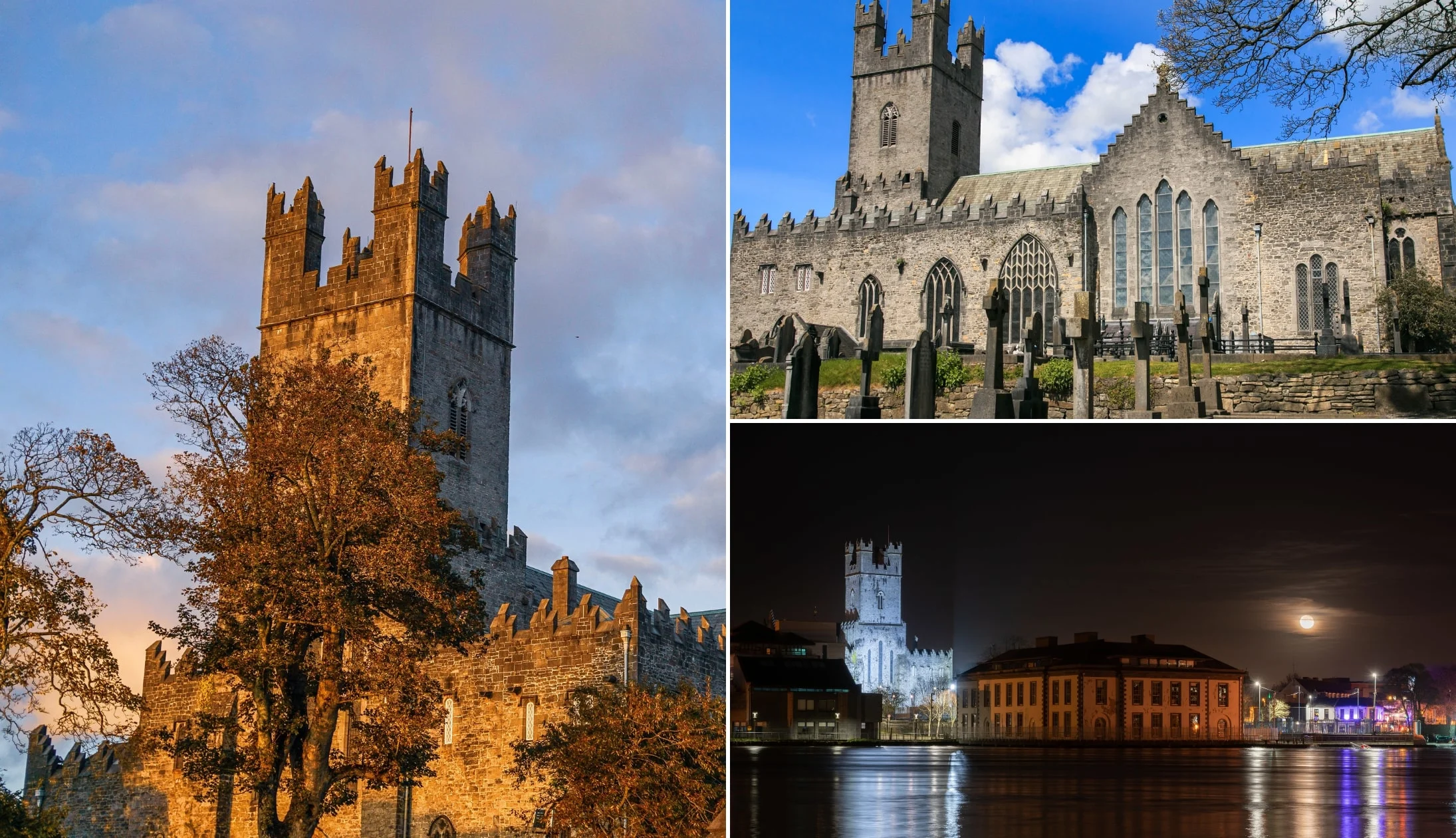
Photos via Shutterstock
St Mary’s Cathedral is just a 5-minute stroll from the castle down the charming Nicholas Street. If you fancy a sneaky pint halfway, drop by Treaty City Brewery and enjoy a locally made beer in their tap room, which overlooks the brewery. It’s open from 4 pm Thursday, Friday, and Sunday, and 12 pm on Saturdays and is a must for beer lovers! Once you’re done, it’s just a short walk to the Cathedral.
St Mary’s Cathedral is located on Bridge Street and is the oldest building in Limerick still in use to this day. It features the only remaining pre-Elizabethan carved misericords in the whole of Ireland and is characterised by colourful stained glass windows and some magnificent architecture. You can pay a small fee to visit the inside, or just enjoy the view from outside.
Stop 8: Dinner, drinks and live music
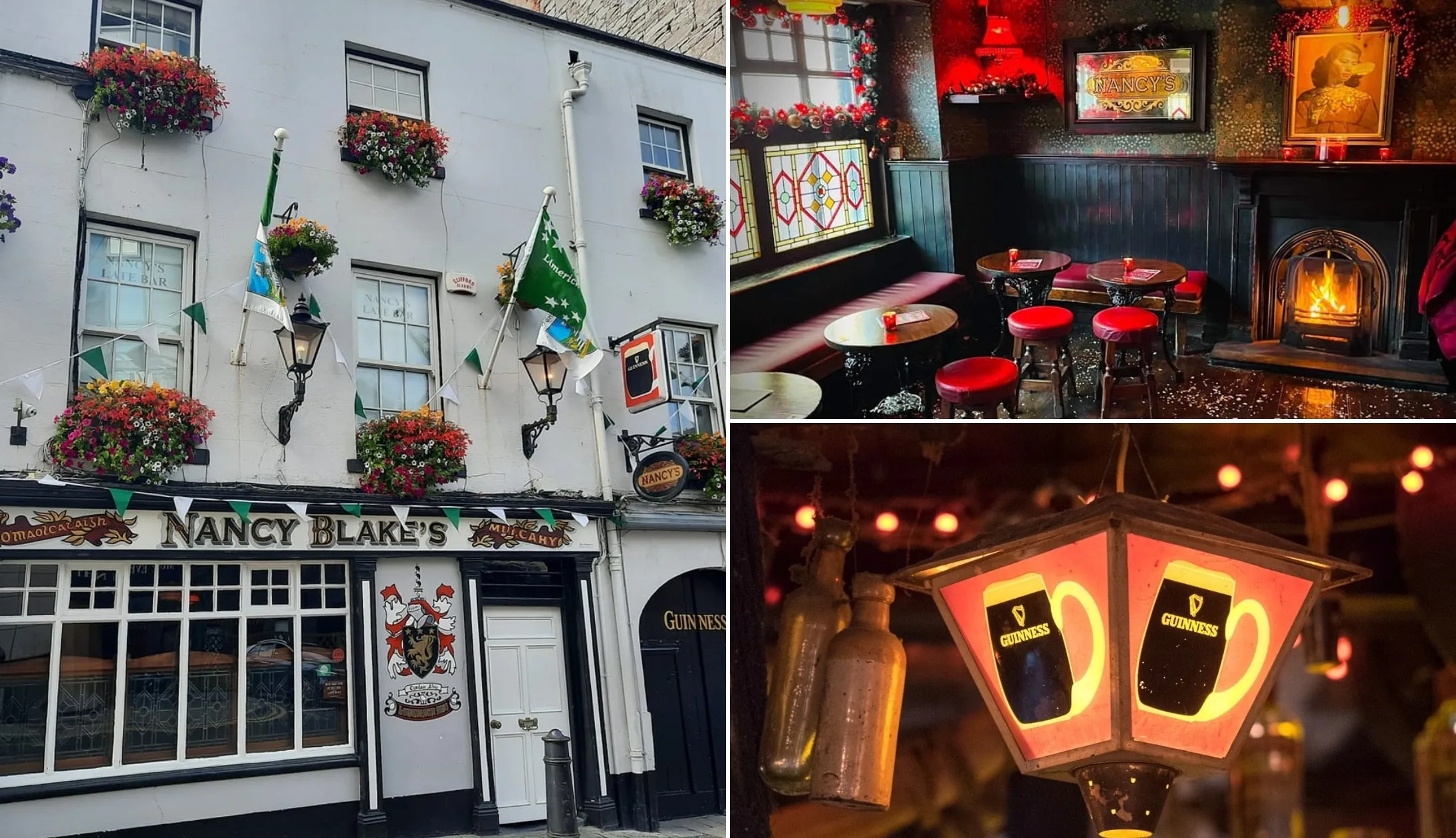
Photos via Nancy Blakes on FB
There’s some excellent restaurants in Limerick and there’s an almost endless number of old-school pubs in Limerick worth kicking back in.
Here are some of our favourites.
Our Limerick food recommendations
For us, there’s no better spot to hit than The Curragower. Not only does this place serve up some beautifully prepared award-winning food, but it also boasts one of Limerick’s finest beer gardens.
Their seafood is all locally sourced too, so do yourself a favour and get stuck into their pan-fried sea bass or lemon sole!
With views over the Shannon across to the handsome King John’s Castle and Limerick Town Hall, it’s a great spot to watch the sun go down.
The Spitjack is another favourite, a rotisserie brasserie that offers a fantastic menu.
Our Limerick pubs recommendations
Tom Collins’ Bar on Cecil Street is one of the cosiest pubs in Limerick and there are few better places for warming winter whiskey or a hearty pint of the black stuff. Another of our favourite haunts is Nancy Blakes (a glance at the photos above should reveal why!).
For something really different, take a 15-minute walk from the town centre (or a taxi) and check out one of the best-kept secrets in Limerick, Charlie Malones. With an old-school, country pub vibe, it offers an authentic Irish pub experience.
Located on Dock Road just a short walk from Sarsfield’s Bridge and the city centre, Dolan’s features regular performances from local musicians and performers from all over Ireland.
The Locke Bar is another good choice, with regular live music and even the occasional round of Irish dancing.
Day 9: The trip to Galway
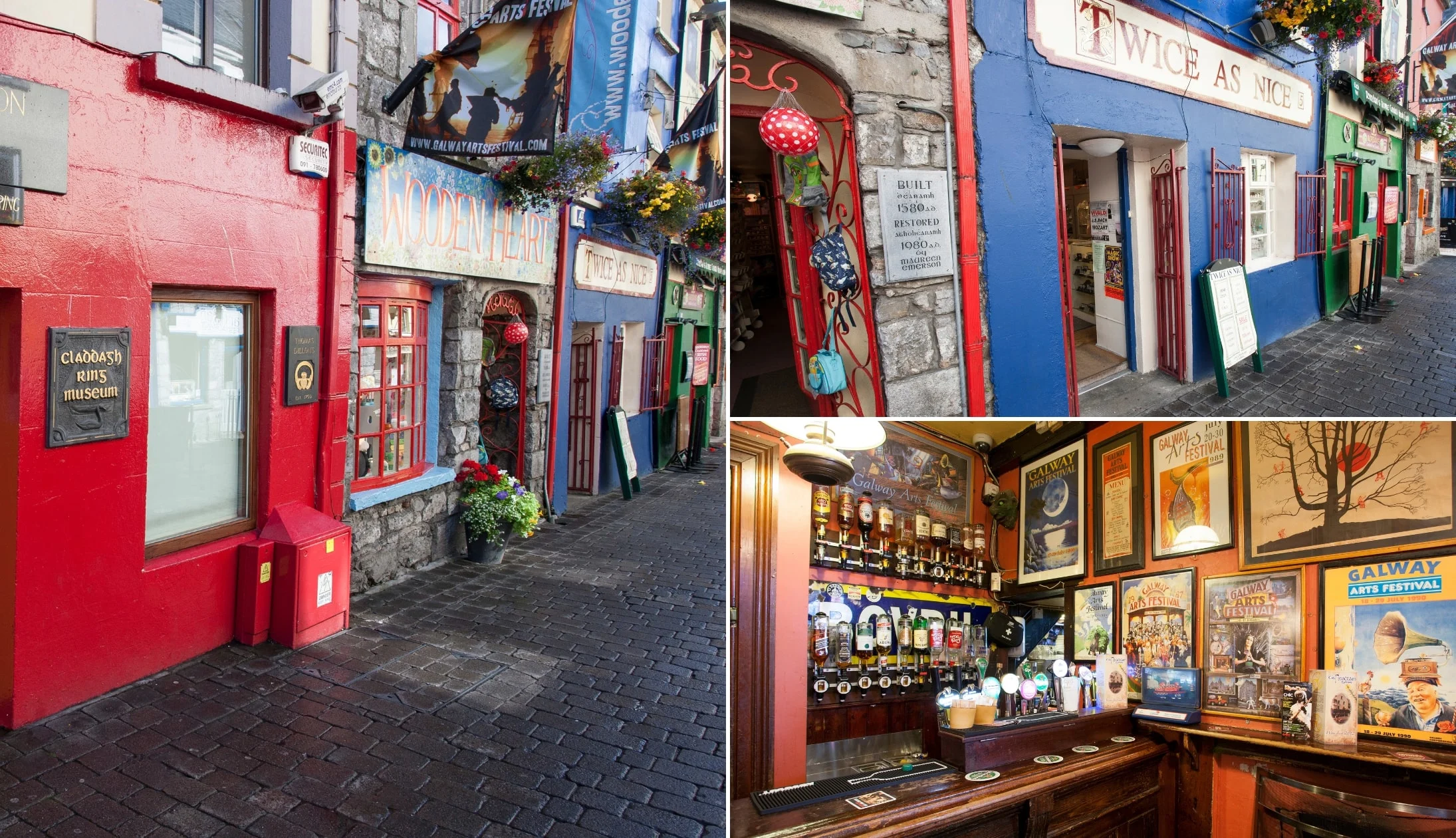
Photos by Stephen Power via Ireland’s Content Pool
Day 9 sees us heading to Galway, which will be our base for the next four days.
Enjoy a tasty breakfast at your accommodation, or head to one of the many cafes in town if time allows. The Hook and Ladder offer a superb breakfast menu, and their eggs benedict is hard to beat.
When you’re ready, hit the road, but make sure you’ve you’re accommodation booked well in advance.
Recommended accommodation in Galway
- Budget: Feeney’s Audubon Lodge (in Salthill outside of the city by the sea) and Corrib View Guesthouse (a 45-minute walk from Eyre Square)
- Mid-range: Balcony House B&B (10-minute walk from Eyre Square) and Ash Grove House (gorgeous guesthouse near Galway Cathedral)
- Luxury: The G Hotel (luxury hotel in the city) and Glenlo Abbey (one of Ireland’s top hotels – 15-minute drive from the city)
Stop 1: Getting to Galway City from Limerick

Photos via Google Maps
Getting to Galway from Limerick is fairly easy by public transport and you have two options, bus or train. The bus is fairly straightforward, but it’s quite a long journey.
The train is more convenient, as long as you make sure to book a direct journey! Let’s find out more.
Option 1: Bus
Both Citylink and Expressway offer a direct bus service from Limerick to Galway. The Citylink Express Service departs from Limerick – Henry Street Station and arrives at Galway Coach Station, Fairgreen Rd. Both stations are fairly central. Expressway offers hourly services between Limerick Bus Station (next to Limerick Colbert Train Station) and Galway Bus Station.
Option 2: Train
The train tends to be a bit more convenient than the bus, but it can be a little tricky. There are only a few direct services a day, so it’s important to take care when booking your tickets. Otherwise, you can end up travelling across the country to Dublin, only to travel back again on a different train to Galway.
Stop 2: Check in, get lunch and decide between walking or the bus
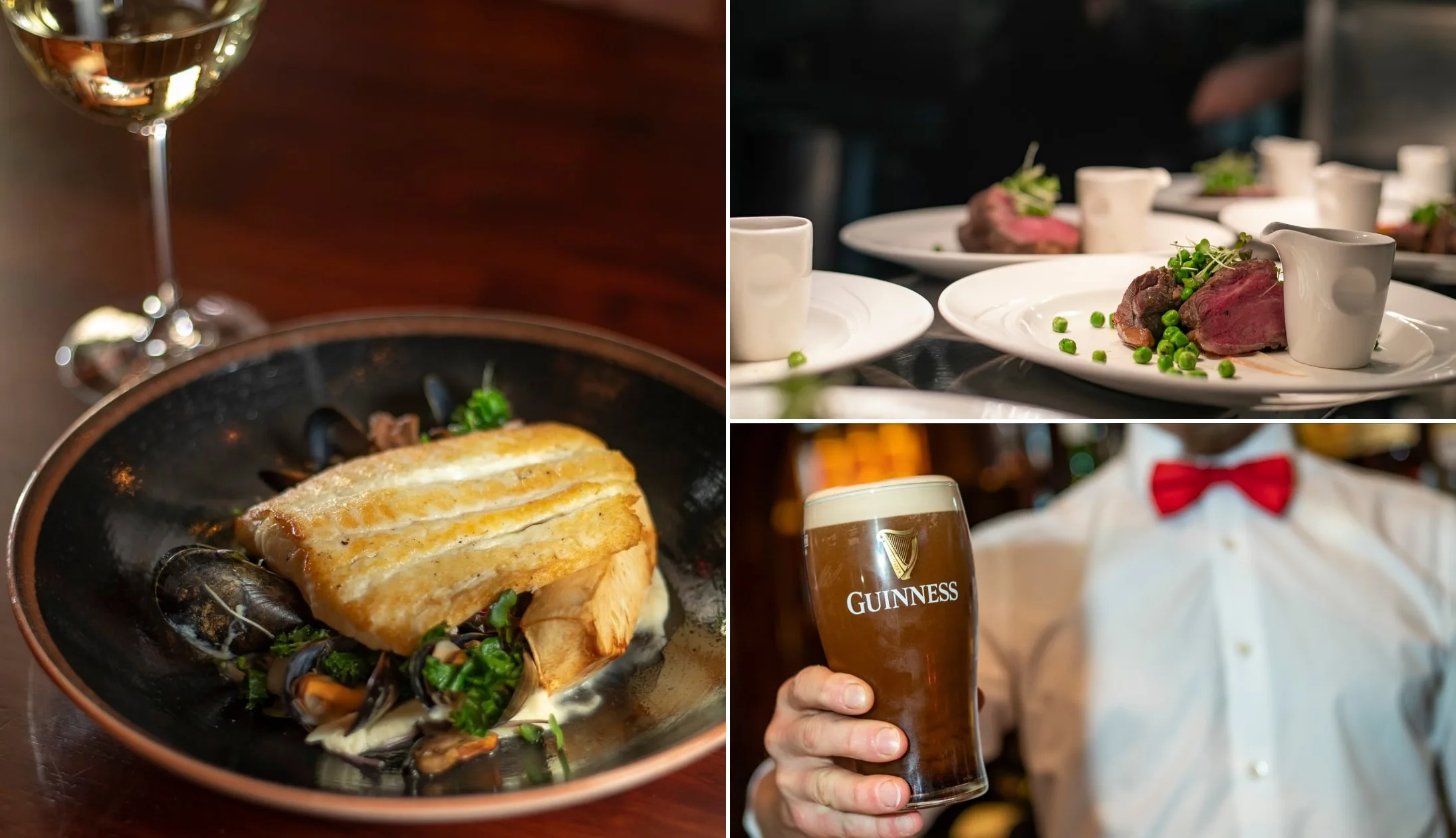
Photos via Blakes Bar Galway on FB
When you land in Galway, head to your accommodation, get checked in and head for lunch.
By now, you must be hungry. There are heaps of brilliant places for lunch in Galway, but if you don’t want the hassle of finding somewhere to eat, we’ve got a few suggestions!
We recommend Blakes Bar (traditional pub grub), Zappis (authentic Italian cuisine), or Tigh Neachtain (Irish and international cuisine).
Now, Galway is a very walkable city, but if it’s raining or if you fancy getting dropped to the ‘main’ attractions the hop-on/hop-off bus tour is well worth buying.
Regardless of which option you choose, here are some of our favourite sites in Galway City (we’ve listed them in a logical way for you to walk between them).
Stop 3: Galway Cathedral
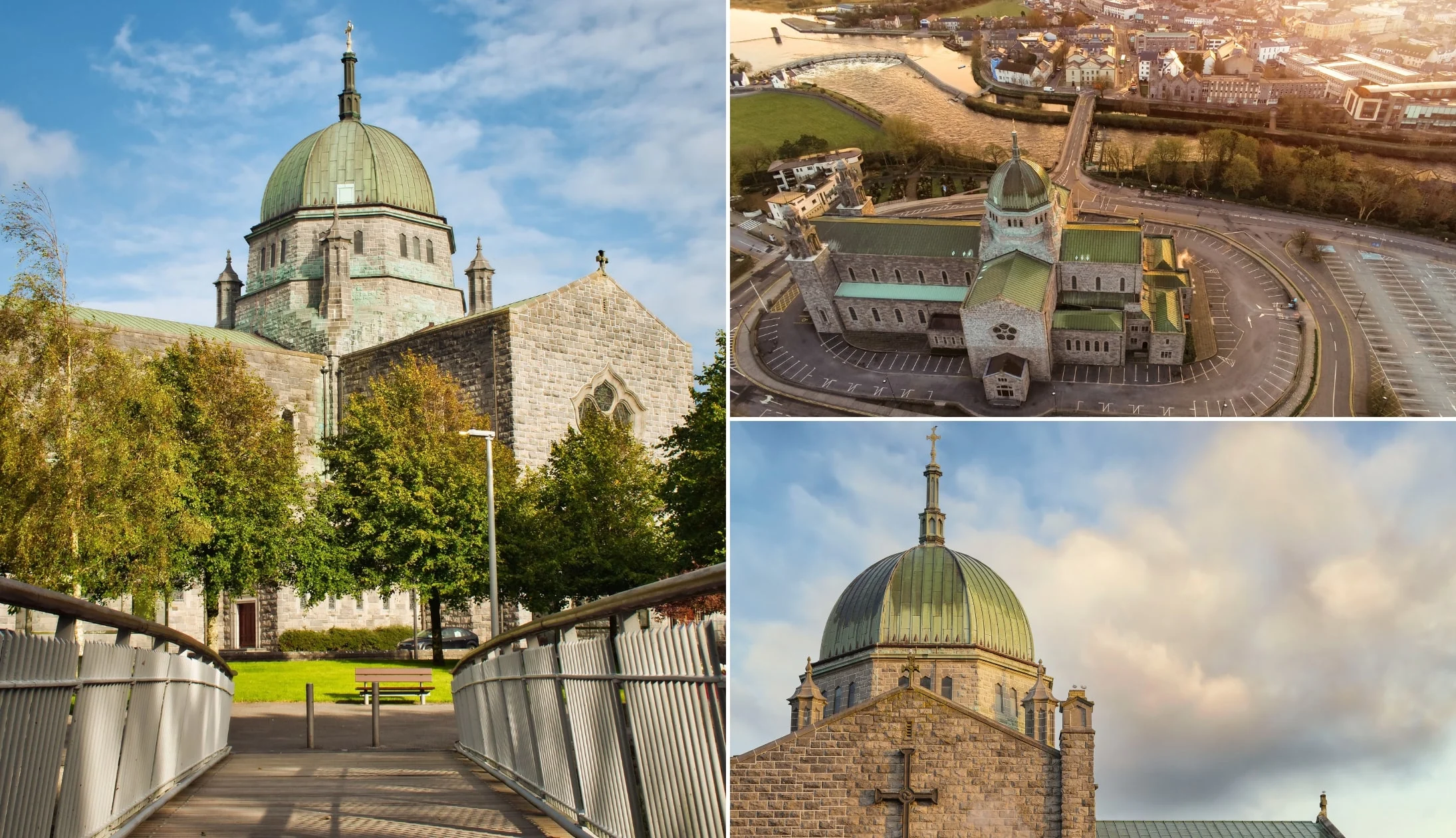
Photos via Shutterstock
Galway Cathedral is wonderfully impressive both inside and out. It’s arguably the jewel in the Galway City skyline and you’ll cop it from many places as you stroll around the city.
Interestingly enough, it’s not as old as it looks, and construction on the building was only completed in 1965, earning it the title of ‘the last great stone cathedral to be constructed in Europe’.
The cathedral is free to enter, but visitors are asked for a donation of €2 to help with the building’s upkeep.
Stop 4: Quay Street and the Latin Quarter

Photos by Stephen Power via Ireland’s Content Pool
Galway’s colourful streets are an absolute joy the ramble along regardless of the time of year.
If you’re walking from the cathedral, you’re a short stroll away from the Latin Quarter and Quay Street where you can have a nosey around.
These streets are alive with the buzz from tourists and locals alike.
Stop 5: The Hall of the Red Earl

One of our favourite places to visit in Galway (especially if it’s raining!) is the Hall of the Red Earl.
The Hall of the Red Earl is one of Galway’s most interesting sites. The ruins date back to the 13th century, with ties to the founding of Galway and the Anglo-Norman De Burgo family.
It was the first municipal building in the city, used for collecting taxes, hosting banquets, and sentencing criminals.
The Hall of the Red Earl was lost as the city grew until 1997, when the ruins were unearthed by archaeologists on behalf of the Office of the Public Works.
Today, you can walk amongst the ruins, view the artefacts, and learn about the hall’s history from the informative displays.
Stop 6: Galway City Museum
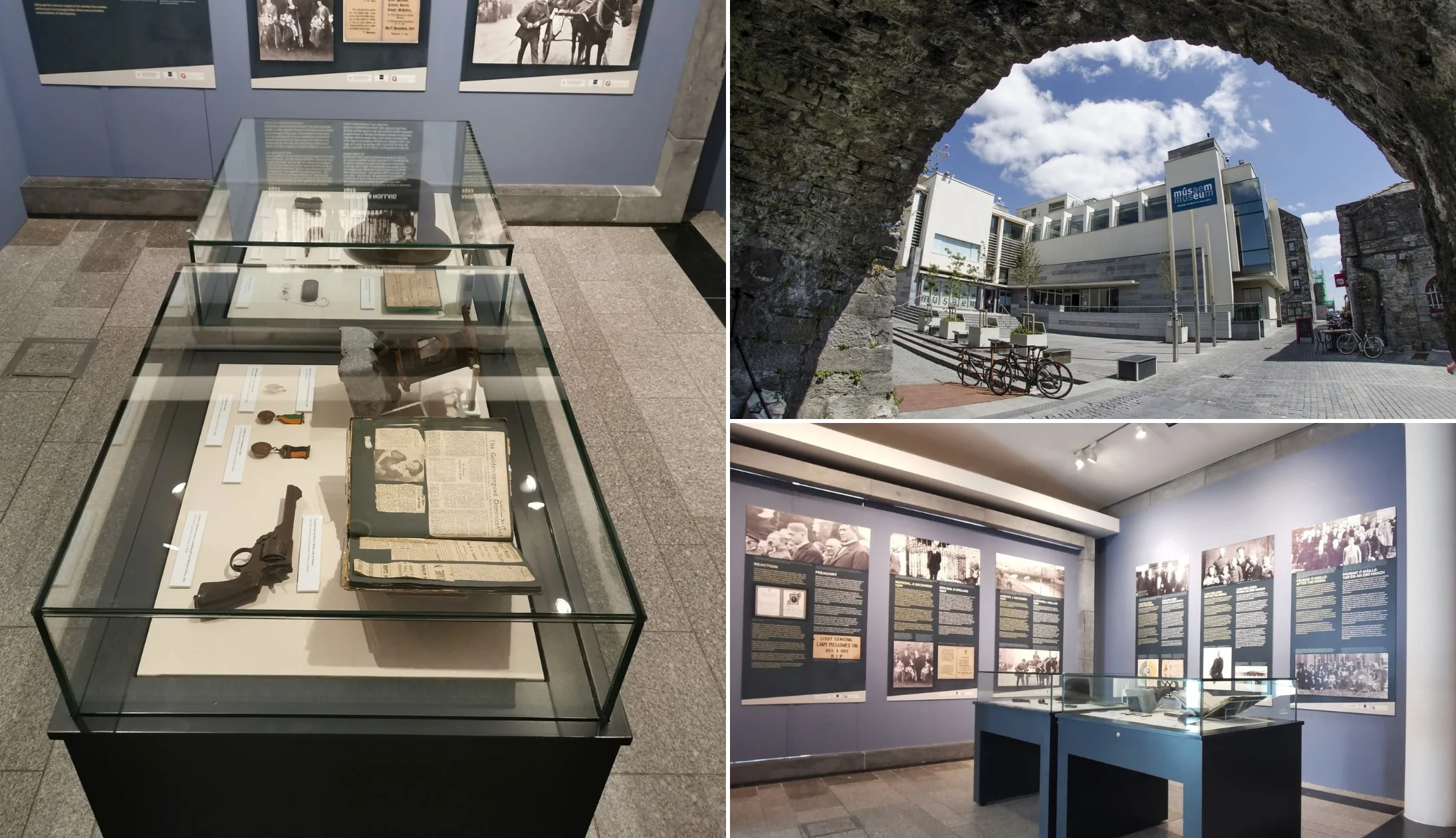
Photos via Galway City Museum on FB
The Galway City Museum is just a stone’s throw from the Spanish Arch. It’s one of the best places to learn about Galway’s history, culture, and archaeology, with collections telling the story of prehistoric Galway all the way through to 19th and 20th-century Galway!
The museum has three floors and seven long-term exhibitions, including The Wild Atlantic – Sea Science, and an exhibition on Pádraic Ó Conaire.
It’s free to visit, although donations are always appreciated.
Stop 7: Spanish Arch and the Long Walk
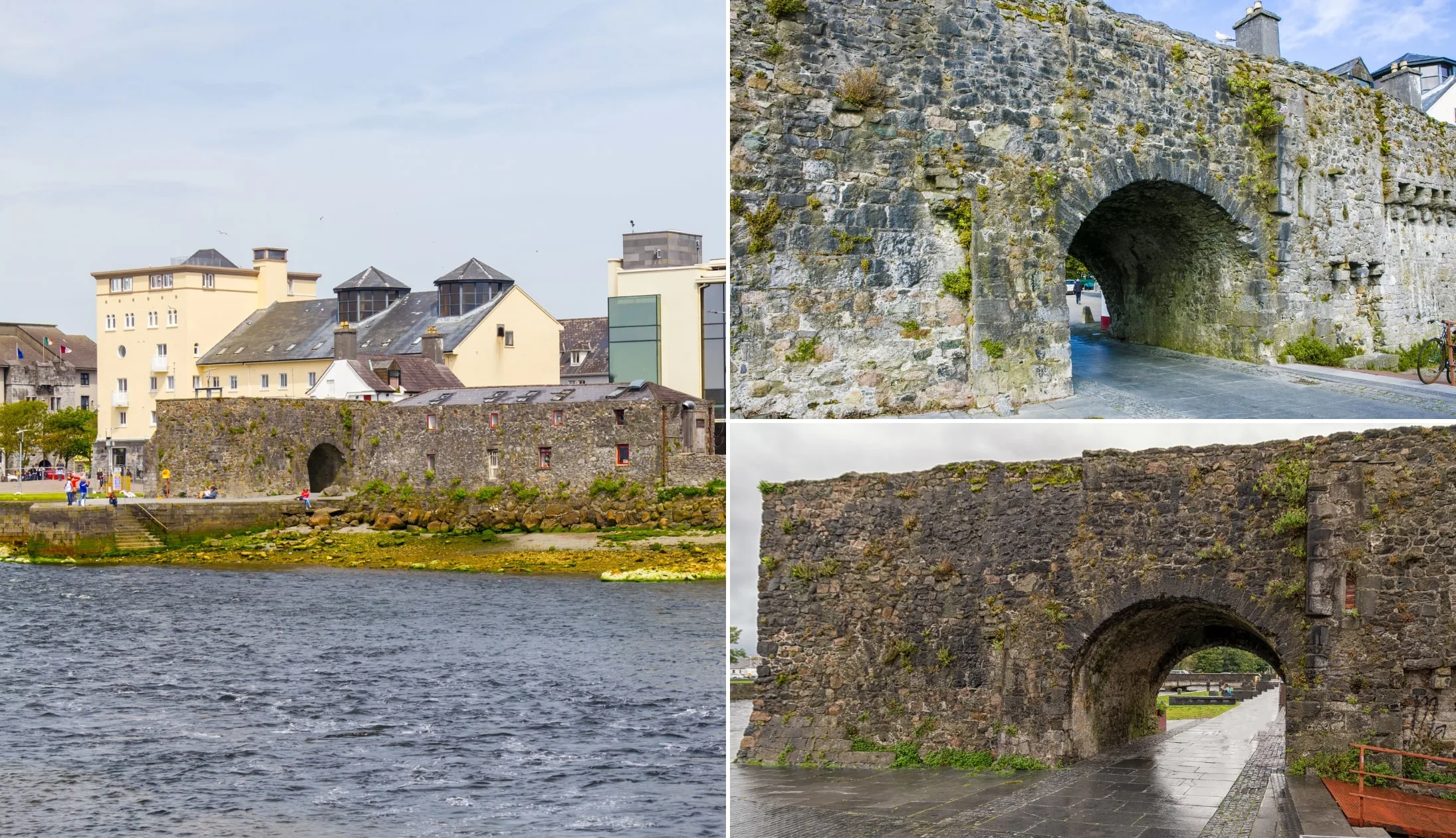
Photos via Shutterstock
The Spanish Arch is a must-see Galway attraction, dating back to Medieval times. The large stone arch is located on the outskirts of the city centre, overlooking the Claddagh (shore).
It originally housed soldiers who were keeping watch on the city’s Medieval walls. Its nickname is thought to come from the city’s merchant trade with the Spanish, whose ships would often be docked in the area!
From the Spanish Arch, you can take a short stroll alongside the water to what’s known as The Long Walk. You’ll likely have seen pictures of it (it’s a line of colourful buildings right on the water).
Stop 8: Dinner, drinks and live music
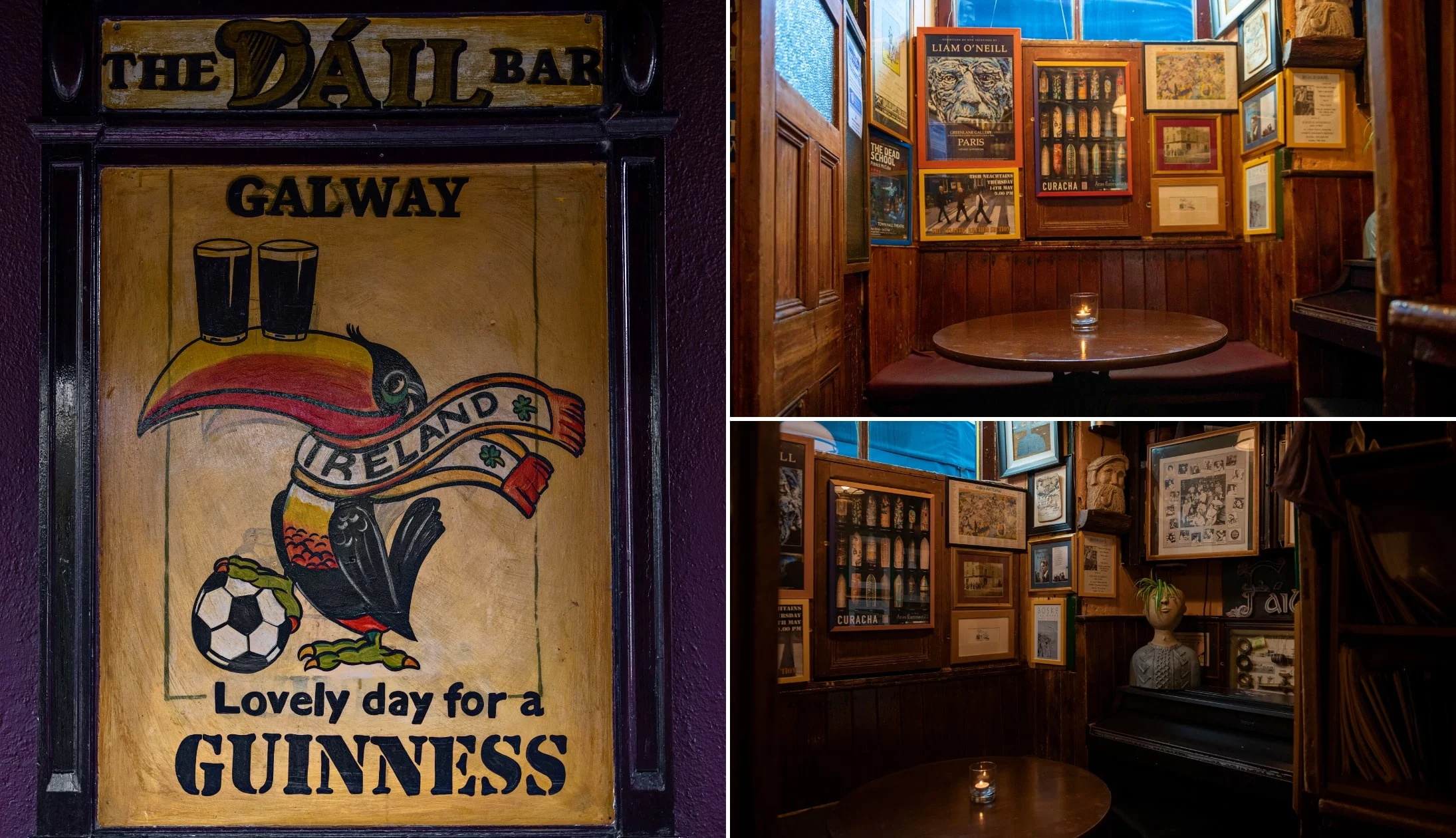
Photos courtesy Failte Ireland
You’ve had a busy aul day today, so it’s time to kick back and chill with food and, if you fancy, a drink and some live music.
Galway is a lively city regardless of the time of year. Here’s some spots worth checking out:
Our dinner recommendations
For dinner, we’ve got a few stellar recommendations: Ard Bia, The Quay Street Kitchen, and Dela. Ard Bia is absolutely fantastic, but you need to book in advance for dinner.
The restaurant has a quirky interior and serves beautifully presented modern dishes.
The Quay Street Kitchen has a great selection of vegan and vegetarian-friendly dishes, and Dela has modern Irish cuisine on the menu.
Live music and trad bars
There’s some mighty pubs in Galway. After dinner, head out for drinks at either Tigh Neachtain or The Crane. Both are traditional pubs with a great atmosphere.
Trad music is an integral part of the city, with heaps of options to choose from. Our favourite spots are Crane Bar (mentioned above) and Tigh Chóilí.
Day 10: Connemara and Cong
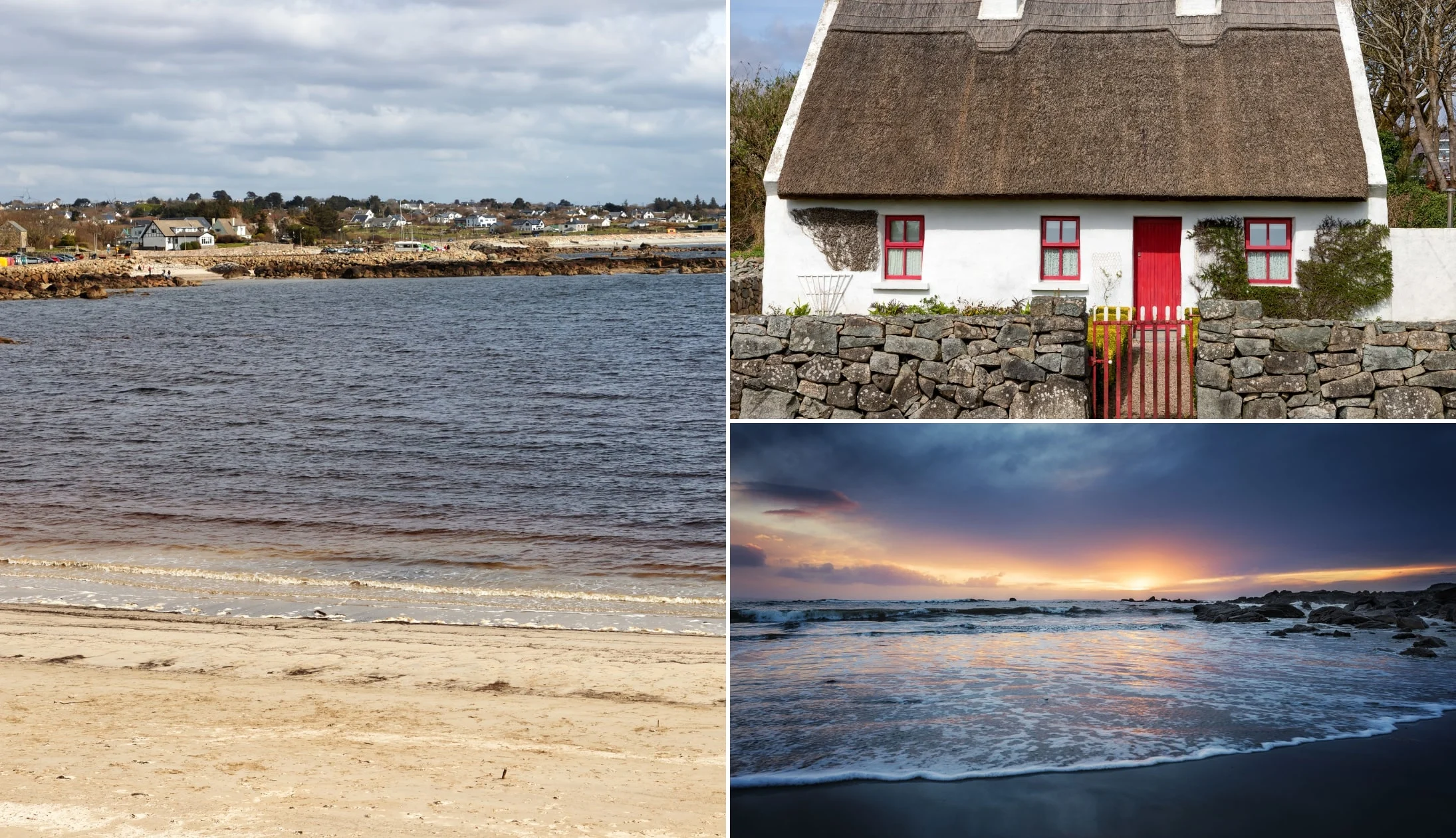
Photos via Shutterstock
Day 10 takes us out into one of the most spectacular parts of Ireland, the legendary Connemara.
This magnificent corner of the wild Atlantic coast is full of incredible attractions and beautiful scenery at every turn, and one of the best ways to see it is on a guided coach tour – here’s the one we recommend.
Start the day well with a hearty breakfast at your accommodation, or head to one of the many cafes near the start point of the tour.
Gaslight Brasserie does a range of cooked breakfasts and is just a minute away from the meeting point. Jungle Cafe is also a good call, with a bunch of healthy options to choose from, while Esquires Organic Coffee Co not only offers an amazing cup of coffee but also serves up a mean full Irish.
Stop 1: Kylemore Abbey
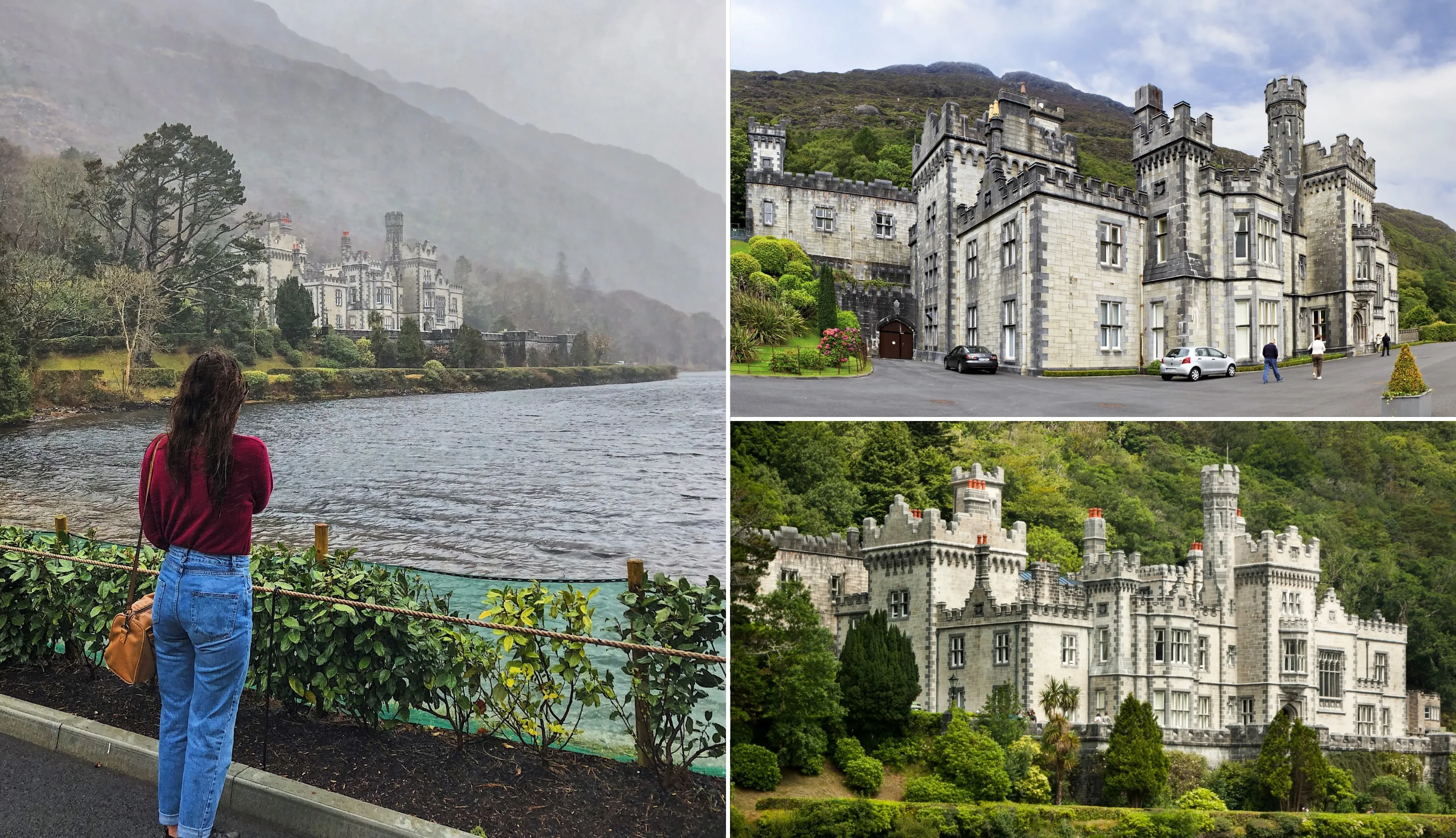
Photos via Shutterstock
Your first stop will be the epic Kylemore Abbey. Built in 1867, it’s perched on the edge of both Pollacapall Lough and the breathtaking Connemara National Park. As you wander the grounds, enjoy the gardens, church, and abbey, before checking out the tea room and gift shop.
The grounds cover a staggering 13,000 acres of land and include magnificent gardens, walks and woodlands. Meanwhile, inside the tour takes visitors on a journey through the many generations of people who have dwelled, worked, studied and prayed inside the castle’s magnificent walls.
Visitors will have stories brought to life in spectacular fashion via historical photographs, audio-visual presentations, artefacts, historical costumes and much more.
Stop 2: Killary Fjord and Leenane
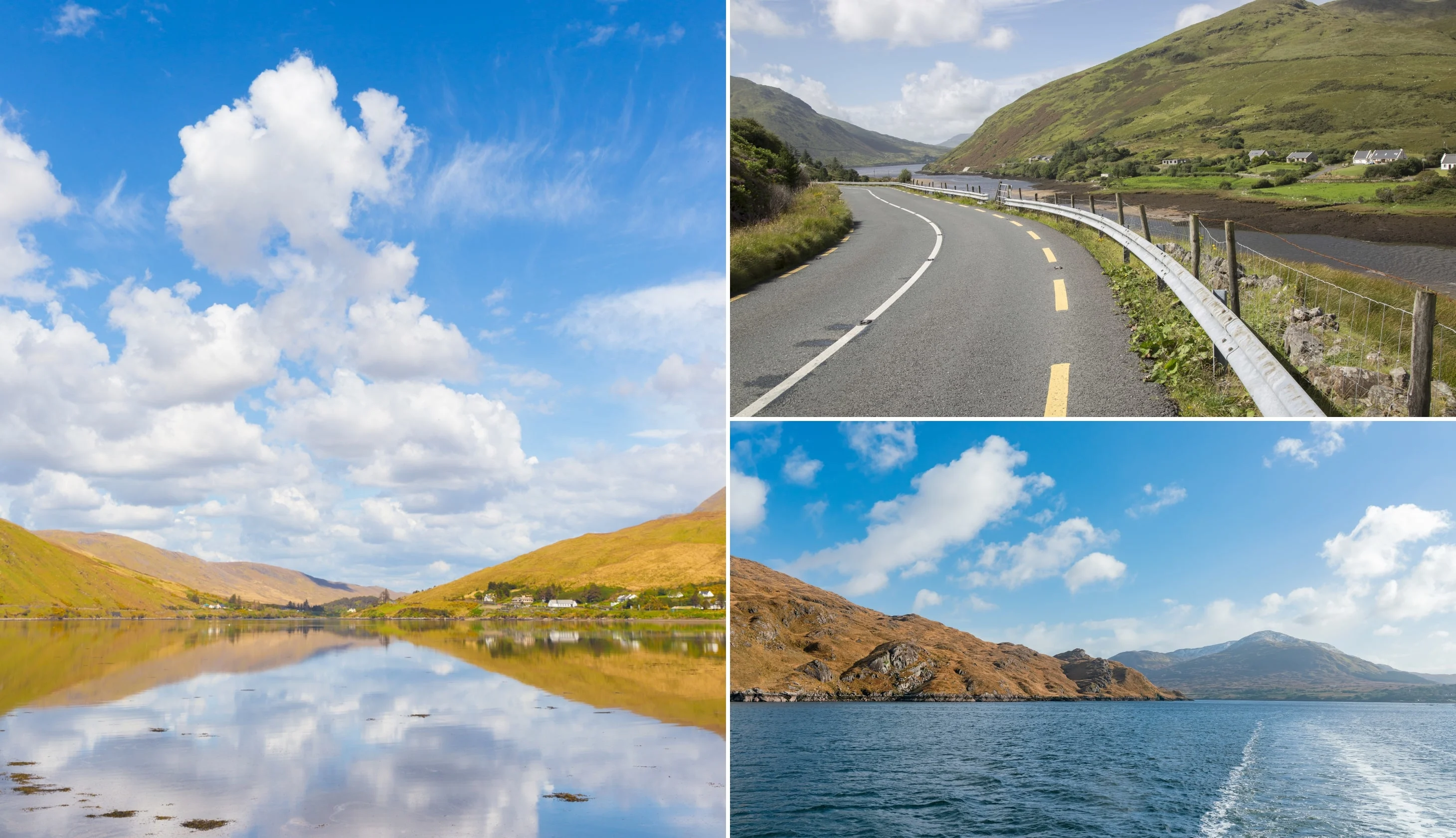
Photos via Shutterstock
After Kylemore Abbey, the coach will drive through some of the most magnificent landscapes of loughs, bogs, and rolling hills, before arriving on the shores of Killary Fjord. You’ll drive along the south coast of the mighty fjord, which is the only one in Ireland, and it’s another area of spectacular scenery. Keep your eyes open and admire the stark yet beautiful views along the way.
The gorgeous village of Leenane sits on the edge of Killary Fjord. The village offers a truly authentic experience of rural Ireland, and for most of the year, it’s pretty quiet, although it can get busy in summer.
Having said that, there are plenty of attractions. It’s perhaps most well-known for serving as the impressive backdrop to Jim Sheridan’s classic, ‘The Field’, starring Richard Harris, John Hurt, Sean Bean, Brenda Fricker, and Tom Berenger. Fans of the movie will recognise much of the village, especially Gaynor’s Bar, which starred as the local pub in the film.
The Sheep and Wool Centre is always worth checking out, and you can find hand-crafted woolly sweaters, scarves, and much more while learning about how they’re made.
Stop 3: Cong Abbey
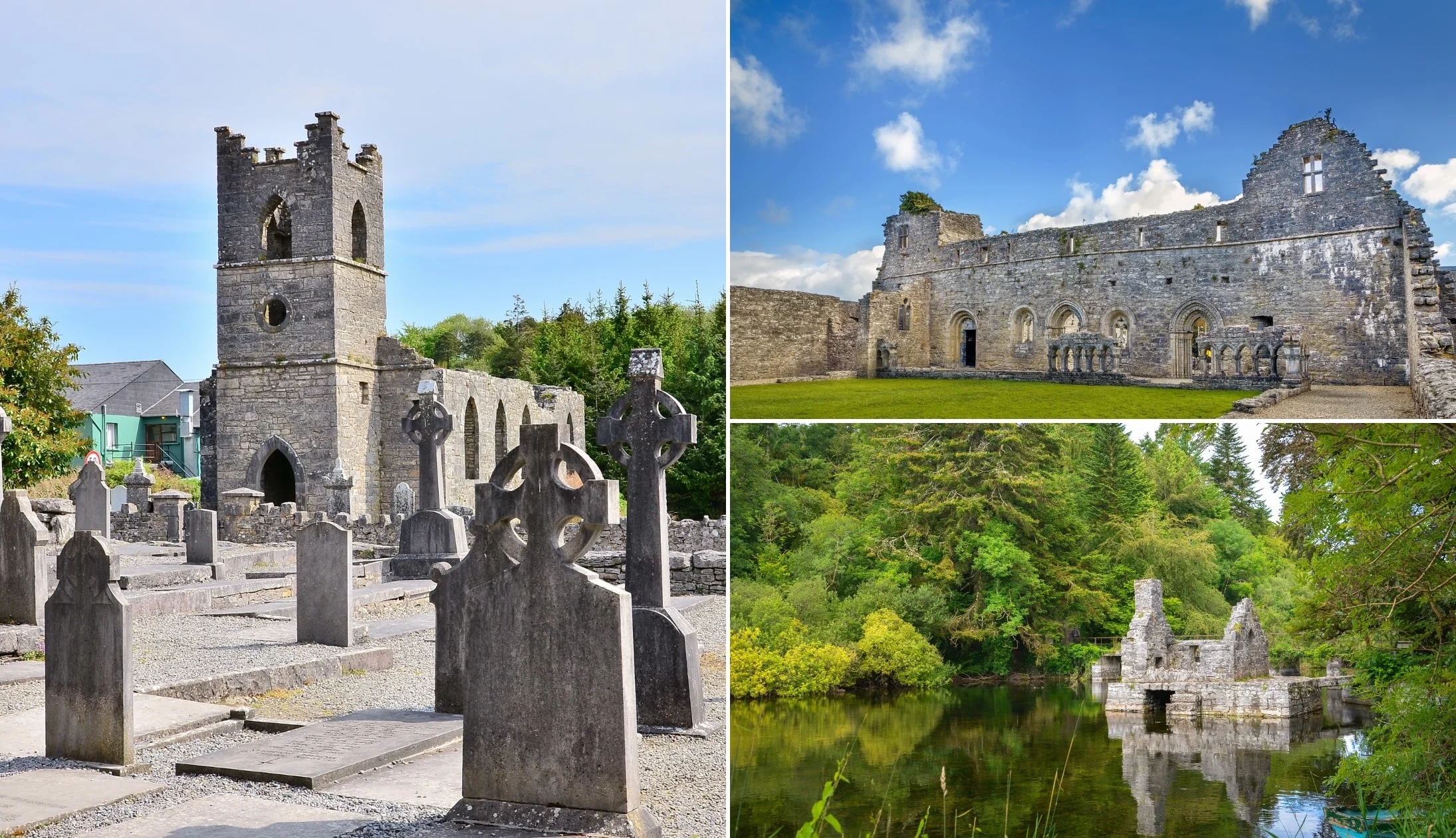
Photos via Shutterstock
After another fantastically scenic drive, you’ll arrive at the charming little village of Cong, which is like something whipped from a fairytale. Tucked between Lough Corrib and Lough Mask, it’s a wonderfully olde-worlde kind of place. Steeped in history, with close ties to the Quiet Man movie, and boasting a unique character and lots of things to see and do, it’s well worth exploring.
Cong Abbey dates back to the 12th century, and while it now lies in ruins, it remains a focal point in the village and a popular tourist attraction. The remains are located in the centre of the village, a stone’s throw from the river banks. Some of the mediaeval stone walls still stand proud, displaying intricate stonework and curious carvings.
Stop 4: An Spideal

Photos via Shutterstock
From Cong the coach will begin to head back towards Galway, but not without a stop in the charming coastal village of An Spideal. Here, you’ll take a gentle stroll among the traditional thatched roof cottages and admire the beautiful beaches of this wonderful, Gaelic-speaking village.
Stop 5: Back to Galway

Photos courtesy Failte Ireland
After a nice ride along the coast of Galway Bay, you’ll arrive back in the city in time for dinner, drinks, and more music.
Our dinner recommendations
For dinner, we’ve got a few stellar recommendations: Ard Bia, The Quay Street Kitchen, and Dela. Ard Bia is absolutely fantastic, but you need to book in advance for dinner.
The restaurant has a quirky interior and serves beautifully presented modern dishes.
The Quay Street Kitchen has a great selection of vegan and vegetarian-friendly dishes, and Dela has modern Irish cuisine on the menu.
Live music and trad bars
There’s some mighty pubs in Galway. After dinner, head out for drinks at either Tigh Neachtain or The Crane. Both are traditional pubs with a great atmosphere.
Trad music is an integral part of the city, with heaps of options to choose from. Our favourite spots are Crane Bar (mentioned above) and Tigh Chóilí.
Day 11: Inis Mor
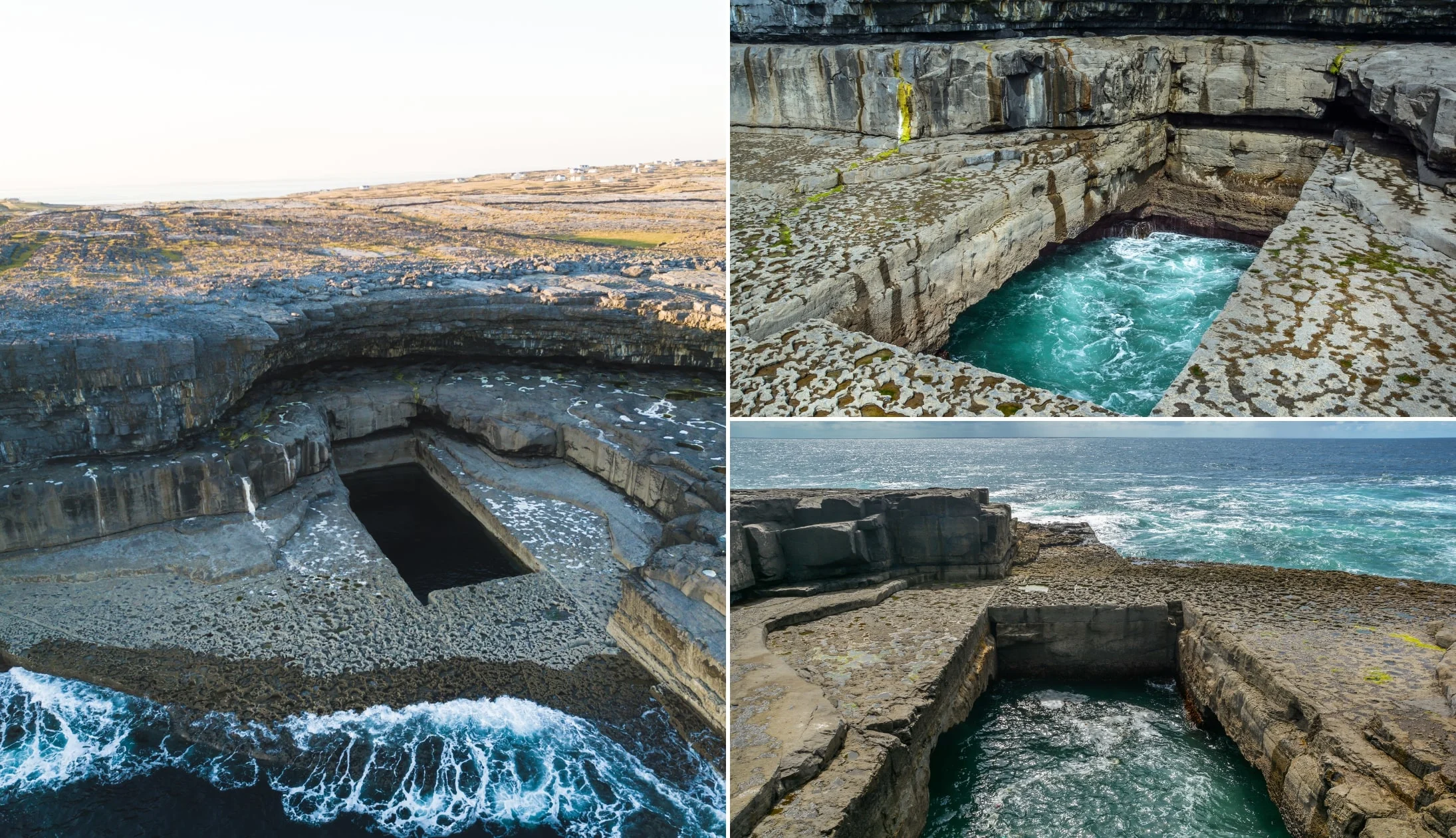
Photos via Shutterstock
Today we set sail for Inis Mor, one of the three epic Aran Islands. The tour we’ve chosen sets sail from Galway Dock and gives you about four and a half hours to explore the island and its various treasures.
Grab breakfast at your accommodation, or head to any of the cafes we suggested yesterday. From Eyre Square where these cafes are located, you’ll need to walk about 6 minutes to get to the meeting point at Galway Docks. The tour normally begins at 9:30 am, but it’s best to arrive half an hour early for check-in.
This is a spectacular 8.5-hour day tour that sails from Galway Docks to the largest of the Aran Isles, Inis Mor.
After dropping you off on the island, you’ll have the opportunity to learn about the history, heritage, and culture of the Aran Islands via an audio guide. You’ll have about 4.5 hours on Inis Mor, where you can enjoy sandy beaches, stone forts, and the serenity of island life.
Stop 1: Get to the boat to Inis Mor
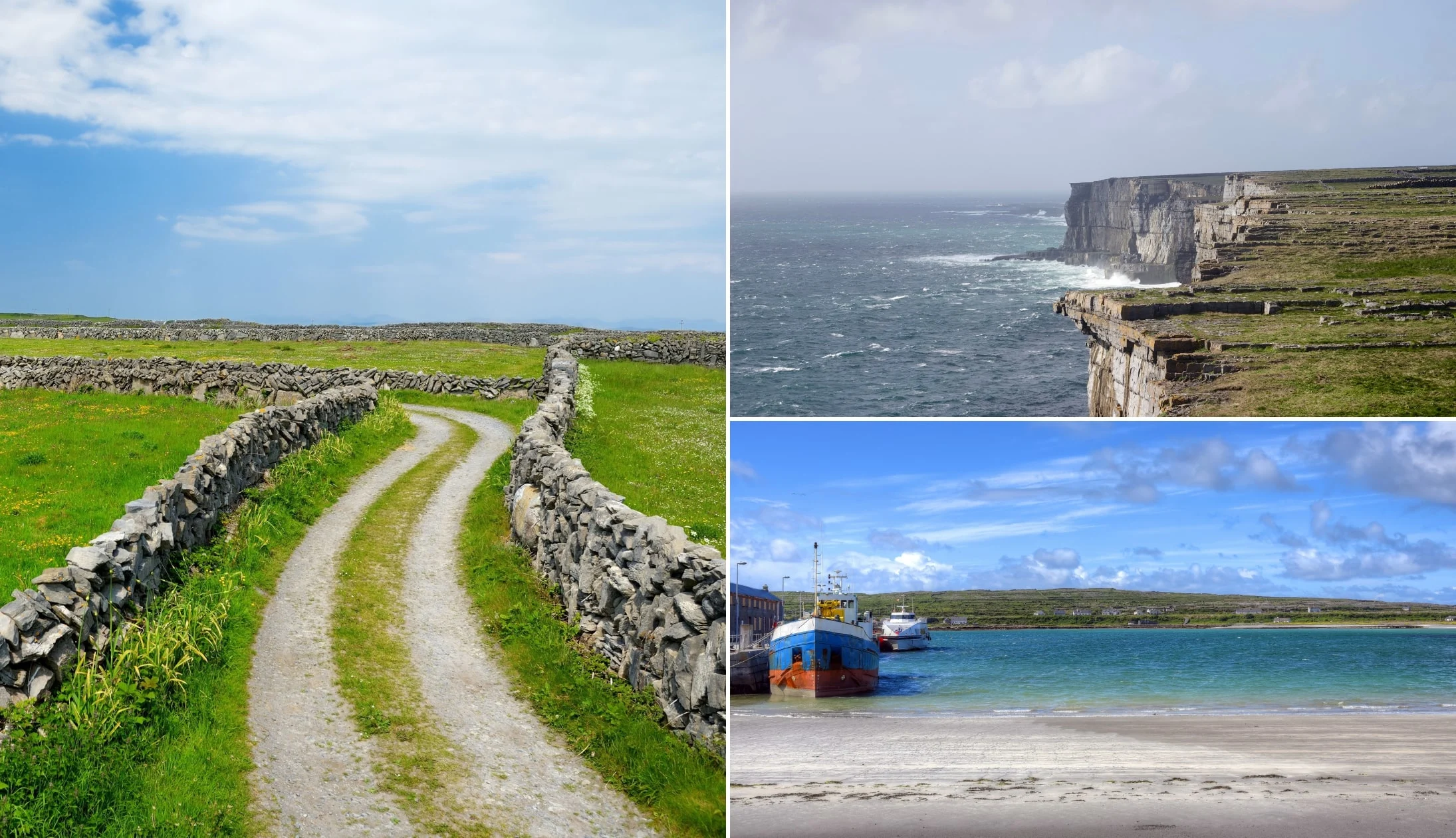
Photos via Shutterstock
A land of ancient stone forts, breathtaking rugged landscapes, and strong Irish culture, a visit to Inis Mór island is arguably one of the best things to do in Galway. With a population of around 900 people, Inis Mór is by far the largest of the 3 Aran Islands.
You don’t have to be a history buff to get excited about the island’s ancient roots, which date back more than 3,000 years. The island is full of prehistoric sites and structures, including some of the oldest in Europe.
As you’ll see below, there are heaps of things to see and do on the island, from seal watching to sinking a few pints in the local pubs.
Stop 2: Decide how you’ll get around the island
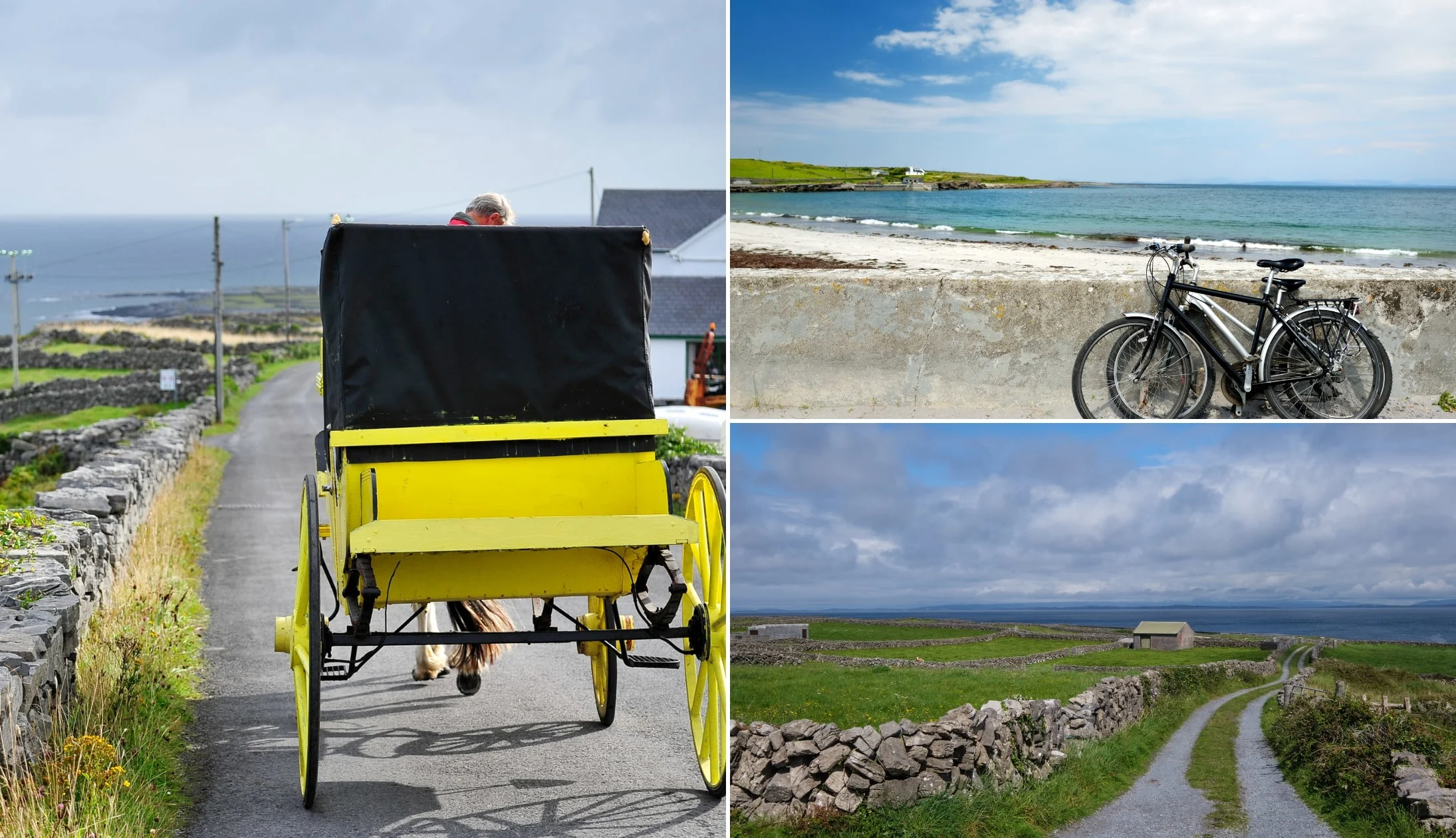
Photos via Shutterstock
With just four and a half hours on the island, you’ll want to make the most of your visit. Hiring a bike and cycling around is one of the best ways to explore Inis Mór.
The Inis Mór Cycle Loop takes in all the top sites and makes getting around on 2 wheels a piece of cake. You can rent a bike right on the island and you’ll be given handy info on the best route to take. Mountain bikes cost €15 per day while electric bikes cost €40.
Alternatively, a handful of minibus tours depart from the dock, with many timed to coincide with the tour boats. They typically cost about €20 and the tour takes in all the main attractions.
Finally, if you fancy stretching your legs, you can ramble around the island and enjoy some nice, long walks through the countryside.
However, if you want to take in all of the sights below, you’d be cutting it pretty fine on foot, and won’t have much time to spend at each place. It might even be worth taking a packed lunch.
Stop 3: Seal Colony
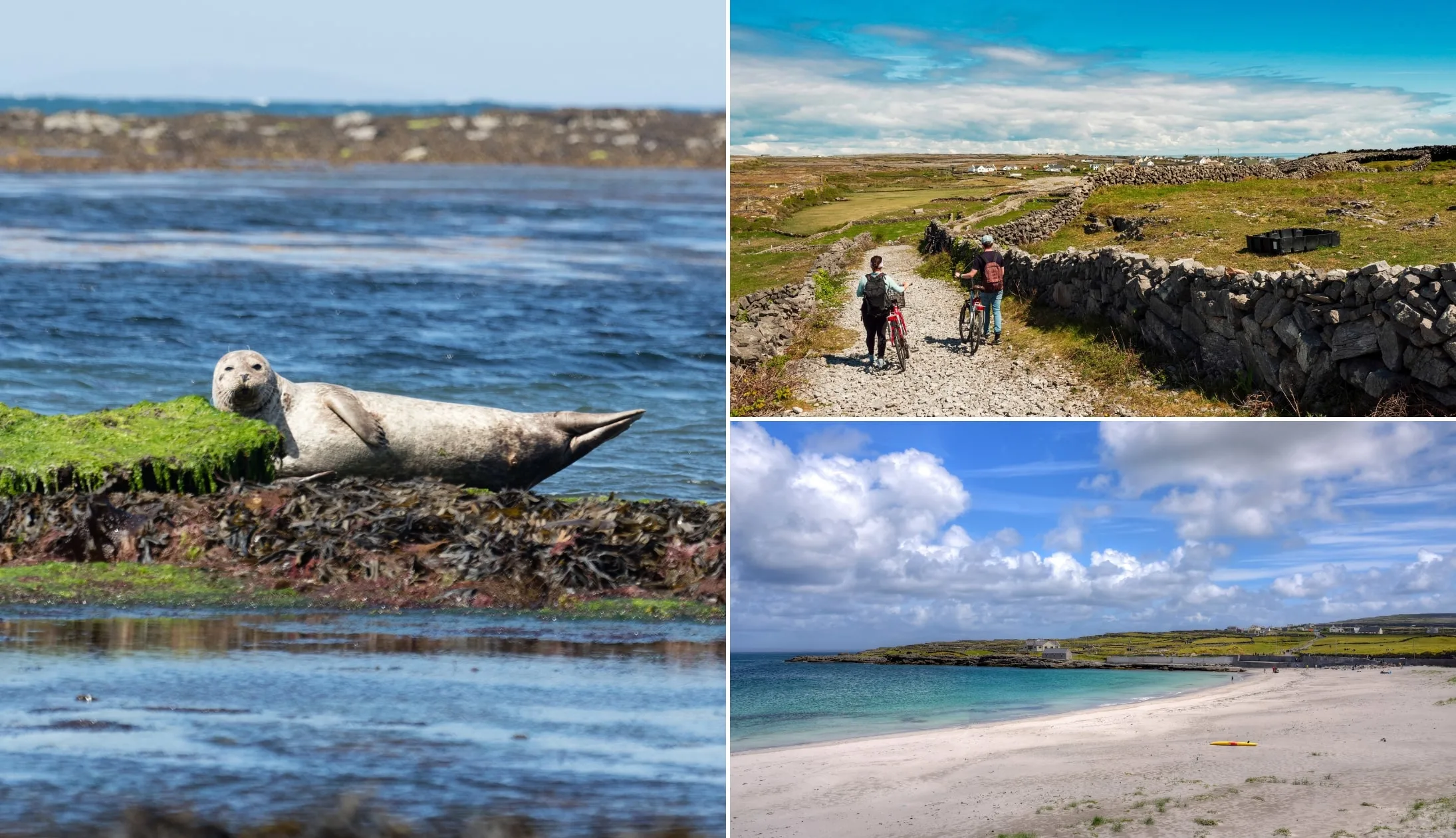
Photos via Shutterstock
If you’re in search of unique things to do on Inis Mór, this should tickle your fancy! Several seals call the shores of Inis Mór home, and they’re a beautiful sight to behold. The official viewpoint near the beach of Portmurvy is a top attraction and a great spot for a picnic. Of course, it’s also one of the best places to see these majestic creatures sunning themselves on the rocks. It’ll take about an hour to walk there from the Ferry Station in Kilroan, or 15-minutes by bike.
Stop 4: Dún Aonghasa
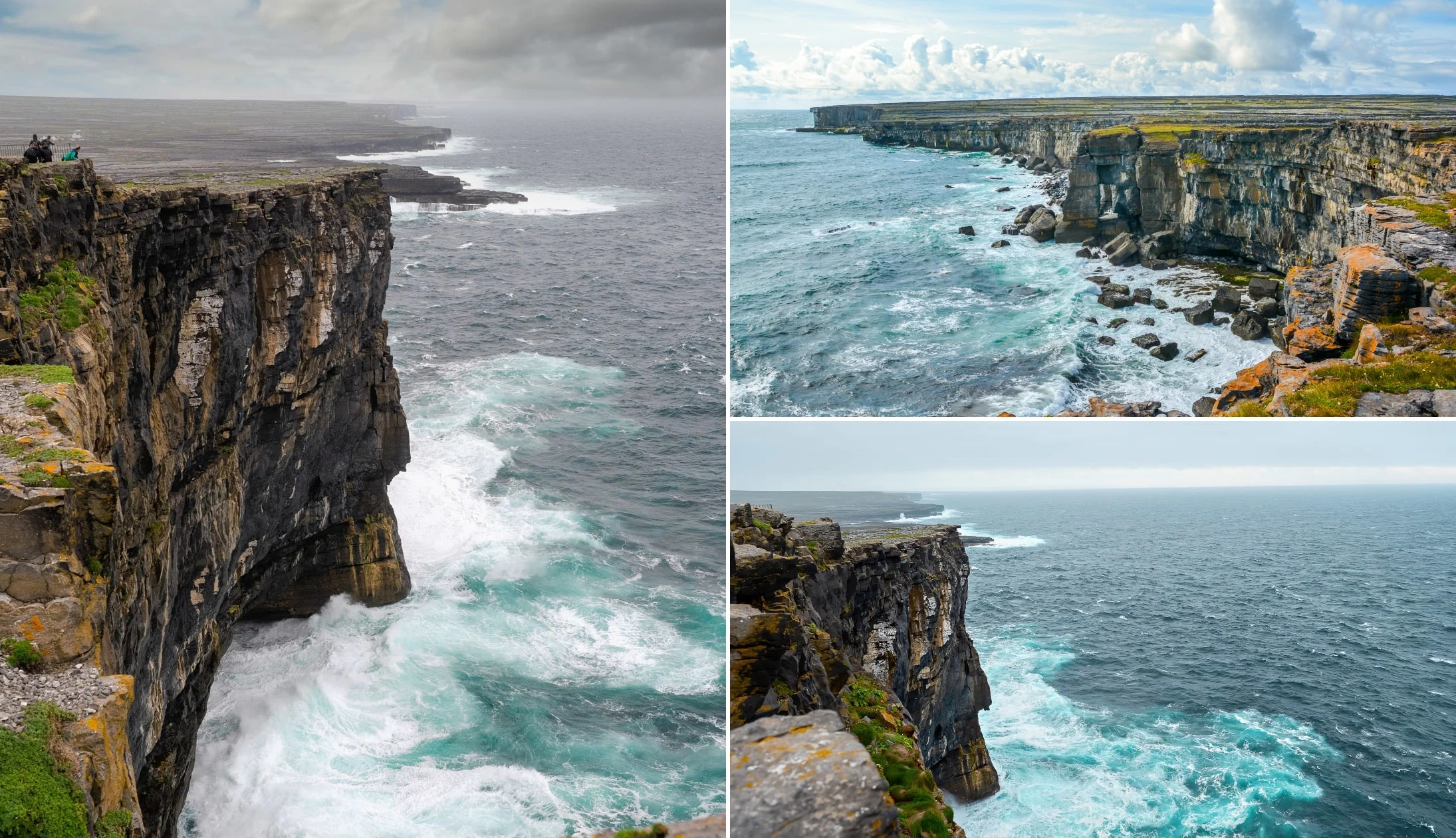
Photos via Shutterstock
Perched atop a 100-metre-high cliff, the ancient fort known as Dún Aonghasa is believed to be more than 3,000 years old. It’s the largest prehistoric stone fort on the island, and according to many, the most magnificent in Europe. You’ll be amazed at the stunning location and the immense structure alike.
You’ll find the Dún Aonghasa Visitor Center on the edge of Kilmurvey Craft Village where it boasts a wealth of information about the fort, the Cliffs, and the island. There are a number of fascinating displays at the centre, providing a detailed glimpse at the history of the fort. Admission is €5 for adults, €4 for seniors, and €3 for students and kids.
It’s an almost 2-hour walk from the ferry station or an hour from the seal colony. By bike, it’s a 30-minute ride from the ferry or 15 minutes from the seal colony viewpoint.
Stop 5: The Wormhole

Photos via Shutterstock
If you’ve seen photos of Poll na bPéist, aka the Wormhole, or the Serpent’s Lair, as it’s sometimes referred to, you’d be forgiven for thinking it was man-made. But, this perfectly rectangular hole in the limestone is all-natural. It fills with sea water via underwater tunnels that lead out to the ocean.
While it has hosted the Red Bull Diving Series, we don’t recommend jumping in yourself. The sea can be rough and the tide comes in fast. Without lifeguards, it’d be a big risk to try swimming in the Wormhole.
The Wormhole is near both Dún Aonghasa and Kilmurvey Beach, and it’s easy enough to walk or cycle to.
Stop 6: Black Fort
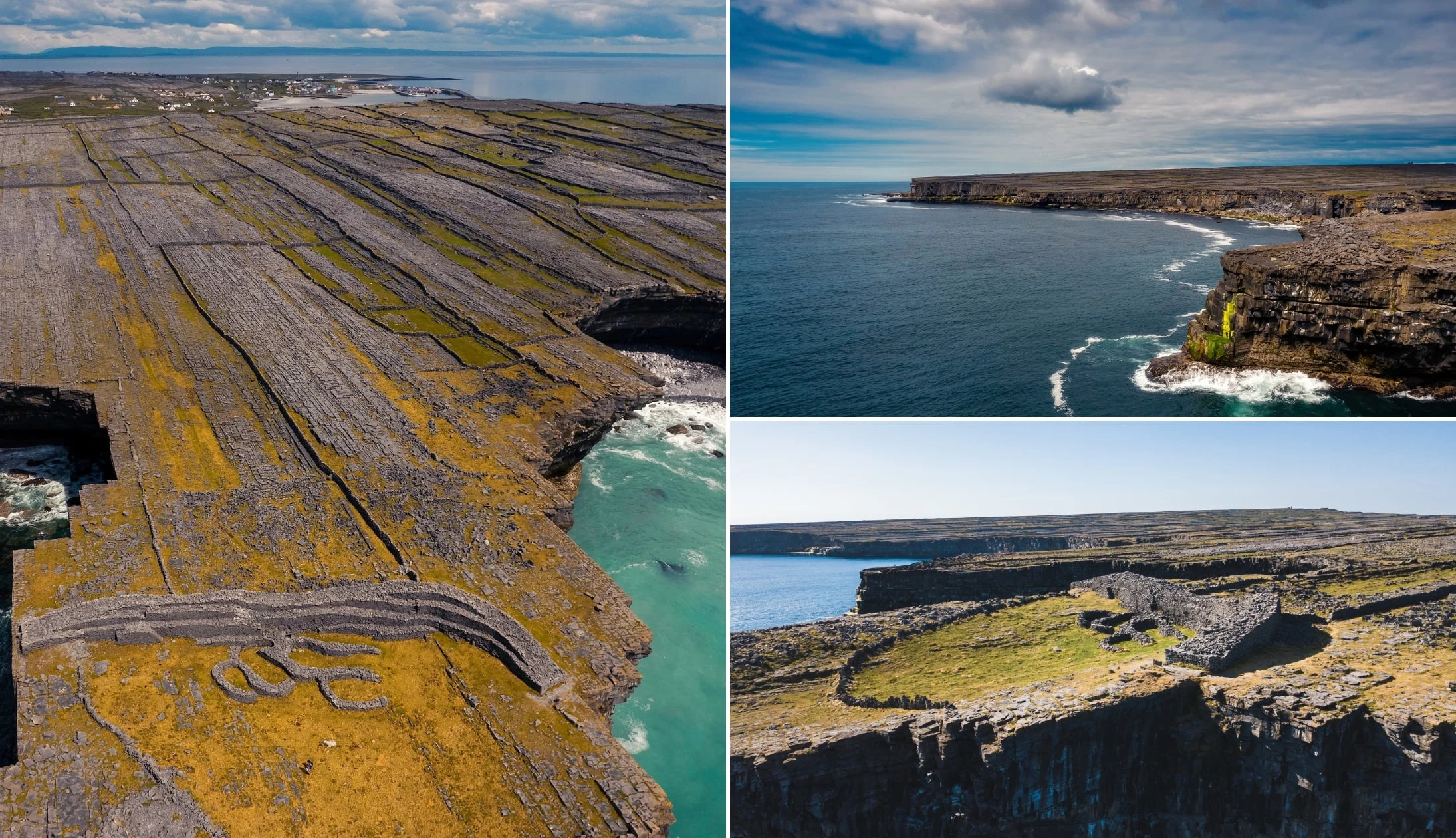
Photos via Shutterstock
Dún Dúchathair, or the Black Fort, is another impressive stone fort on Inis Mór. Its exact age is currently unknown, and while it’s not as big as Dún Aonghasa, it’s equally awe-inspiring. Tranquil in its solitude, it balances precariously on the edge of a rugged cliff, where some say Ireland truly ends. You’ll be treated to stunning ocean views from here.
From the Wormhole, it’ll take about an hour and a half to walk to the Black Fort or about 35 minutes from the ferry station. By bike, it’s a 30-minute cycle from the Wormhole and about 10-minutes from the ferry.
Stop 7: Lunch
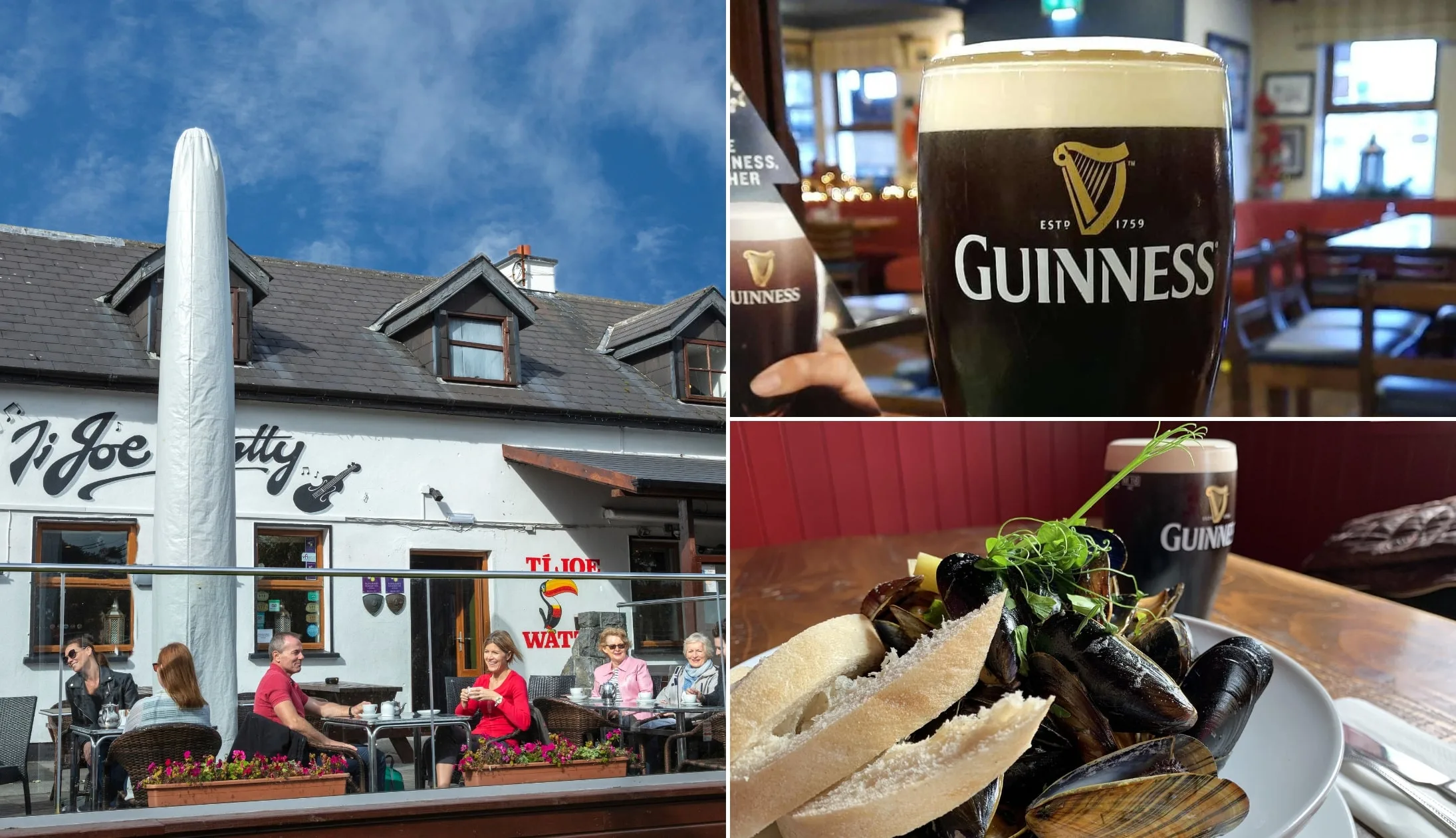
Photo left: Gareth McCormack via Failte Ireland. Others: Via Joe Watty’s
You have a few choices for lunch on Inis Mor, though they’re mostly located back in Kilroan, near the ferry port. The Bar is a top pub where a warm Irish welcome awaits the weary traveller! Dating back to around 1920, it’s one of the oldest pubs on the Aran Islands, although the building goes back much further.
Alternatively, Joe Wattys is widely considered one of the best pubs in the west. With fresh seafood, an incredible variety of whiskey, and sumptuous craft beers, it boasts an array of accolades, such as one of the ‘top 21 cosiest pubs in Ireland for a pint by the fire’.
Offering a more modern take on the local cuisine, the Bayview Restaurant is a great place to tantalise your taste buds. Guatemalan head chef Byron breathes new life into the dishes he prepares and focuses on amazing flavours and presentation alike.
Stop 8: Cliffs of Moher from below
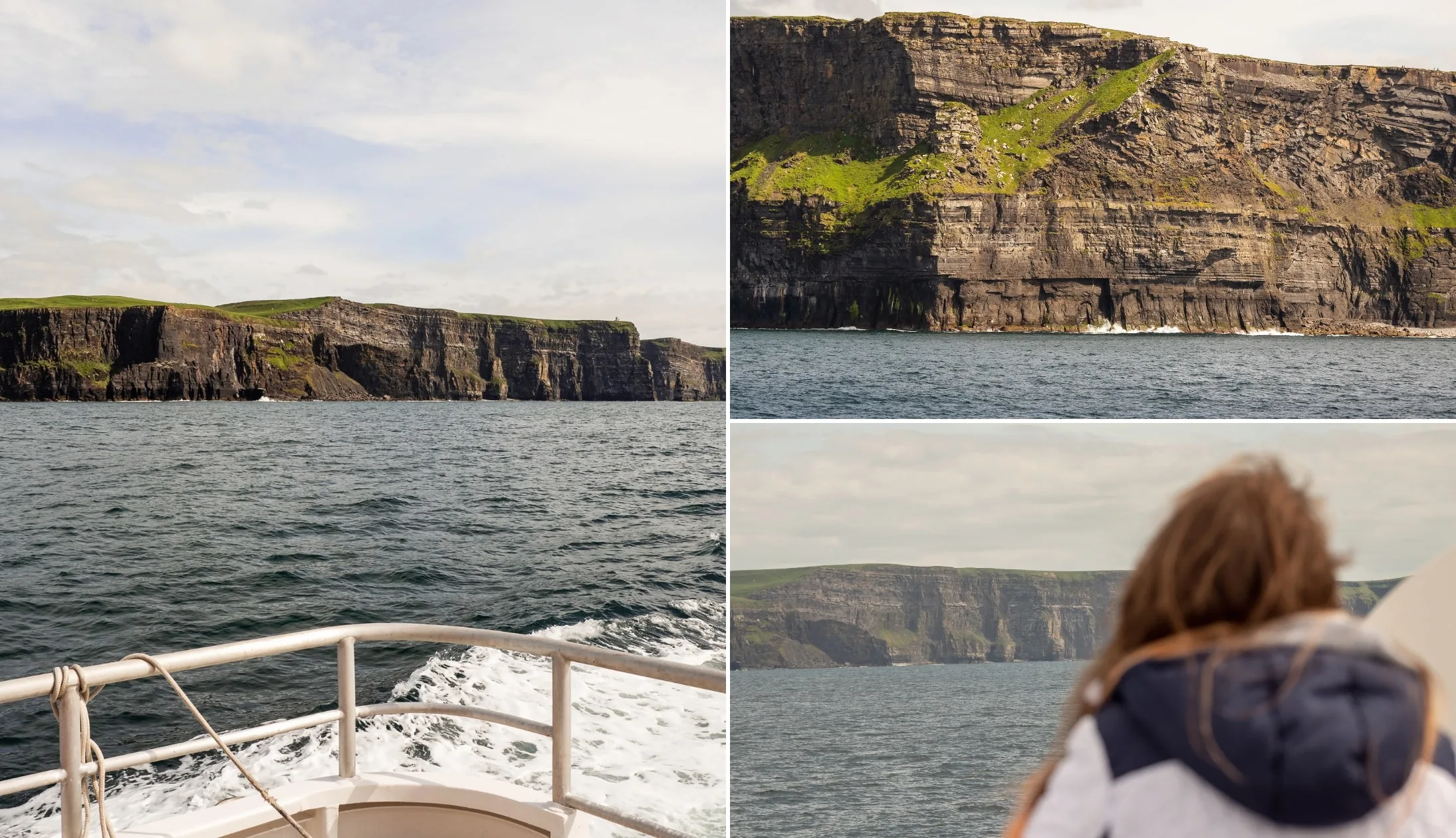
Photos via Shutterstock
As you jump back on the boat, you’ll take a slight detour before heading back to Galway to sail below the Cliffs of Moher.
Passing beneath the incredible Cliffs of Moher is the best way to see these iconic rock formations, which are home to seals and a huge bird colony.
Harry Potter fans may recognise the iconic cliffs and caves from this angle, which appeared in several scenes from the Half-Blood Prince movie.
Stop 9: Back to Galway

Photos courtesy Failte Ireland
Once you drop anchor back in Galway, you’ll be back in time for dinner and drinks, the ideal opportunity to discover more amazing pubs and restaurants.
Our dinner recommendations
For dinner, we’ve got a few stellar recommendations: Ard Bia, The Quay Street Kitchen, and Dela. Ard Bia is absolutely fantastic, but you need to book in advance for dinner.
The restaurant has a quirky interior and serves beautifully presented modern dishes.
The Quay Street Kitchen has a great selection of vegan and vegetarian-friendly dishes, and Dela has modern Irish cuisine on the menu.
Live music and trad bars
There’s some mighty pubs in Galway. After dinner, head out for drinks at either Tigh Neachtain or The Crane. Both are traditional pubs with a great atmosphere.
Trad music is an integral part of the city, with heaps of options to choose from. Our favourite spots are Crane Bar (mentioned above) and Tigh Chóilí.
Day 12: The Clare coast
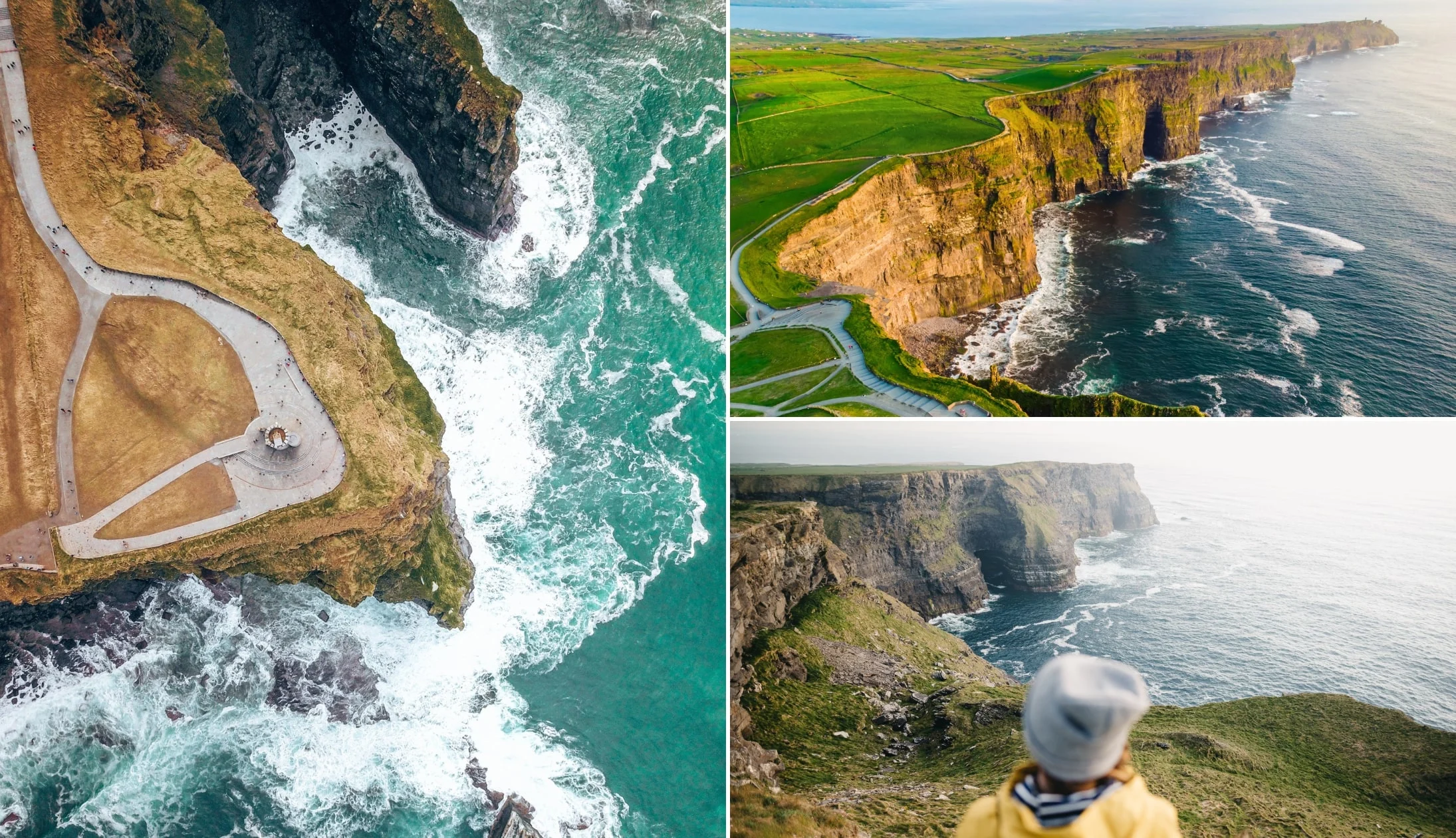
Photos via Shutterstock
Today’s tour takes us out of County Galway, around Galway Bay, and into the gorgeous County Clare, an area famed for its stunning natural beauty.
The road itself is an attraction, so be sure to keep your eyes peeled for a clatter of gorgeous hills, rivers, lakes, and mountains, not to mention the beautiful and ever-present Galway bay.
Today’s tour meets at 9:30 am outside of Kinlay Hostel on Eyre Square. Grab some breakfast at your accommodation or head to Pascal Coffee House or Gaslight Brasserie for a tasty bite before the tour departs.
This 8-hour coach tour leaves Galway at 9:30 am, though it’s best to arrive 15 minutes early for check-in. Normally, you’ll arrive back in Galway between 17:30 and 18:00, after a superb day of sightseeing.
Let’s take a look at some of the main stops along the way, but as always, bear in mind your specific tour may differ.
Stop 1: Dunguaire Castle
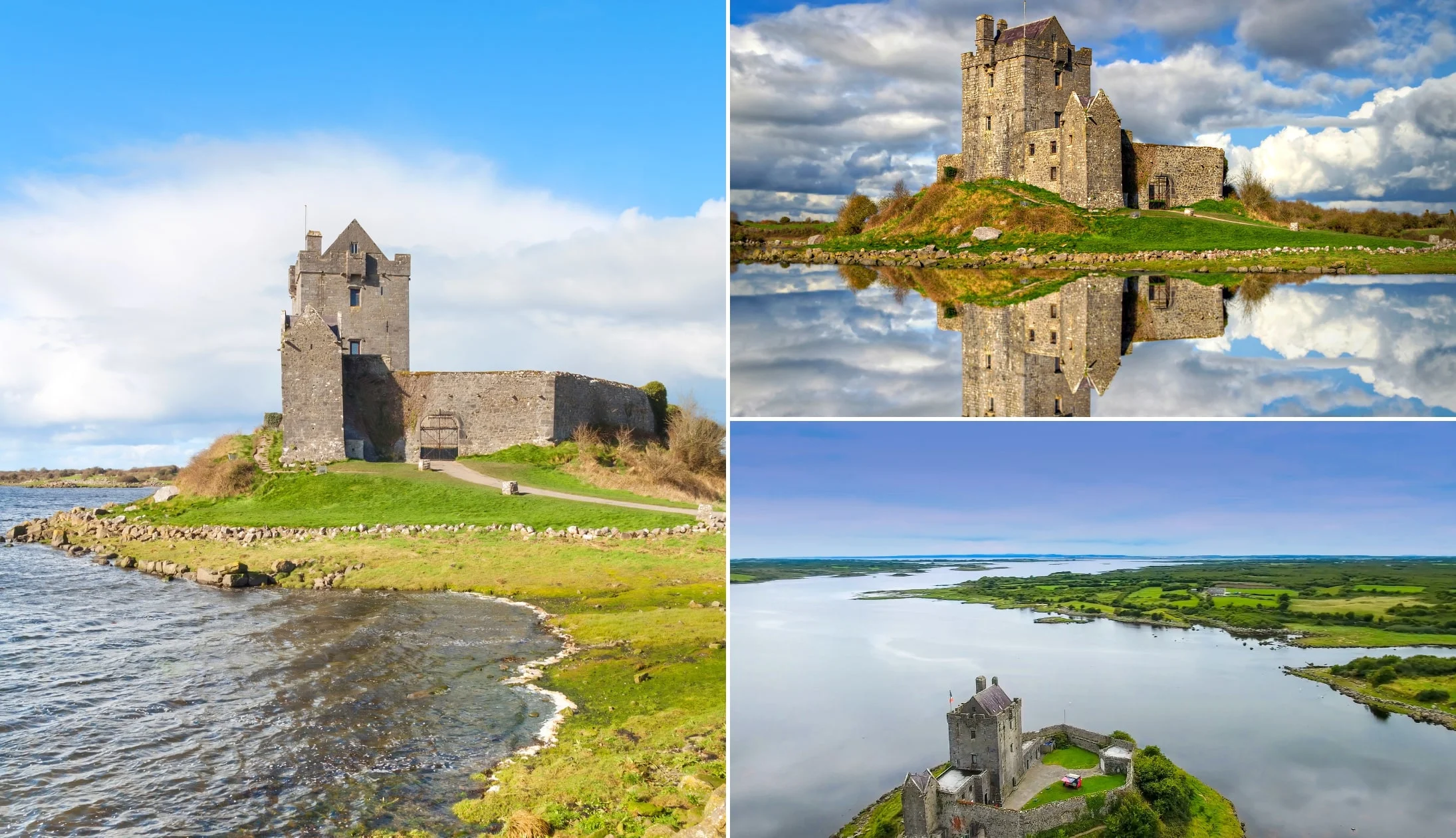
Photos via Shutterstock
The stunning Dunguaire Castle sits on a spit of land jutting out into Galway Bay and has a long history stretching back to mediaeval times. Built in 1520 by the prominent O’Hynes Clan family as a simple tower house with fortified walls, it’s stunningly beautiful from the outside.
To truly experience the beauty of this fortress, head off on a self-guided tour of Dunguaire Castle. The grounds are lovely and the interior is fitted with period furniture and plaques that’ll take you through the castle’s past.
Stop 2: Corcomroe Abbey
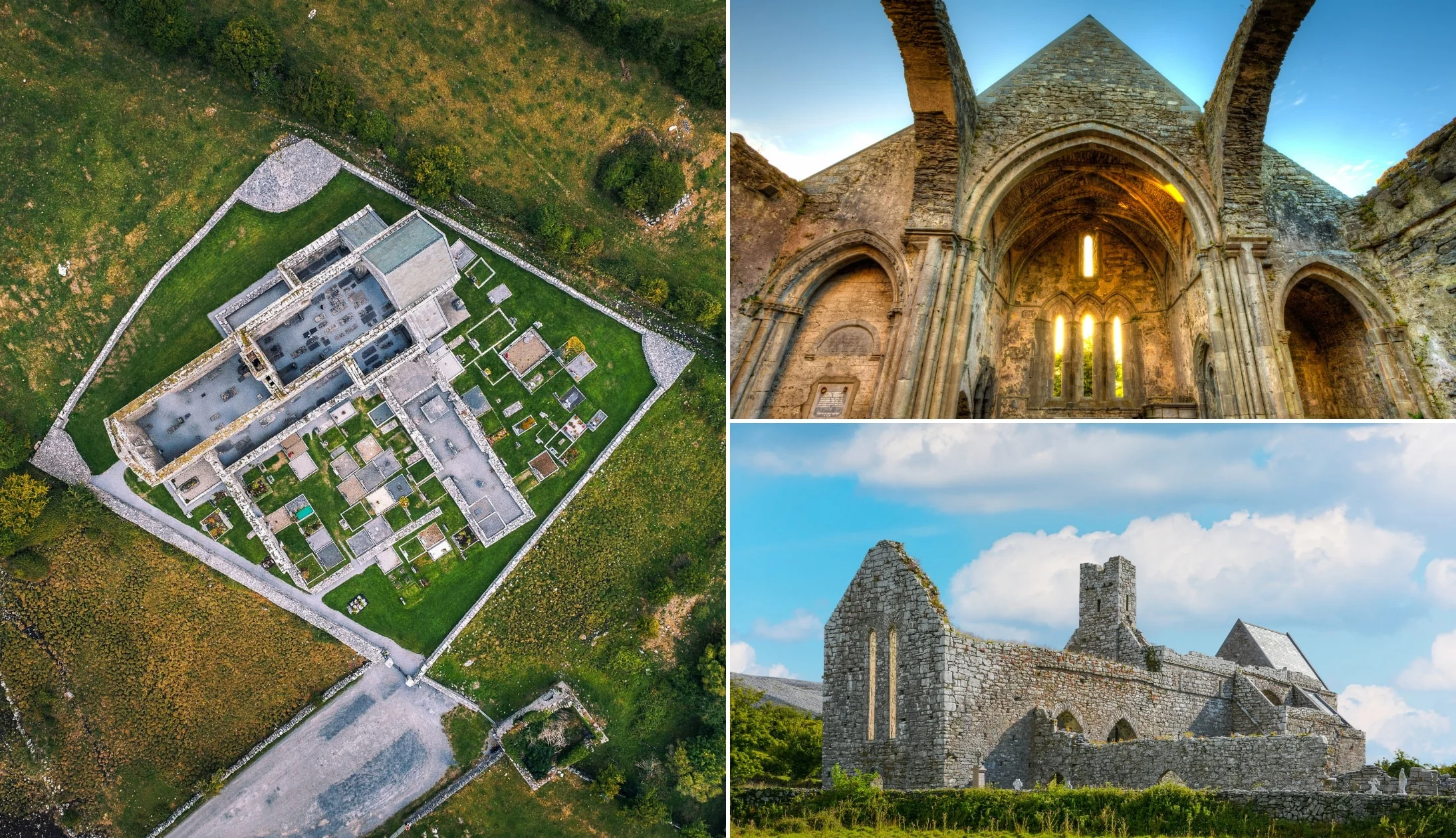
Photos via Shutterstock
Next, you’ll drop by the incredible Corcomroe Abbey, a stately 13th-century Cistercian monastery surrounded by beautiful countryside. While it now sits in ruins, the walls and towers have been incredibly well-preserved, and it’s a truly humbling experience to wander among the ancient stones.
Stop 3: The Burren
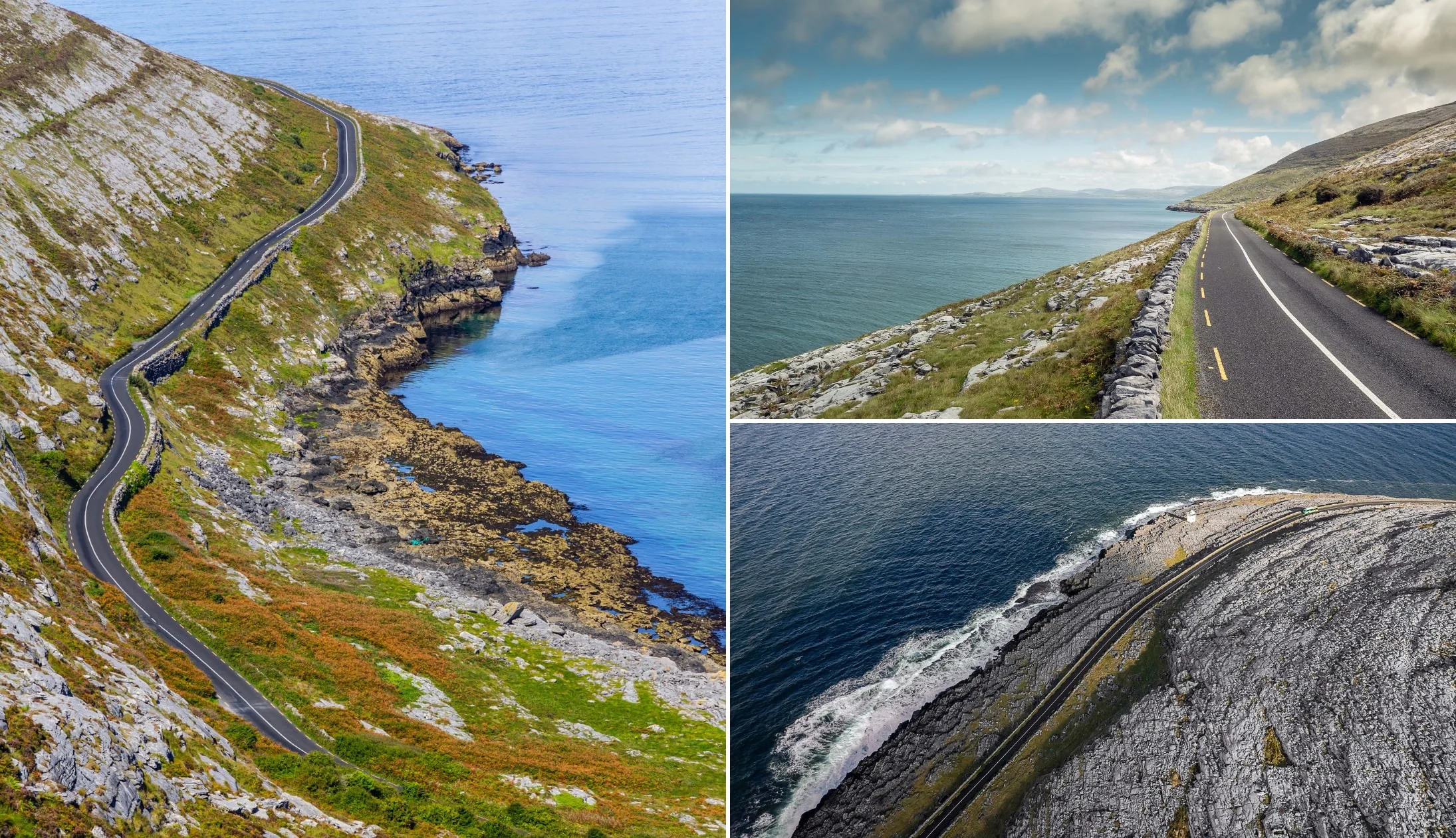
Photos via Shutterstock
The Burren is a vast area of more than 250 sq km that stretches out as far as the Aran Islands. Famed for its craggy landscape made up of huge slabs of limestone known as Karst, it’s a wonder to behold. The Burren actually translates to ‘a rocky place’, and the limestone pavements are a testament to this.
While the area is famed for its rocks, there’s an abundance of vegetation that manages to survive in the area, including wildflowers, herbs, grasses, and more. In fact, cattle and livestock have managed to survive and indeed thrive on the nutritious grasses grown in the Burren for centuries.
You’ll spend a good part of your tour driving through this epic landscape, so have your camera ready to catch the action!
Stop 4: Doolin Pier
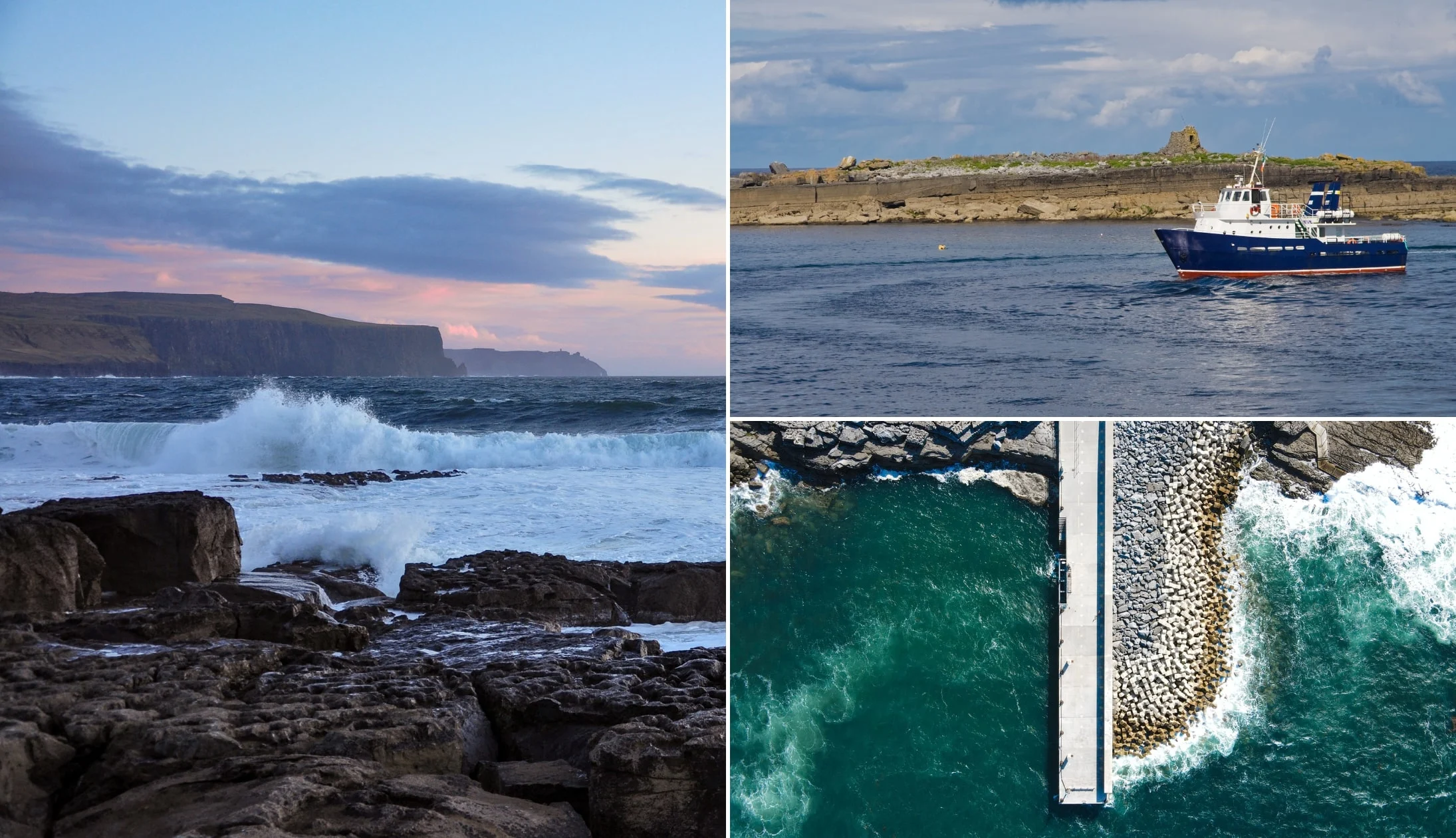
Photos via Shutterstock
Doolin is a vibrant little village. The pier is best known for being the departure point for ferries heading to the Aran Isles and the Cliffs of Moher. Enjoy a ramble around the village, taking in the various craft shops, and photos at the pier, before heading for lunch at the Hotel Doolin.
Stop 5: Lunch at Hotel Doolin
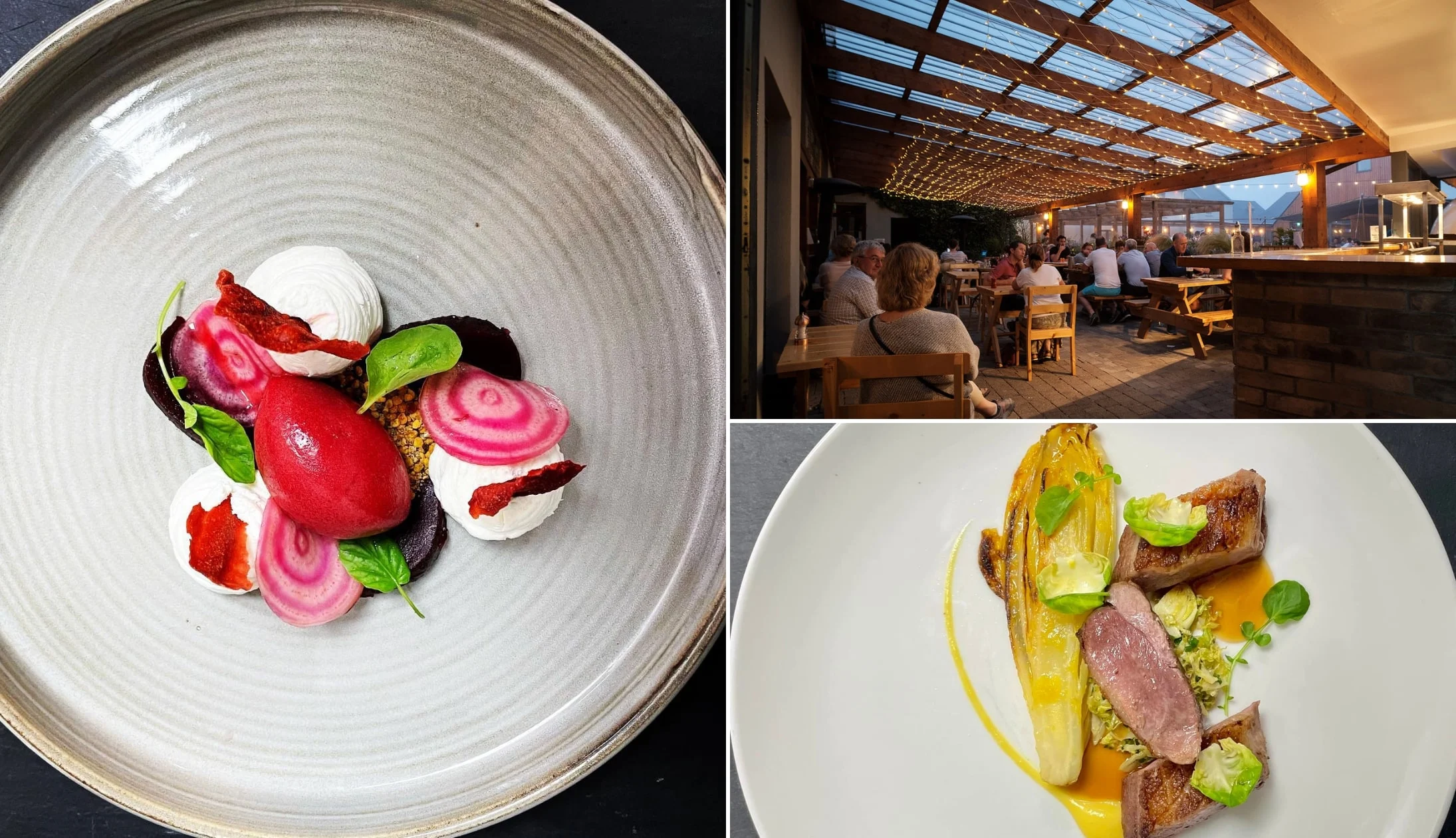
Photos via Hotel Doolin on FB
You’ll get an hour and a half to enjoy a sumptuous lunch at Hotel Doolin’s Fitzpatrick’s Bar. This is a lovely traditional pub with a crackling fire and an extensive menu, packed full of Irish classics and modern dishes alike. There’s plenty of fish, shellfish, lamb, beef, and chicken on the menu, but also lots of veggie and vegan options. Don’t miss the seafood chowder and soda bread!
Stop 6: The Cliffs of Moher

Photos via Shutterstock
The highlight of the tour is a guided walk atop the mighty Cliffs of Moher. Standing 214 metres above the sea, you’ll get amazing views over Galway Bay as the waves smash the rocks below you. You’ll enjoy a couple of hours here, with plenty of opportunities to walk along the cliff tops and the surrounding countryside, enjoying some of the best views in Ireland.
Stop 7: Lisdoonvarna
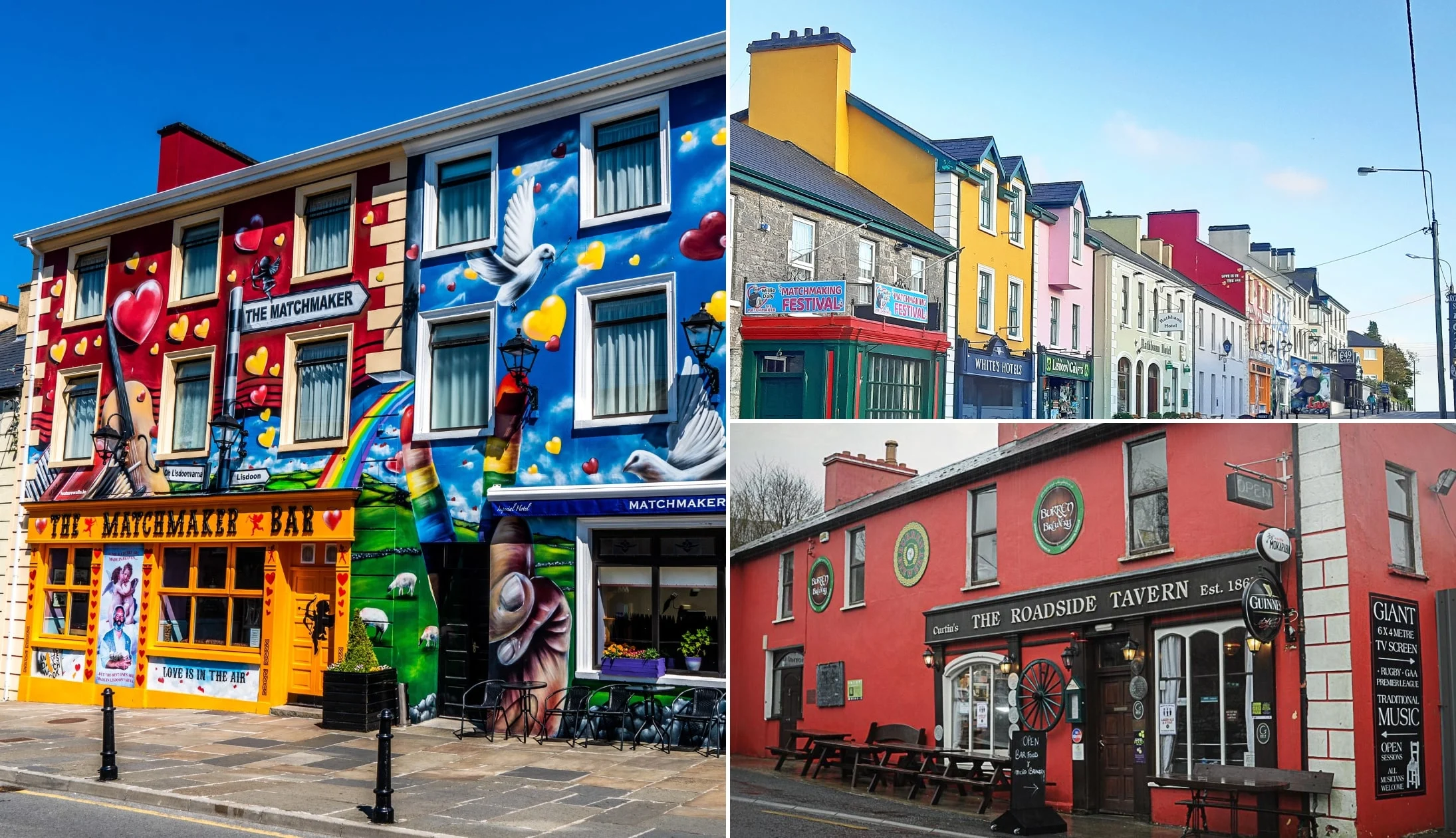
Photo left: UpSwing Mediaa. Top right: Maria Ryan Donnelly. Bottom right: Failte Ireland
Lisdoonvarna is a charming and peaceful spa town and an excellent example of life in rural Ireland. However, that all changes during the famous annual Lisdoonvarna Matchmaking Festival, the largest in Europe. Each September, it attracts around 40,000 hopeful singletons in search of true love.
The Lisdoonvarna Matchmaking Festival takes over the bars, pubs, hotels and streets of Lisdoonvarna and takes place throughout the month of September. The festival boasts an impressive line-up of live music and dancing both midweek and at weekends.
If you’re visiting outside of September, chances are you’ll just drive by and hear the story of the festival.
Stop 8: Back to Galway

Photos via Blakes Bar Galway on FB
After another drive through breathtaking countryside, you’ll normally be back in the middle of Galway by 18:00, just in time for dinner, drinks, and entertainment.
Our dinner recommendations
For dinner, we’ve got a few stellar recommendations: Ard Bia, The Quay Street Kitchen, and Dela. Ard Bia is absolutely fantastic, but you need to book in advance for dinner.
The restaurant has a quirky interior and serves beautifully presented modern dishes.
The Quay Street Kitchen has a great selection of vegan and vegetarian-friendly dishes, and Dela has modern Irish cuisine on the menu.
Live music and trad bars
There’s some mighty pubs in Galway. After dinner, head out for drinks at either Tigh Neachtain or The Crane. Both are traditional pubs with a great atmosphere.
Trad music is an integral part of the city, with heaps of options to choose from. Our favourite spots are Crane Bar (mentioned above) and Tigh Chóilí.
Day 13: The trip back to Dublin

Photos via Shutterstock
This is your last full day in Ireland before flying home tomorrow. We have to double back on ourselves and head back to Dublin before making to return journey to Belfast the following day.
Grab breakfast at your accommodation, or head to Dela for a special treat. They do a range of breakfast and brunch classics, including a traditional full Irish fry, veggie breakfast options, and plenty of egg dishes.
However, the breakfast burger, complete with black pudding, is a must! If you have time to get down there before your train, you won’t regret it!
Recommended accommodation in Dublin
- Budget: Abigail’s Hostel (Temple Bar), Jacobs Inn (central hostel) and the Generator Hostel (short walk from the city)
- Mid-range: Dublin Skylon Hotel (just outside the city), Wren Urban Nest (Temple Bar) and the Harding Hotel (very central)
- Luxury: The Merrion (St. Stephen’s Green – very central) and The Westin (just off Grafton Street)
Stop 1: Galway Ceannt
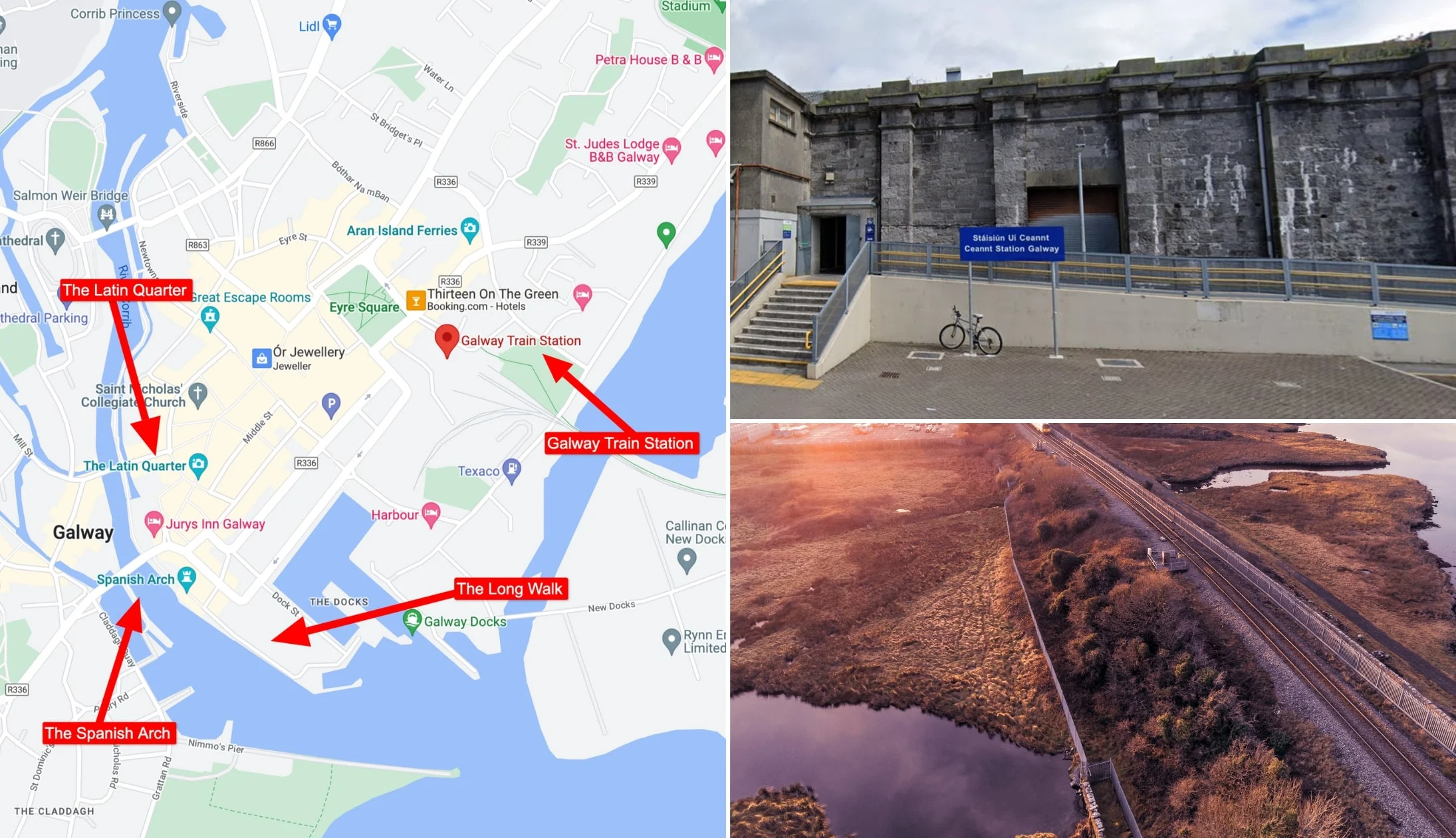
Bottom right photo: Shutterstock. Others: Google Maps
We’ll be getting the train from Galway to Dublin from Ceannt Railway Station, where you’ll find direct trains to Dublin running all day. If you do decide to treat yourself to breakfast at Dela, it’s just over a 10-minute walk to the station. Otherwise, the station is well-connected by public transport. The journey time is normally around two hours and twenty minutes or so.
Stop 2: Dublin Heuston

Photo left: Google Maps. Others: Shutterstock
Welcome back to Dublin! From Dublin Heuston you can easily grab a cab to your accommodation, though you might find a bus route that’ll get you where you need to be. Meanwhile, the LUAS Red Line runs through the station, heading into the city centre and beyond.
Stop 3: Kilmainham Gaol
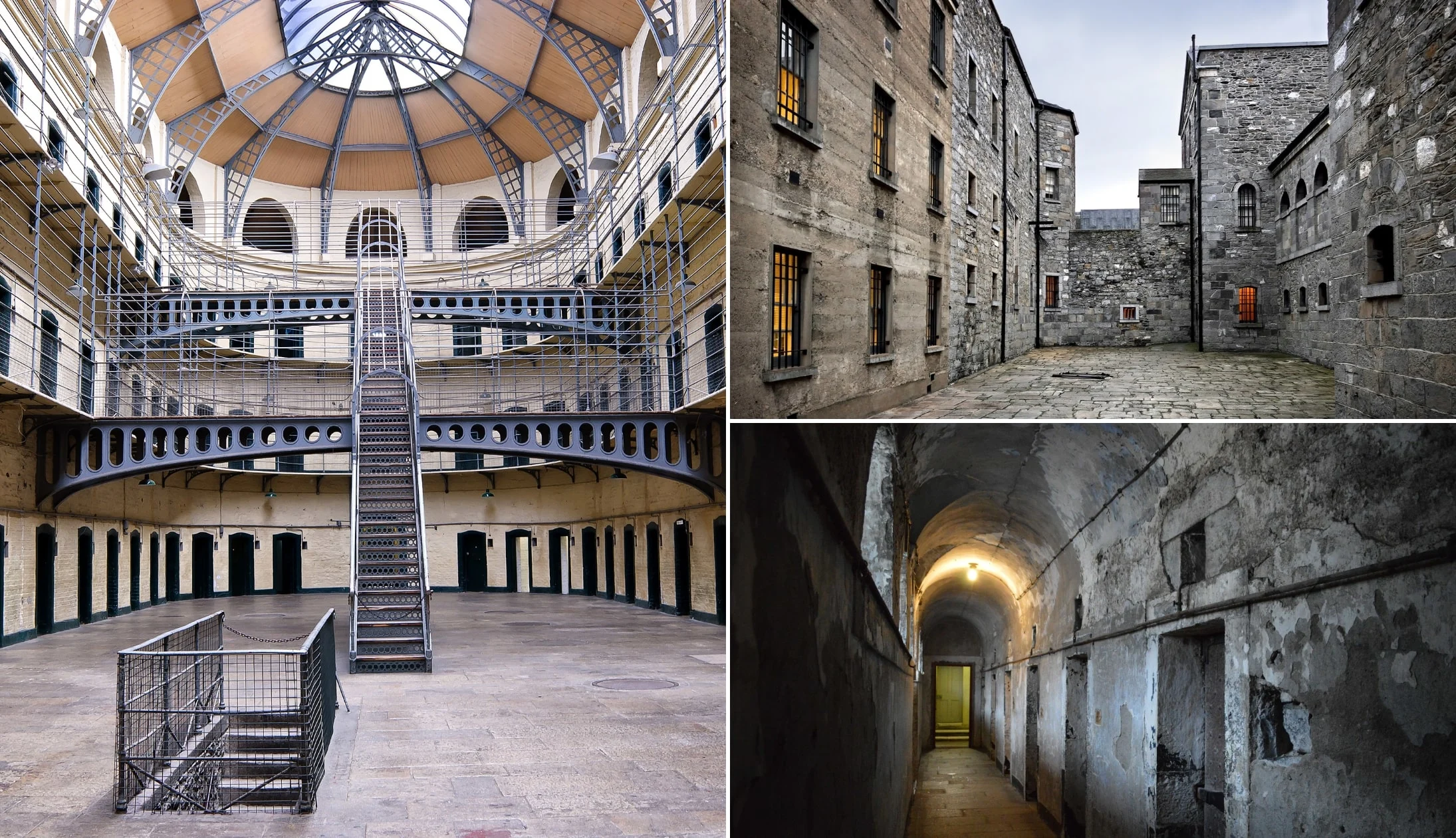
Photos via Shutterstock
Kilmainham Gaol is a short, 20-minute walk from Heuston. Built back in 1796 and initially known as the ‘new gaol’ in order to differentiate it from the dungeon it was replacing, the Kilmainham Gaol museum is a fascinating place to explore.
Over the course of its life as a working prison, it housed many a notable name while also playing witness to the executions of several leaders of the 1916 Rising.
On the tour, you’ll be immersed in a part of Ireland’s history that many of those who visit the island tend to miss. This is well worth doing but please book tickets in advance as it’s very popular.
Stop 4: Irish National War Memorial Gardens
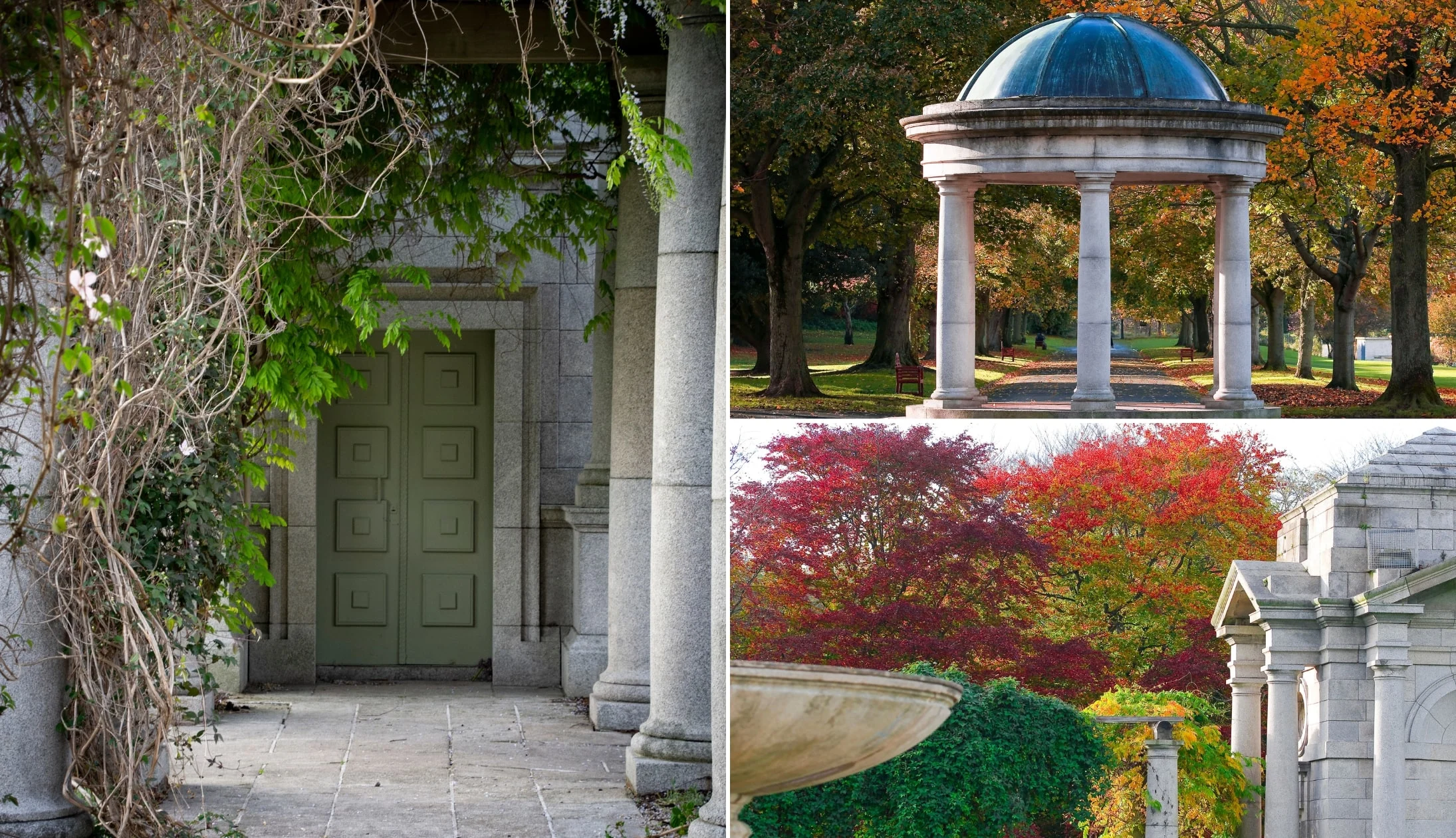
Photos via Shutterstock
The Irish National War Memorial Gardens are just under a 15-minute walk from Kilmainham Gaol and they’re the perfect place to suck down a bit of fresh air.
The gardens are dedicated to the 49,400 Irish soldiers who gave their lives in the Great War (1914 to 1918). The gardens are beautifully landscaped and were designed by the memorialist Sir Edwin Lutyens.
They’re free to enter and a great spot for a pre-lunch stroll.
Stop 5: Lunch at The Brazen Head
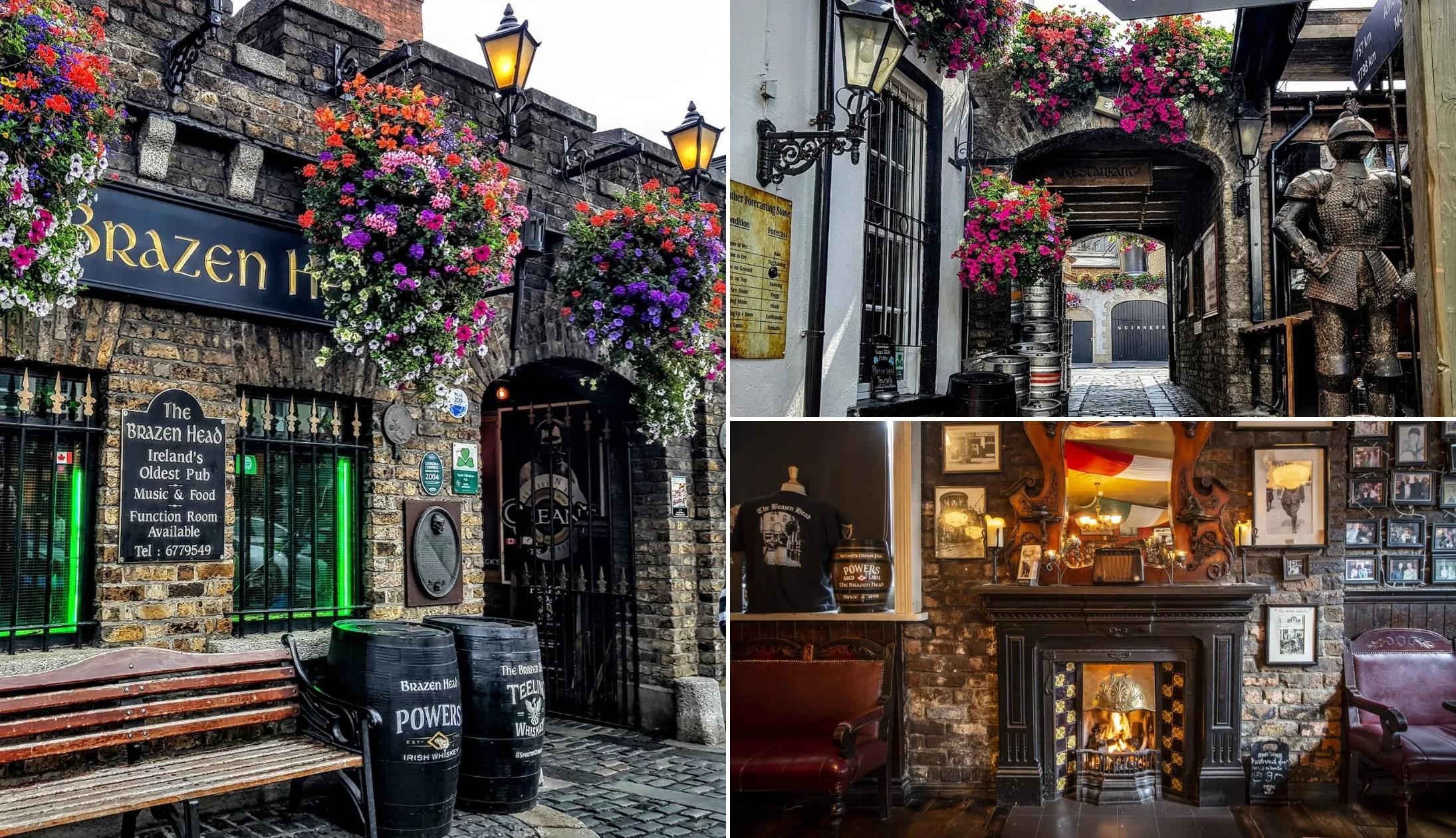
Photos via Shutterstock
Our next stop is lunch. Now, as this is an inactive itinerary, we’d recommend that you get a taxi to our next stop. We’re recommending that you take the 8-minute drive (it’s a 40-minute walk) to the Brazen Head – the oldest pub in Dublin.
The pub oozes old-world charm, with flagstone and hardwood floors, wood panelling, gigantic fireplaces, and plenty of cosy nooks and crannies.
It’s a popular spot, and you’ll find an array of beers on tap, as well as various spirits and wines on offer. For food, the menu offers a host of Irish classics, like beef and Guinness stew, as well as veggie options and some great seafood. Enjoy the food, soak up the atmosphere, and line your stomach for our next stop.
Stop 6: Jameson Distillery
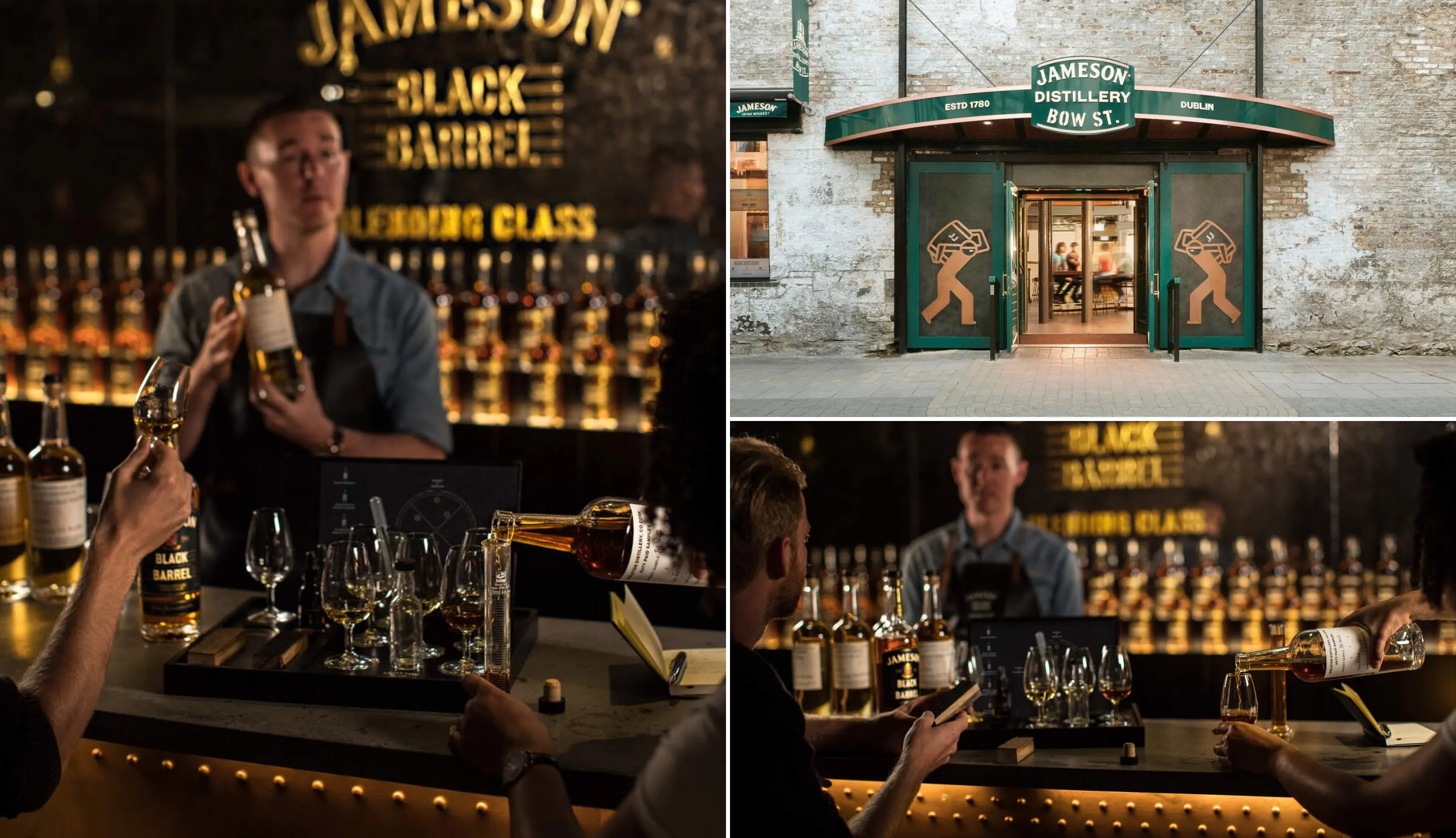
Courtesy Jameson Distillery Bow St, Dublin
The Jameson Distillery on Bow St. is the most popular of the many whiskey distilleries in Dublin.
It’s just a 7-minute walk from the Brazen Head and while it no longer produces whiskey (that’s reserved for the Midleton Distillery in Cork), the Bow St distillery offers a fantastic visitor centre with loads to discover and enjoy.
There are several different Jameson Distillery tours on offer, from the standard Bow St Experience to a Whiskey Cocktail-making masterclass (buy your ticket in advance here).
Stop 7: Dinner, drinks and live music

Different trad bars in Dublin. © Tourism Ireland
Once you’ve finished enjoying the various exhibitions and displays at the museum, it’s time to head into town one last time and enjoy your last evening in Ireland.
Our Dublin food recommendations
There’s endless excellent restaurants in Dublin. However, if we had to pick one or two…
The first would be The Bull and Castle – it’s always a good choice and it’s right across the street from the Christ Church Cathedral.
An FX Buckley steakhouse (a Dublin institution), they offer a great range of steaks cooked to perfection, paired with their incredible beef dripping chips.
The Vintage Kitchen is an alternative, but it’s best to book in advance as it’s incredibly popular. A BYOB (bring your own bottle) place, the food is phenomenal, with a small but diverse menu that features classic Irish dishes with a contemporary twist.
Our Dublin pub recommendations
There’s certainly no shortage of great pubs in Dublin. If you’re a fan of old-school pubs, follow our Dublin pub crawl guide – it contains a short route with some of the city’s finest trad bars.
McNeils on Capel Street is an authentic Dublin pub, complete with wood panelling, impromptu folk sessions, and plenty of beers on tap.
The Long Hall is another must-see. Part Victorian time capsule, part vibrant boozer, it enjoys a fantastic atmosphere and is one of the most visually stunning pubs in the city.
You’ll find trad sessions at Pipers Corner every night of the week. O’Donoghues Bar on Merrion Row is another must-visit, with vintage decor and frequent trad sessions. It’s best-known as the home of the Dubliners, who used to play here regularly.
The Celt on Talbot Street is another great choice for live music, and while it’s not always trad, the bands are normally really good.
Day 14: The trip to Belfast and home

Photos via Shutterstock
Today’s the day you fly home and leave Ireland behind. You can ignore this section if you’re flying home from Dublin Airport, but if you have a flight booked from Belfast, read on.
You’ve two options for getting back to Belfast from Dublin. While we recommend the bus, we’ll outline both options below. Just be sure to give yourself plenty of time. Ideally, you’ll have an afternoon or evening flight booked.
Option 1: Bus
If you choose to travel by bus, you’ll need to take two. One that’ll leave you in Belfast, and one that takes you to either George Best Belfast City Airport, or Belfast International Airport. Aircoach provides a range of frequent services to Belfast from Dublin City.
This service departs from Dublin O’Connell Street Station and drops you off at Belfast Glengall Street Station, just around the corner from Europa Bus Centre. From here, you can take either the Translink 600 Airport Express directly to George Best Belfast City Airport or the Translink 300 Airport Express to Belfast International Airport.
Option 2: Train
The train from Dublin to Belfast is only really worth using if you’re flying out from George Best Belfast City Airport. It departs from Dublin Connolly Station and takes you all the way to Belfast Lanyon Train Station in about two hours. From there, you can take another train to Sydenham Station, a 15-minute walk from the airport terminal.
And that’s a wrap on this road trip
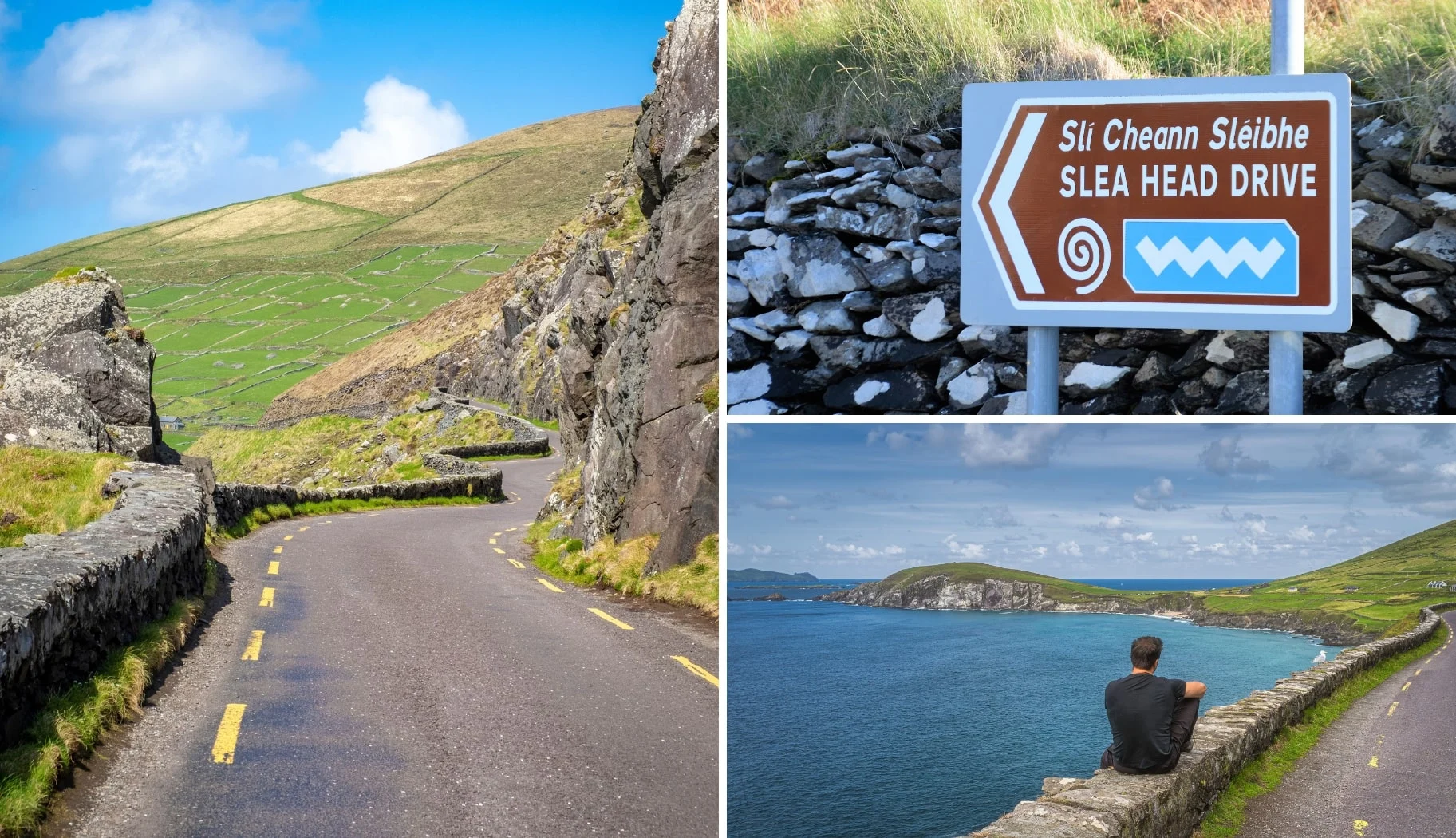
Photos via Shutterstock
We hope you found the above road trip guide useful. If you have any questions, ask in the comments below and we’ll do our best to help.
Or, if you’d like to browse our other Irish Road Trip itineraries, visit our Road Trip Hub – cheers!

